Ferguson, Missouri
description: city in St. Louis County, Missouri, United States
95 results

A Few Red Drops: The Chicago Race Riot of 1919
by
Claire Hartfield
Published 1 Jan 2017
As President Obama has reminded us, if we look closely we will see the “quiet riots” on “any street corner in Chicago or Baton Rouge or Hampton . . . born from the same place as the fires and the destruction . . . [that] happen when a sense of disconnect settles in and hope dissipates.” In 2015, this disconnect was once again forced into the light of day as violence surged in the streets of Ferguson, Missouri, New York City, and Baltimore. In 1919, the riot investigation commission concluded, “But for [white gangs] it is doubtful if the riot would have gone beyond the first clash.” In riots that have followed, poor blacks have been the ones to explode. But the riots have a common cause, as named by the civil rights leader Dr.
…
As fires burned in Baltimore, a five-year-old black child worked with neighbors and volunteers, sweeping up the debris, a small beginning toward picking up the pieces of her community. A black pastor worked with white businessmen to plan rebuilding of a Baltimore community center destroyed in the riot. In Ferguson, Missouri, artists, black and white, came together to paint murals of hope on boarded-up businesses. In New York, Chicago, and all across America, successful adults share their knowledge about the work world with middle-and high-schoolers. Police officers volunteer to read to students in public schools.
…
F. to, 41–42; new businesses in, 39; Packingtown in, 35–36; prejudice in, 37–38; racial tensions in, 121–127; “Refined” in, 29; “Respectables” in, 30; “Riffraffs” in, 30; schools in, 92; skyline of, 14–15; transportation in, 36; transport of dressed meat from, 43; Union Stock Yard in, 39, 41; wage scale in; white immigrants in, 35 Chicago Harbor, 66 Chicago race riot (1919), 140–146; Barnett’s conference on, 151; Black Belt in, 149, 150, 152–153; black workers in, 149, 149, 150, 152; bringing in of soldiers, 153; bringing of justice following, 164–165; choices for Chicago following, 162–163; commission investigating, 163, 168–169; continuance of violence after, 165–166; deaths in, 148, 149, 150, 153, 161; destruction in, 157–160, 158, 159; gang actions in, 147, 150, 153, 157–158; grand jury following, 164–165; indictments in, 163; injuries in, 148, 150, 161; Lithuanian community in, 157–160; militia and, 151, 160; mobs with bricks in, 118–119; Packingtown in, 157, 158, 158–159; police actions in, 145, 145–146, 148, 150, 153–154, 157; private security guards in, 148–149; progress following, 167–168; rain in, 153; ratcheting up in, 147–150; Thomson’s tour of area, 151–152; union leadership and, 156; white youths in, 147, 148; wrecked house in, 152 Chicago River docks, 65–67 Christiana Resistance, 23 Clarke, Dorothy, 9 Colored Men’s Library Association, 32 Consumers Ice Company, 7 Cour, Jan, 9 Crawford, James, 140 Culinary Alliance, strike by, 31 D Democratic Party, 39, 51 Dichter, Elsie, 9 Dismond, Binga, 80 Donnelly, Michael, 68, 69, 74 Drake, St. Clair, 29–30 Dunbar, Paul Lawrence, 3 E “Economically Dispossessed,” 30, 61 Efficiency Clubs, 105, 155–156 Eighth Infantry Regiment, 79–83, 127, 129 F Ferguson, Missouri, race violence in, 168, 169 Fifteenth Amendment, 25 Fifty-Fifth Street beach, 12 Firemen, black, 62 Fitzgerald, John, 124–125, 138–139 Fitzgerald, Joseph, 59 Fitzpatrick, John, 121 Ford, Henry, 47 Foster, William Z., 121, 124 Fourteenth Amendment, 25 Freer, L. C., 19 G Gangs, 57–58, 109, 136, 168–169 Gleeson, Ann, 8 Glick, Frieda, 9 Great Gate of the Union Stock Yard, 71, 136, 143, 144, 167 Great Migration, 85–106 H Harris, John Turner, 1, 5–6, 7, 10–12, 86, 140, 160, 165 Harrison family, 133–134 Henderson, Mr., as railroad worker, 89–90, 94–96 Henneberry, Bernice, 8 Highbinders (Chinese tongs), 57 Hill, T.
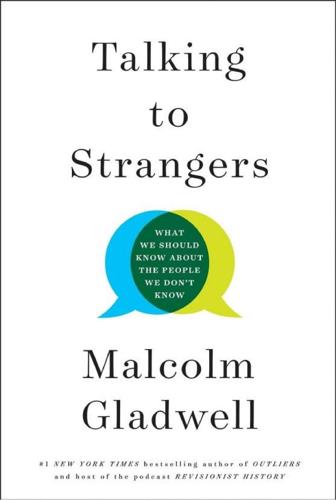
Talking to Strangers: What We Should Know About the People We Don't Know
by
Malcolm Gladwell
Published 9 Sep 2019
Three days later, she committed suicide in her cell. 2. The Sandra Bland case came in the middle of a strange interlude in American public life. The interlude began in the late summer of 2014, when an eighteen-year-old black man named Michael Brown was shot to death by a police officer in Ferguson, Missouri. He had just, allegedly, shoplifted a pack of cigars from a convenience store. The next several years saw one high-profile case after another involving police violence against black people. There were riots and protests around the country. A civil rights movement, Black Lives Matter, was born.
…
If something went awry that day on the street with Sandra Bland, it wasn’t because Brian Encinia didn’t do what he was trained to do. It was the opposite. It was because he did exactly what he was trained to do. 4. On August 9, 2014, one year before Sandra Bland died in her cell in Prairie View, Texas, an eighteen-year-old African American man named Michael Brown was shot to death by a white police officer in Ferguson, Missouri. Brown had been a suspect in a robbery at a nearby grocery store. When Darren Wilson—the police officer—confronted him, the two men struggled. Brown reached inside the driver’s window of Wilson’s patrol car and punched him. Wilson ended up shooting him six times. Seventeen days of riots followed.
…
A police officer approaches a civilian on the flimsiest of pretexts, looking for a needle in a haystack—with the result that so many innocent people are caught up in the wave of suspicion that trust between police and community is obliterated. That’s what was being protested in the streets of Ferguson: years and years of police officers mistaking a basketball player for a pedophile.2 Is this just about Ferguson, Missouri or Prairie View, Texas? Of course not. Think back to the dramatic increase in traffic stops by the North Carolina State Highway Patrol. In seven years they went from 400,000 to 800,000. Now, is that because in that time period the motorists of North Carolina suddenly started running more red lights, drinking more heavily, and breaking the speed limit more often?
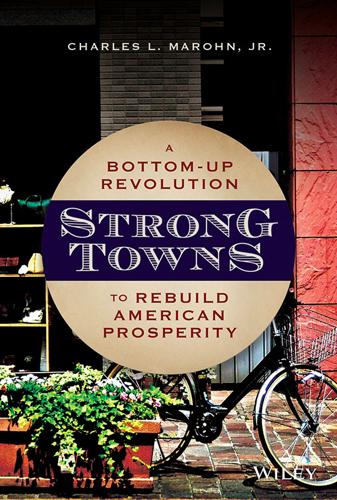
Strong Towns: A Bottom-Up Revolution to Rebuild American Prosperity
by
Charles L. Marohn, Jr.
Published 24 Sep 2019
Struggling with Constraints The liabilities from this experiment would now start to come due, particularly for local governments. The infrastructure investments being induced created a lot of transactions – a lot of economic growth – but the lack of productivity meant there wasn’t enough wealth to maintain everything once the financial sugar high wore off. Cities like Ferguson, Missouri, which was an affluent suburb of St. Louis in the first generation of the post-war boom, now had to sustain all those miles of roads, sidewalks, and pipes with a stagnating tax base not up to the challenge. Ferguson would go on to become notorious for decline and blight, a distinction it shares with most of America’s immediate post-war suburbs.
…
To make matters worse, aging cities routinely take on debt to compensate for their insolvency. Unlike federal and, to a lesser extent, state governments, debt levels are a genuine constraint for local governments. Too much debt crowds out other spending and only serves to magnify the despair of decline. There was a lot written about why Ferguson, Missouri, blew up in riots and a police crackdown following the shooting death of Michael Brown during a police incident. Most of this analysis involved race. Again, I’m not dismissing race as an accelerating factor, but Ferguson – one of the early post-war suburbs – is a case study in building a place designed to decline.
…
Index A Accounting, for infrastructure, 70–71 Acre, value per, 135, 138–142 Alexander, Christopher, 8 Altruism, in community living, 6–7, 26 American Society of Civil Engineers (ASCE), 65–67 Amish society, 217 Anderson, Monte, 160–161 Antifragile (Taleb), 193 Anti-fragile systems, 4, 6 Appreciation, for maintenance staff, 180–183 Arnade, Chris, 214–215 ASCE (American Society of Civil Engineers), 65–67 Assessment process, 77 Automobile reliance: development based on, 27–30 and modern city development, 111–112 productivity and, 140 B Barbell investment approach, 148–150, 150f Better Block Foundation, 159 Bezos, Jeff, 102 Bias, confirmation, 69, 74, 183–186 Bicycles, 112 Big box stores: alternative uses of sites of, 169 productivity for, 136–137 Big project mentality, 184–186 The Big Sort (Bishop), 207–208 “Bipartisan Placemaking: Reaching Conservatives” panel, 210 Bishop, Bill, 207–208 The Black Swan (Taleb), 59, 120 Blighted areas, productivity of, 131–134, 140 Boise State University, 126 Boys & Girls Club of Santa Ana, x Brainerd, Minnesota, 16f, 18f development of infrastructure in, 30–31 experimental development pattern in, 125–126 founding and development of, 16–17 productivity at downtown vs. edge of town, 134–138 traditional vs. modern development in, 131–134 Bretton Woods agreement, 90 Brooklyn, New York, 213–214 Brown, Aaron, 211 Brown, Michael, 114 Budgeting, by cities, 50–57 Building code deficiencies, addressing, 194 Buildings, complex vs. complicated, 20–23 Bureaucracy, 172 Burnham, Daniel, 122 Bush, George W., 209 C California, government decision making in, 197–198 Capital investments, return on, 171–172 Carbon-reduction benefits, 74 Carlson, Curtis, 121 “Carlson's Law,” 121 Cash flow: and debt, 98, 187–192, 188f–190f over life cycle of development project, 52–57, 55f, 56f CBO (Congressional Budget Office), 78–80 Centralization, 198 Chaos, order vs., 121–122 Chicken problem, 195 Cities, 37–62 abandonment of, 109–110 accounting for infrastructure by, 70–71 budgeting and growth in, 50–57 contracting of, 154 Detroit, Michigan, 60–62 development of Pompeii, Italy, 5–10 economic stability of modern, 104–106 engineer's view of, 11 experimental development pattern in, 126–127 filling gaps in, 160–163 and illusion of wealth, 57–60 incremental growth in founding of, 15–20 as infinite game, 38–41 and infrastructure, 44–50 maintenance required for infrastructure in, 115 modern development of, 12 revenues and expenses, 41–44 traditional vs. modern development of, 1–3 Cities and the Wealth of a Nation (Jacobs), 101–102 City Council of Santa Ana, ix, x City engineer, 177t City halls, 43–44 City planner, 177t Class: and neighborhoods, 21–22 and re-urbanization, 116 Clinton, Bill, 209 Clinton, Hillary, 63 Cognitive Architecture (Sussman and Hollander), 8 Cognitive discounting, 65 Collaboration, between government officials and citizens, 195–197 Commers, Jon, 45 Common infrastructure, 130 Community living, 199–218 differing opinions in, 206–212 and extended family, 200–201 as infinite game, 39–40 meaning in, 212–218 in neighborhoods, 202–203 in Pompeii, Italy, 6–7 walking in, 203–206 Complex, adaptive systems: human habitats as, 3–4 and incremental growth, 168 incremental growth of, 15–16, 18–19 rational decision making with, 120–123 Complex buildings, 20–23 Complicated buildings, 20–23 Complicated systems, 11–14 Confirmation bias, 69, 74, 183–186 Conflicts, dealing with, 206–212 Congress for the New Urbanism, 210 Congressional Budget Office (CBO), 78–80 Constraints: and economic stability, 93–96 and gold standard, 90 growth as, 100 prudent, for investments, 164–168 removal of, in modern world, 59–60, 96 Construction costs, 136–137 Consumption, 215–216 Costa Rica, 126–127 The Crash Course (Martenson), 108 Critical systems, 182–183 Cross-generational civic collaboration, 187 D Dallas, Texas, 159 Darwin, Charles, 8 The Death and Life of Great American Cities (Jacobs), 8 Debt: and cash flow, 98 for federal government, 186 for government, 96–100 for local government, 113–114 for place-oriented government, 186–192 for projects with quality-of-life benefits, 187 for state government, 113–114 Debt to income ratio, 97 Decision making: rational, see Rational decision making subsidiarity in, 195–198 Default, on municipal debt, 191 Deneen, Patrick, 211 Density, as urban planning metric, 128–129 Depression economics, 86–89 Detroit, Michigan, 60–62 land values in, 24 renewal of urban, 117–119 Development projects: cash flow over life cycle of, 52–57, 53f, 55f, 56f decisions about failing, 115–120 Diamond, Jared, 58, 59, 84 Dig Deep, 211 Donjek, 45 Downtown, productivity of, 134–140, 139t, 143–144 Duany, Andres, 195 Duggan, Mike, 119 Duncanville, Texas, 160 E Economic development department, 178t Economics: and benefits of infrastructure spending, 72–73 in depressions, 86–89 Economic stability, 83–106 and auto-oriented development, 29–30 and constraints, 93–96 creating, 85–86 and depression economics, 86–89 and focus on growth, 100–102 following World War II, 89–91 and government debt, 96–100 growth vs. wealth, 102–104 of modern cities, 104–106 and post-war boom, 91–93 risk management strategies for, 83–85 Edges, 7–8 Edges of city: center vs., 28 city infrastructure necessary for, 115 productivity of, 134–138, 143–144 Efficiency, designing for, 174–176 Ehrenhalt, Alan, 116 Empire State Building (New York, New York), 129 Employment, in productive places, 133 England, 83 Expenses, and revenues, 41–44 Extended family, 200–201 F Failure, slow, 110–115 Failure to Act (ASCE report), 65–67 Family, extended, 200–201 Fannie Mae, 92 Farmers, risk management strategies of, 83–84 Federal Funds Rate, 97 Federal government: debt for, 186 impact of infrastructure on, 79 Federal Housing Administration (FHA), 89, 92 Federal Reserve, 99 Feedback, in local governments, 173–174 Ferguson, Missouri, 93, 114 FHA (Federal Housing Administration), 89 Financial status, local government's understanding of, 190–191 Finished states, neighborhoods built to, 21–23 “First ring” suburbs, 94 Form-based codes, 193–194 Fragile systems, 4 Franchises, productivity of, 133–134 Freddie Mac, 92 Future, predicting needs for, 19–20, 120–121 G Gaps, in cities, 160–163 Garcia, Anthony, 158 Gas tax, 75 Gawron, Stephen, 161 Gehl, Jan, 8 “General Theory of Walkability,” 206 Gentrification, of urban neighborhoods, 117 Goals, of individuals vs. communities, 40–41 Goland, Carol, 84 Gold reserves, 94 Gold standard, as basis for trade, 90 Government debt, 96–100 Government policies, prioritizing traffic, 29 Great Depression, 87–89, 191 The Great Inversion and the Future of the American City (Ehrenhalt), 116 Great Society, 93 Growth: economic stability and focus on, 100–102 in municipalities, 50–57 as objective of local governments, 176 wealth vs., 102–104 H Haidt, Jonathan, 208, 209, 215 Hardship, response to, 172–174 Hasidic Judaism, 213–214, 217 Hemingway, Ernest, 4 Henwood, Doug, 79 Hierarchies, in local government, 174–176 Highland neighborhood (Shreveport, Louisiana), 220 Highland Park (Shreveport, Louisiana), 220 High land values, 27–30 High Point, North Carolina, 161 Highway bypass corridor, 134–138 Hollander, Justin B., 8, 9 Homeless shelters, xi Homes, changing, 20 Hoover, Herbert, 87 Horizontal expansion, in California, 197 Housing: in California, 197–198 post-war changes in, 92 preference for single-family, 144–145 Housing authority, 178t How to Live in a World We Don't Understand (Taleb), 59 Human habitats, 1–14 as complex, adaptive systems, 3–4 in North America, 1–3 spooky wisdom in, 5–10 as systems that are complicated, 11–14 Hunter-gatherer existence, 58 Hurricane Katrina, 102–103 Hurricane Rita, 102–103 I Illusion of Wealth: and constant maintenance, 152 human response to, 57–60 Illusion of Wealth phase of development, 143 Improvement to Land (I/L) Ratio, 25, 25f, 117 Improvement value, 23–25, 25f Incentives, to fix problems, 113 Income taxes, 72 Incremental changes, implementing, 122–123, 156–157 Incremental growth, 15–35 and complex, adaptive systems, 168 complex vs. complicated buildings in, 20–23 constraints on, 164 and founding of cities, 15–20 good and bad development in, 34–35 and high land values, 27–30 and neighborhood renewal, 23–27 private and public investment in, 30–34 in traditional habitat development, 2 Infill projects, 160 Infrastructure, 63–81 accounting for, 70–71 and American Society of Civil Engineers, 65–67 calculating returns on investment for, 67–69 Congressional Budget Office on, 78–80 development of, 30–34 as investment, 41–42 in modern development, 32 and municipalities, 44–50 perception of need for more, 63–65 ratio of private to public investment in, 129–130 real return on investment, 74–78 secondary effects of, 72–74 Infrastructure Cult: development of, 65–67 paper returns calculated by, 69 Insolvency, 187–192 Interstate highway system, 92 Investment(s), 147–170 barbell investment approach, 148–150 capital, 171–172 conventional vs. strong towns thinking about, 185–186, 186t in filling gaps in cities, 160–163 impact of regulations on, 194 infrastructure as, 41–42 little bets, 150–160 low-risk investments with steady returns, 150–155 prudent constraints for, 164–168 public and private, 30–34, 31f, 32f returns on, see Return on investment in Suburban Retrofit, 168–169 Italy, walking in, 203–204 J Jacobs, Jane, 8, 101–102 Japan, 76 Jimmy's Pizza, 161–162 Job creation, 49, 72–73 Johnson, Neil, 12, 13 Junger, Sebastian, 216–217 K Keynes, John Maynard, 88 Keynesian economic policies, 88 Krugman, Paul, 63, 78 Kunstler, James, 110–111 L Lafayette, Louisiana, 101, 141–144, 151 Landau, Moshe, 213–214, 217 Land value: in declining suburbs, 113 and interstate highway project, 92 and neighborhood renewal, 23–25, 25f in neighborhoods with different types of properties, 165–167, 165f, 166f and suburban development, 27–30 Learning, from previous local investments, 187 Legacy programs, 173 Lifestyle choices, 202, 205–206 “Lifestyle enclaves,” 208 Little bets, 16–18, 150–160 Local economy: as basis for national economy, 101–102 national vs., 103 Local government: changes in, to maintain economic stability, 105–106 debt taken on by, 113–114 funded by state government, 95 impact of infrastructure on, 79–80 profit run by, 37–38, 147 relationship of state and, 198 Long declines, 110–115 “Long emergency,” 110–111 Long Recession of the 1870s, 77 Los Angeles, California, xi Lovable places, 10 Low-risk investments, with steady returns, 150–155 Lydon, Mike, 158 M Maintenance: ability to keep up with, 109 cash-flow debt to cover, 188–192, 188f–190f of development projects, 52–57 of infrastructure, 46–49 need for constant, 151–154 in place-oriented government, 180–183 required for single-family homes, 112 Maintenance department, 179t Manhattan, New York, 24 Martenson, Chris, 108 Meaning, life of, 212–218 Middle class, 92, 93, 144–145 Milan, Italy, 164 Mills Fleet Farm, 134–137 Minicozzi, Joseph, 138–140, 161 “Minnesota Miracle,” 95 Mixed-use neighborhoods, 163, 169 Modern city development: as high-risk investments, 149 as lead by pubic investment, 34–35 productive places in, 131–134 Modern Monetary Theory, 99 Mortgages, during Great Depression, 88–89 Mouzon, Steve, 10, 113 Muskegon, Michigan, 161 N National Association of Home Builders, 136 National economy, local vs., 103 Natural disasters, 102–103 Neighborhoods: abandonment of, 109–110 built to finished states, 21–23 changing in post-war era, 92–93 community living in, 202–203 decline of, 113 gentrification of urban, 117 mixed-use, 163, 169 renewal of, and incremental growth, 23–27 responses to improvements in, 158 structured around religions, 214 in transition sections of Detroit, 118 Neighbors, being involved with, 202–203 New Deal economics, 87–88 New Orleans, Louisiana, 102, 182 Nixon, Richard, 94 Noncritical systems, 182 O Oak Cliff neighborhood (Dallas, Texas), 159 Obama, Barack, 63 Obesity, among Pacific Islanders, 58–59 Options Real Estate, 160 Orange County, California, xi–xii Order, chaos vs., 121–122 The Original Green (Mouzon), 10, 113 Oroville dam (California), 182 Oswego, New York, 152 Oswego Renaissance Association, 152 P Pacific Islanders, 58–59, 183–185 Paper returns on investment, 67–69 Paradox of Avarice, 104 Paradox of Thrift, 88, 104 Pareidolia, 8–9, 9f Parks department, 178t Party analogy, 34–35 A Pattern Language (Alexander), 8 Pension funds, 56–57, 70, 98 Pequot Lakes, Minnesota, 44–46 Perception, of need for more infrastructure, 63–65 Personal preferences, 144–145 Peru, 84 Place-oriented government, 171–198 and confirmation bias, 183–186 designed for efficiency, 174–176 focus on broad wealth creation by, 176–180 maintenance as priority for, 180–183 and regulations, 192–194 response to hardship by, 172–174 subsidiarity in, 195–198 understanding of debt by, 186–192 Political differences, 207 Pompeii, Italy, 5–10 Post-war boom: and economic stability, 91–93 modern city development established in, 12 Power, subsidiarity principle and, 196–198 Prayer of Saint Francis, 218 Prioritization, of maintenance, 180–183 Private development, 40 Private investment: private to public investment ratio, 129–130 public and, 30–34, 31f, 32f Private sector (businesses): response to economic hardship in, 172–173 small, see Small businesses Problem solving, 13–14 Productive places, 125–146 downtown vs. edge of town, 134–138 in past, 125–127 and personal preferences, 144–145 productivity calculations for, 128–130 return on investment, 141–144 traditional vs. modern development in, 131–134 value per acre, 138–141 Productivity, calculations of, 128–130 Project teams, 179–180 Property taxes, 49 Property value, 23–25, 25f Public health, and walking neighborhoods, 205 Public investment: private and, 30–34, 31f, 32f private to public investment ratio, 129–130 returns required for, 147 Public safety department, 179t Q Quality-of-life benefits, 187 Quantitative Easing, 99 R Railroad companies, 77 Rational decision making, 107–123 about failing development systems, 115–120 about long declines, 110–115 within complex, adaptive system, 120–123 and lack of single solution, 107–110 Real return on investment, 74–78 Redevelopment, financial productivity after, 131–134, 139–140, 139t Redundant systems, 182 ReForm Shreveport, 219, 220 Regulations: from place-oriented government, 192–194 and subsidiarity principle, 195–198 Repealing regulations, 192–193 Republican Party, 209 Request for proposal (RFP), 50 Residents, learning concerns of, 156–157 Resources: assumption of abundance of, 12–14 wasted, in modern development, 19 Retreats, strategic, 108–109 Return on investment, 141–144 calculating, for infrastructure, 67–69 for capital projects, 171–172 in cities, 44 and debt taken on by local governments, 187 low-risk investments with steady, 150–155 paper, 67–69 real, 74–78 social, 78–79 Revenues, and expenses, 41–44 RFP (request for proposal), 50 The Righteous Mind (Haidt), 208 Risk management strategies, 83–85 Roaring Twenties, 87 Roberts, Jason, 159 Roosevelt, Franklin, 87, 88 Rotary International, 203 S St.
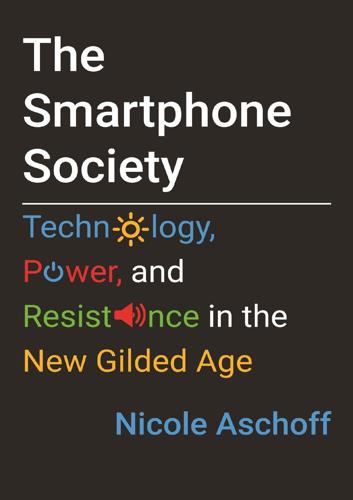
The Smartphone Society
by
Nicole Aschoff
Politics is a dynamic relationship in which people and institutions from above and below create, reproduce, enforce, and change the rules, structures, and norms of society. With our phones in hand, we’re doing much more than obsessively scrolling through our news feeds. We’re transforming the way politics is done. In November 2014, Synead Nichols was furious. Darren Wilson, the cop who had gunned down Michael Brown Jr. in Ferguson, Missouri, in August of that year was found innocent by a grand jury. Nichols later told Essence magazine, “I kept thinking, what do I do? I said, You know what? Facebook. Arab Spring did it, Brazil did it, Mexico did it, so why can’t New York do it?” Nichols made a Facebook group and added her friend Umaara Elliot as a host.
…
Cullors, Garza, and Opal Tometi, executive director for Black Alliance for Just Immigration, an immigrant rights group in New York City, saw the hashtag as a tool to build awareness and solidarity.34 The hashtag drifted around on social media until Michael J. Brown Jr. was gunned down by a police office in Ferguson, Missouri, in the summer of 2014. Brown’s body lay in the street for hours as police prevented even his parents from going to him; Brown’s mother, Lezley McSpadden, had to identify her son’s body from a video someone had captured on their phone. It was a tipping point for Black Ferguson residents, who had long been targeted for abuse by city officials and law enforcement.
…
“Abrams, Jenna,” 109 ACLU (American Civil Liberties Union), 21, 22, 96, 148–49, 153, 176n28 Acxiom, 72, 77 addiction to social media, 65–69 Admiral, 78, 79 Adolfsson, Martin, 84 AdSense, 52 Advanced Research Projects Agency Network (ARPANET), 80 advertising: data collection and, 76–77, 83–84; on Facebook, 47–48; on Google, 52; political, 149 AdWords, 52 Afghanistan, politics in, 95–96 age discrimination, 149 AI Now, 129, 157 Airbnb, 42, 119, 120, 148 al-Abed, Bana, 90 al-Abed, Fatemah, 90 Aldridge, Rasheen, 91 algorithm(s): for consumer categories, 77; in dystopian future, 129–30, 131; in politics, 109–10; recommender, 67; search, 51–52, 53 algorithmic accountability, 151, 157–59 “algorithmic management,” 32–34 Alibaba, 4, 42 Allard, LaDonna Brave Bull, 104 aloneness, 7 Alphabet, 41, 55, 76, 122, 150 Alpha Go Zero program, 122 alter-globalization activists, 91 Amazon: acquisitions by, 41; and CIA, 81; in Europe, 150; marketplace model of, 150; as monopoly, 53–54; and new capitalism, 118–19; as new titan, 38–41, 44, 45; power of, 54–55; Rekognition software of, 149; tax evasion by, 49; warehouse workers at, 31–32, 33, 34; working conditions at, 46 Amazon Shopping, 30 Amazon Web Services (AWS), 41 American Academy of Pediatrics, 9 American Association of People with Disabilities, 55 American Civil Liberties Union (ACLU), 21, 22, 96, 148–49, 153, 176n28 American Dream, 120–21 American Library Association, 55 amplification, 91 analog networks, in cognitive mapping, 143 Android operating system, 39, 41, 53, 69, 70–71, 72 “angel investor,” 120 Ant Financial, 42 antidiscrimination laws, 149 antitrust laws and practices, 43–44, 52–53, 55, 150 AOL, data collection from, 81 app(s): top ten, 38 “app dashboard,” 69 app jobs, 30–34, 35, 137 Apple: data collection from, 81; in Europe, 150; low-paid workers at, 147; as new titan, 42; refusal of “right to repair” by, 155; supply chain of, 28–29; tax evasion by, 49–50; working conditions at, 46 appropriation, frontiers of, 73–76 appwashing, 34, 35, 146 “Arab Spring,” 97 Ardern, Jacinda, 93 ARPANET (Advanced Research Projects Agency Network), 80 artificial intelligence, 121–22, 123, 130 aspirational story, 120 assembly workers, 28–29 Athena, 42 AT&T, 29, 42, 43, 71 attention, 7 Audible, 41 Australia, justice in, 21 automation, 128, 131 automobiles, analogy between smartphones and, 2–3, 161, 162 autonomy, 117, 124 AWS (Amazon Web Services), 41 bad behavior, 138–39 Baidu, 42 Bannon, Steve, 105 Barlow, John Perry, 124 Bellini, Eevie, 24 Berners-Lee, Tim, 40 Beyoncé, 61, 107 Bezos, Jeff, 38, 44, 49, 54, 118–19 Bharatiya Janata Party (India), 93 big data, 76, 83–84, 145 Binh, Huang Duc, 95 black(s): police violence against, 17–23, 35, 169n6, 169n13 Blackberry, 6 “black-box algorithms,” 151 Black Lives Matter (BLM), 89–90, 100–102, 104, 107, 111 Blades, Joan, 91 blockchains, 124 body cameras worn by police, 22 book publishers, 172n40 boredom, 11 bots, 109 Boyd, Wes, 91 boyfriend, invisible, 24 Boyle, Susan, 63 Brazil, politics in, 97 Brin, Sergei, 38, 41, 54, 119, 148 Brown, Michael, Jr., 22, 89–90, 91, 101–2 Buffett, Warren, 41 Bumble, 23, 91 Bumblehive, 81 Burke, Tarana, 108 Bush, George W., 99 Calico, 41 California Consumer Privacy Act, 150 “CamperForce,” 31–32 Canales, Christian, 21 cancer, 7 candidates, social media use by, 103–5 Capital G, 41 capitalism: chameleonesque quality of, 116–17; crony, 105; and frontiers, 72–79; maps of, 143–44; neoliberal, 69, 102, 112–13, 117–18, 144–45; smartphones as embodiment of, 161–62; spirit of, 115–18; surveillance, 8 capitalist frontiers, government and, 80–81 carbon footprint, 82, 175n77 Carnegie, Andrew, 37, 54, 57 Castile, Philando, 20, 35 CatchLA, 62 caveats, 14–15 celebrities, in digital movements, 91 celebrity culture, 64–65 censorship, 95 Center for American Progress, 55 Center for Responsive Politics, 56 Central Intelligence Agency (CIA), 81, 95, 96, 138, 175n74 centrism, 112 Chadaga, Smitha, 89 change agent, 12 Chan, Priscilla, 56 Chan Zuckerberg Initiative (CZI), 56 Charles, Ashley “Dotty,” 109 Charlottesville, Virginia, 106–7, 111 Chesky, Brian, 120 children, 8, 9, 11–12, 84 China, 4, 42, 94–95 Chronicle, 41 CIA (Central Intelligence Agency), 81, 95, 96, 138, 175n74 Cienfuegos, Joaquin, 20–21 City of the Future, 124 Clinton, Bill, 43, 91, 99 Clinton, Hillary, 50, 107 Clooney, George, 91 “the cloud,” 82 cloud storage facility, 81 coercive relationships, 137–38, 152–54 cognitive maps and mapping, 143–59; algorithmic accountability in, 151; antidiscrimination laws in, 149; coercive and unjust relationships in, 152–54; defined, 143; digital and analog networks in, 143; digital commons in, 156–59; ecological externalities in, 145; economic implications in, 151–52; internet access for poor and rural communities in, 149–50; lacunae in, 145; low-paying jobs in, 146–49, 153–54; monopoly in, 150; political advertising in, 149; power in, 145; and principles of smartphone use, 152–59; privacy in, 150–51; selfish or immoral behavior in, 154–56; sociotechnical layers of, 145 collateral damage, 96 collective action, 155–56 Comcast, 29, 71 comic books, 11 commodification of private sphere, 144 Communications and Decency Act, 51 communities, on-line, 64 community broadband initiative, 149–50 Community Legal Services, 171–72n32 Compass Transportation, 147 Computer and Communications Industry Association, 55 “connected presence,” 6 connection, 44, 63–64, 143, 162 connectivity, 122 Connolly, Mike, 94 consumer(s): vs. producers, 28–29 consumer categories, 77 consumer scores, 77–78 consumption, 83, 138–39 content algorithms, 51–52 content creation, 74–79 contingent workers, 30 convenience, 29–30, 35 Cooperation Jackson, 155 cop-watch groups, 20–21 “The Counted,” 19, 169n6 “creative monopoly,” 44 creativity, 117 credit scores, 78–79 creepin”, 65 critiques, 7–8 crony capitalism, 105 CrushTime, 24 Cruz, Ted, 92 “Cuban Twitter,” 95 Cucalon, Celia, 48 Cullors, Patrisse, 100–102 cultural capital, 62 “custom breathers,” 69 “customer lifetime value score,” 78 “cyberspace,” 82 CZI (Chan Zuckerberg Initiative), 56 Dakota Access Pipeline Protests, 103–4, 110 dashboard apps, 132 data brokers, 72, 77 data centers, energy use by, 82 data collection, 70–72, 83–84, 137, 150–51, 156–59 data mining, 76–79 data ownership, 135–36 “data smog,” 72 Data & Society, 151, 179n20 data vendors, 76 datification, 156–57, 161 dating apps, 23–27, 35 decentralization, 101–2, 120 decommodification, 156–57 DeepMind, 41, 79, 122, 157 Deliveroo, 32–33, 153 Department of Homeland Security, 149 Desai, Bhairavi, 146 Descartes, René, 67 Diallo, Amadou, 19 Diapers.com, 41 dick pics, 25 Dick’s Sporting Goods, 91 digital-analog political model, 104, 110–12, 145, 162 digital commons, 139–41, 156–59 digital divide, 28–29, 35 “digital exclusion,” 29 digital frontier, limits of, 82 digital justice, 17–23, 152, 157, 169n6, 169n13 digital networks, 143 digital platforms, 44 “digital redlining,” 29 “digital well-being,” 69 disconnection, 132–33 discrimination in housing, 47–48 divides, 17–36; built-in, 28–34, 35; related to justice, 17–23, 169n6, 169n13; related to sexuality, 23–27, 35 division of labor, 74–75 Dobbs, Tammy, 129 documentation, 62 domestic violence, 25 DoorDash, 33–34, 146–47 dopamine driven feedback loops, 67 double standard, 25–27, 35 drone warfare, 95 “dual economy,” 12–13 dumbness, 7, 9 “dumb phone,” 1, 8, 132, 167n15 dystopian future, 125–26, 128–30, 131 eBay, 147, 148 Echo Look device, 84 ecological externalities, 145 ecological limit of digital frontier, 82–83, 175n77 economic crisis (2008), 98–100, 117–18 economic divide, 13–14 economic implications, in cognitive mapping, 151–52 economic nationalism, 105 “ecosystems,” 40 Eddystone, 78 education, 13 Edwards, Jordan, 18 Egypt, 92, 97 elderly Americans, 63–64, 84 Electronic Frontier Foundation, 55, 124 Elliot, Umaara, 90 Ellison, Keith, 45 emails: vs. phone calls, 6; scanning of, 70–71 Emerson, Ralph Waldo, 133 employment relationships, 137 encryption, 81, 175n74 energy consumption, 151–52, 154–55; by physical elements of digital life, 82, 175n77 entrepreneurship, 120–21 environmental justice, 154–55 Epsilon, 72 Equal Credit Opportunity Act, 78 Estrada, Joseph, 90–91 Europe, American tech titans in, 150 European Union (EU), 49, 52–53, 150–51 experience economy, 62, 83 exploitation of labor, 75 externalization of work and workers, 31 Facebook: acquisitions by, 41; addiction to, 66–67, 69; and antidiscrimination laws, 149; credit ratings by, 79; data collection by, 71–72, 76, 81, 84; demographics of, 84; discrimination in advertising by, 47–48; employees organizing at, 148; in Europe, 150; Free Basics by, 41–42, 50; low-paid workers at, 147; managing impressions on, 63; as monopoly, 53–54, 172n46; and new capitalism, 124, 136; as news source, 50–51; as new titan, 38–39, 40, 41–42, 44–45; power and influence of, 56; tax evasion by, 49; time spent on, 60 Facebook Live, 84 Facebook Pixel, 72 “Facebook Revolution,” 97 facial recognition software, 129, 149 Fair Housing Act, 48 fake news, 50–51, 56 Federal Bureau of Investigation (FBI), 149 feedback loop, 66–67 “Feminist Five,” 108 feminist movement, 107–8 Ferguson, Missouri, 89–90, 101–2 Fields, James Alex, Jr., 106 filter bubbles, 53, 109–10 financial crisis (2008), 98–100, 117–18 fintech companies, 78–79 flexibility, 117 FlexiSpy, 25 FOIA (Freedom of Information Act) requests, 149 food delivery apps, 32–33 food pictures, 62 forced arbitration, 148 Ford, Henry, 37, 124 Fordlandia, 124 Ford Motor Company, 37, 38, 44 Fowler, Susan, 126–27 FoxConn, 28 framing of analysis of cell phones, 12–14 Free Basics, 41–42, 50 Freedom of Information Act (FOIA) requests, 149 “free market” competition, 98 free speech, 138 Friedman, Patri, 124 frontier of social media, 59–86; addiction to, and fears about, 65–69; and big data, 82–86; characteristics of, 59–65; and government, 80–81; and privacy, 69–72; and profit, 72–79 Fuller, Margaret, 133 Galston, Bill, 45 gamification, 23–24, 146 Garza, Alicia, 100–102 Gassama, Mamoudou, 115 Gates, Bill, 56, 130 General Data Protection Regulation (GDPR), 150–51, 156 Geofeedia, 96 geopolitics, 95–96, 144 Germany, 3 Ghostbot, 24 gig economy, 137 Gilded Age, 1–2, 11, 54 global divides, 28–29 globalization, 98 Global Positioning System (GPS), 5 Gmail, 38, 71 Goodman, Amy, 104 Google: addiction to, 69; advertising on, 76; companies owned by, 41; data collection by, 70–71, 76, 81, 150; employees organizing at, 147–48; in Europe, 150; immoral projects at, 154; and intelligence agencies, 81; lobbying by, 55; low-paid workers at, 147; molding of public opinion by, 55; as monopoly, 52–54; and new capitalism, 119–20, 123, 136; as new titan, 38, 39, 40, 41, 43–45, 56; for online search, 52; power and influence of, 55–56; research funding by, 55; “summer camp” of, 55; tax evasion by, 49, 50; use by children, 84; working conditions at, 47 Google Calendar, 71 Google Chrome browser, 53 Google Drive, 71 Google Earth, 123 Google Fiber, 41 Google Images, 131 Google News, 50 Google Play, 72 Google Search, 38, 41, 53 Google Shopping Case, 52–53 Google Translate, 10 government: and capitalist frontiers, 80–81; and Silicon Valley, 124; surveillance by, 137–38, 144, 148–49 government tracking, 94–95 GPS (Global Positioning System), 5 Grant, Oscar, III, 18 Gray, Freddie, 22, 96 Great Pessimism, 118, 119 Great Recession, 118 Greece, 97 greenhouse emissions, 82 Green New Deal, 103, 151–52, 154, 179n22 Greenpeace, 157 Grindr, 23 gun violence, 90, 91, 110, 111 GV, 41 habitus, 62 Happn, 23, 24 Harari, Yuval Noah, 129–30, 132 Hearst, William Randolph, 50 Herndon, Chris, 56 Heyer, Heather, 106 Hirschman, Albert, 133 household expenses, 13 housing, discrimination in, 47–48 human, fear of becoming less, 67–68 iBeacon, 78 IBM, 149 ICE (Immigration and Customs Enforcement), 21, 148 ICT (information and communication technologies) sector, energy used by, 82 ideals, 120 “identity resolution services,” 77 ILSR (Institute for Local Self-Reliance), 149–50, 153 Immigration and Customs Enforcement (ICE), 21, 148 immoral behavior, 138–39, 154–56 impressions, management of, 62–63 income discrepancy, 12–13 independent contractors, 33–34, 137, 153 India, 4, 42, 60, 93 individualism, 117, 118 information and communication technologies (ICT) sector, energy used by, 82 injustice, 17–23, 169n6, 169n13 In-Q-Tel, 96 insta-bae principles, 61–62 Instacart, 30, 146 Instagram: addiction to, 69; content on, 60, 61, 62; creepin’ on, 65; data collection from, 72; demographics of, 61; microcelebrities on, 60; as new titan, 38, 41; time spent on, 60; value of, 74 Institute for Local Self-Reliance (ILSR), 149–50, 153 insurance companies, data mining by, 79 intelligence agencies, and capitalist frontiers, 81 internet: access for poor and rural communities to, 149–50; access to high-speed, 5, 29; creation of, 80; early days of, 40; government shutdown of, 94; smartphone connection to, 10 Internet Association, 45 Internet Broken Brain, 66 Internet.org, 41 Internet Research Agency, 109 internet service providers, and privacy, 71–72 inventions, new, 11 investors, 120–21 invisible boyfriend, 24 iPhone, 6, 42 Iron Eyes, Tokata, 104 Jacob’s letter, 127 Jacobs, Ric, 127 Jaffe, Sarah, 91 James, LeBron, 92 Jenner, Kris, 59 Jigsaw, 41 Jobs, Steve, 2, 6, 42 Joint Special Operations Command, 95 Jones, Alex, 111 Jones, Keaton, 109 justice, 17–23, 152, 157, 169n6, 169n13 Kalanick, Travis, 126, 127 Kardashian, Kim, 59 Kardashian, Kylie, 59 Kasky, Cameron, 90 Kattan, Huda, 60 Kellaway, Lucy, 1 Kennedy, John F., 88 Kerry, John, 56 Keynes, John Maynard, 117 Khosla, Sadhavi, 93 King, Martin Luther, Jr., 97 King, Rodney, 19 Klein, Naomi, 104 Knight First Amendment Institute, 93, 175n14 Knoll, Jessica, 108 Kreditech, 78–79 Kristol, Bill, 45 Kurzweil, Ray, 123 Lanier, Jaron, 67, 70, 135 Lantern, 95 law enforcement, surveillance by, 96–97, 137–38, 176n28 “leaners,” 29 Lean In (Sandberg), 107 Lehman Brothers, 98 Levandowski, Anthony, 123 LGBTQ community, 10, 64 “lifestyle politics,” 133 “like” button, 66 Lind, William, 105 “listening tour,” 56 Liu Hu, 94 live chats, 5 livestreaming of police violence, 20–21 lobbying, 55, 56 location data, 71 logistics workers, 31 Loon, 41 Loop Transportation, 147 Losse, Katherine, 124 love, 23–27, 35 low-income households, access to high-speed internet by, 29 low-paying jobs, 146–49, 153–54 Luxy, 23 Lyft 30, 31, 33, 146, 153 Lynd, Helen, 2, 3 Lynd, Robert, 2, 3 Lynn, Barry, 56 machine learning, 76, 121–22, 174n52 “machine zone,” 8 Macron, Emmanuel, 93 mainstream media, bypassing of, 91 Ma, Jack, 42 Makani, 41 mamasphere, 64 March for Our Lives, 104 March of the Margaridas, 108 Marjorie Stoneman Douglas (MSD) High School, 90 marketification, 161 Markey, Ed, 152, 179n22 marriage, expectations and norms about, 24–25 Marshall, James, 17–19 Marshall, Tanya, 17–19 Martin, Trayvon, 22, 100 Marx, Karl, 67 mass shootings, 90, 91, 110, 111 Match.com, 23, 24 Match Group, 24 Matsuhisa, Nobu, 62 Maven, 147–48 McDonald, Laquan, 18 McInnes, Gavin, 106, 107, 111 McSpadden, Lezley, 101 meaning, sense of, 64–65, 162 Medbase200, 77 men’s work, 75 mental health of children, 8 meritocracy, 121 Messenger: data collection from, 72 Messenger Kids, 84 metadata, 72 #MeToo movement, 108 microcelebrities, 60 microchoices, 69 Microsoft: and City of the Future, 124; data collection from, 81; employees organizing at, 148; in Europe, 150; immoral projects at, 154; as new titan, 42, 43, 55, 56 Middleton, Daniel, 60 “Middletown,” 2–3 Middletown: A Study in Contemporary American Culture (Lynd and Lynd), 2–3 military, 80–81, 95 mind-body divide, 67–68 miners, 28 Minutiae, 84 misogyny, 25 Mobile Devices Branch of CIA, 81, 95 Mobile Justice MI app, 21, 169n13 Modi, Narendra, 93 Mondragon, Elena, 22–23 monetization, 59, 79 money accounts, mobile, 10 monopolies, 43–46, 52–53, 150 Morgan, J.
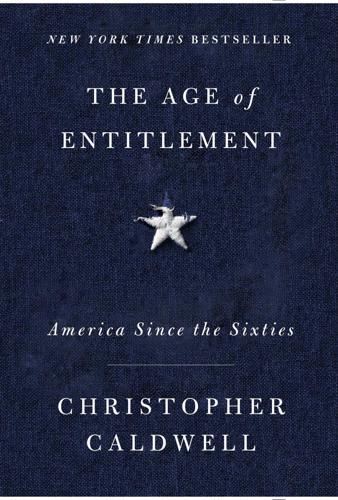
The Age of Entitlement: America Since the Sixties
by
Christopher Caldwell
Published 21 Jan 2020
Barack Obama’s second term happened to coincide with the moment in history when the victim’s perspective became the semi-official way of looking at crime and violence. Now the disproportionate incidence of black arrests was taken, in some quarters, as prima facie evidence of white racism. The Ferguson uprising On August 9, 2014, 18-year-old Michael Brown was shot dead by policeman Darren Wilson after a confrontation in a housing project in Ferguson, Missouri, a fast-changing but relatively well integrated town in St. Louis County. The incident sparked three waves of riots, the first one lasting two weeks, the second one coming three months later when a grand jury chose not to indict Wilson. There was additional unrest on the first anniversary of the shooting.
…
Every time someone was shot dead by police under difficult-to-piece-together circumstances, a daily occurrence in a vast and well-armed country, there were tensions. In the last days of 2014, an unstable Baltimore man named Ismaaiyl Brinsley drove to Brooklyn and murdered two police. Two officers were shot outside the Ferguson, Missouri, police station in March 2015. When Freddie Gray, another young man from Baltimore with a long rap sheet, died of a spinal injury in police custody a month later, there were nights of wild rioting. The following summer, in the middle of presidential election season, two armed black men were shot and killed by police on consecutive days.
…
Baltimore had a black mayor: “State Seeks Delay in 3 Freddie Gray Trials, Pending Appeals,” Chicago Tribune, February 8, 2016. “Part of the reason”: Mark Landler, “Obama Offers New Standards on Police Gear in Wake of Ferguson Protests,” New York Times, December 2, 2014. “I spoke to them”: U.S. Department of Justice, “Attorney General Holder Visits Ferguson, Missouri,” August 22, 2014. Online at justice.gov. Democrats were three times as likely: David Weigel, “Three Words Republicans Wrestle With: ‘Black Lives Matter,’ ” Washington Post, July 13, 2016. “end to the war”: “End the War on Black People,” Movement for Black Lives. Online at policy.m4bl.org.

Snowden's Box: Trust in the Age of Surveillance
by
Jessica Bruder
and
Dale Maharidge
Published 29 Mar 2020
After she started making films with strong political themes, she became a target for government harassment. In other words: this stuff can happen to anyone. Smartphone-wielding citizens were arrested for filming the deaths of Philando Castile, Eric Garner, Freddie Gray, and Alton Sterling. In Ferguson, Missouri, civilians were also detained for filming officers after the fatal police shooting of Michael Brown. “The possibility of citizen journalism is thrilling, but we’re also seeing this pushback around if you are the person who provided the video information; there’s pressure on you from power structures,” Kirsten continued.
…
See also Stasi Egypt, 145 Elahi, Hasan, 112 Electronic Frontier Foundation (EFF), 66–8, 79, 93, 125, 140, 143, 144 Electronic Privacy Information Center (EPIC), 143 Ellsberg, Daniel, 36, 43, 67 Espionage Act, 10, 42, 129 European Union, 143, 144 Evans, Jon, 8 Facebook, 48, 102, 103, 136–7, 141 FBI, 15, 18, 22, 86–8, 90, 94; FOIA requests, 124, 125, 126, 127, 145 Ferguson, Missouri, 111 Firefox (browser), 139 First Look Media, 126–9, 130 FitBit, 104 Ford, Gerald, 91 Foreign Intelligence Surveillance Act (FISA), 90–1 Franklin, Benjamin, 74 Freedom of the Press Foundation, 39, 62, 67, 68, 70 Gellman, Barton, 41, 43, 120 General Data Protection Regulation (GDPR) (Europe), 143, 144 Glomar Explorer, 125 Google, 48, 102, 108, 139, 145; Gmail, 137 Google Docs, 138 Google Drive, 126 Google Home, 99, 131 Google Maps, 21 Government Accountability Project, 85 GPG (Gnu Privacy Guard), 69, 70–1, 74, 75, 138 Greenwald, Glenn, 80, 120, 121, 129; Brazil, 59; EFF role, 67; First Look Media, 127–8; Hong Kong trip, 45, 46; Poitras and, 16–17, 38–9, 44–5, 46, 48; Snowden and, 6–7, 44–5, 48–9, 70–4, 75–6; Timm and, 62–3 Grindr, 103 Guantánamo Bay Naval Base, 64 Guardian, 2, 45, 46–7, 63, 80, 94; Poitras video, 48–49, 92 Hampton, Fred, 87–8 Harrison, Sarah, 56 Harvey, Adam, 142 Hawaii, 1, 28, 58 Hersh, Seymour, 43, 88 Holder, Eric, 29 Homeland Security Department.

The Vanishing Middle Class: Prejudice and Power in a Dual Economy
by
Peter Temin
Published 17 Mar 2017
The FTE sector is eager to enlarge military spending and they support militarization of government services that they cannot do without. Police in the United States have become paramilitary organizations. The Pentagon gives them surplus military equipment, and the police use the same equipment in the United States that the military used in Iraq. This can be seen in the reaction to the tragic events in Ferguson, Missouri, when a policeman shot and killed Michael Brown, an unarmed black teenager who was about to start college, in the late summer of 2014. The community was outraged by this apparently random killing of a black teenager, and there were massive public demonstrations in the following evenings. The police showed up for one of the evening demonstrations in a fortified military personnel carrier.
…
Both candidates for president in 2016 campaigned on promises to repair our infrastructure, but recent history does not suggest that these promises will be kept.22 Notes 1. Jargowsky 2015, 13. 2. Caraley 1992. 3. Troesken 2006, 140. 4. Rocheleau 2016. 5. Bosman 2016a; Wines, McGeehan, and Schwartz 2016. 6. Schwartz 2016b. 7. Belkin 1999; Jargowsky 2015. Ferguson, Missouri, where a white policeman shot an unarmed young black man in 2014, was 75 percent white in 1990, but it had become two-thirds black by 2010 as white flight spread from inner cities to inner suburbs. 8. Newman 1972. 9. Wilson 1996, 2009; Murray 2012. 10. MacDonald 1999; Swarns 2015. 11. Goffman 2014. 12.
…
Board of Education and, 116, 119, 171n16 concepts of government and, 89 elitism and, 52, 66, 74, 161 equal protection clause and, 58, 67, 102 FTE (finance, technology, and electronics) sector and, 15, 20–21 gender, 49 (see also Women) Investment Theory of Politics and Jim Crow policies and, 27, 49, 51–53, 58, 65–66, 104, 107, 154 juries and, 56, 59 low-wage sector and, 38, 153 mass incarceration and, 105 mortgages and, 117 poll taxes and, 58, 65 public education and, 117 racial, 15, 20–21, 38, 51–54, 56, 58, 66, 89, 105, 117, 153, 171n29 redlining and, 34, 53 segregation and, 53 (see also Segregation) statistical, 171n29 War on Drugs and, 27, 37–38, 53, 55, 104, 106 white rage and, 51, 101, 104 Disengagement, 35, 117 Diversity, 49, 51, 128, 156 Dix, Dorothea, 107 Dodd-Frank Financial Reform Act Dodd-Frank Wall Street Reform and Consumer Protection Act, 93 Dow Jones Industrial Index, 23 Draft, 16 Dropouts, 42, 45, 108, 158 Drug laws, 104, 171n24 Dual economy African Americans and, 9–13 college and, 3, 8, 11–12 farmers and, 6–11 financial crisis of 2008 and, 4, 9, 12 FTE and, 9–13, 168n10 (see also FTE [Finance, Technology, and Electronics] sector) human capital and, 11–12 immigrants and, 10 income distribution and, 3–5 inequality and, 10 integration and, 13 labor and, 6–7 Latinos and, 9–10, 13, 54–55 Lewis model and, xiii, xvii, 5–12, 62, 82, 89, 124, 158 low-wage sector and, 4, 8, 9–13 (see also Low-wage sector) social capital and, 12 taxes and, 10, 12 transition and, 41–46 wages and, 3–13 Dukakis, Michael, 109 Dylan, Bob, xii Elephant, 150 Earned Income Tax Credit, 79 Edwards, John, 3 Elitism, 52, 66, 74, 161 Emergency managers, 35–36 Environmental Protection Agency (EPA), 84, 93, 130 Environmental racism, xv Equal protection clause, 58, 67, 102 Equity, 30, 111 Eurodollars, 16, 23 Evans, Walker, 52 Exchange rates, 15–16, 23, 32, 169n3 Expected wage, 8 Facebook, 122 Fannie Mae, 138 Farmers African Americans and, 50–51 agricultural issues and, xi, 6, 31, 63 cotton and, xi, 59, 115 dual economy and, 6–11 as economic maximizers, 168n13 indentured servants and, 50 Investment Theory of Politics and, 62, 66 migrant workers and, 11 poor, 6 race and, 50, 52 subsistence, 5–6, 8, 10, 62 Federal funding, 35, 37, 93, 129 Federalism, 21–22, 35, 44, 65, 83, 103, 110 Federal Reserve System, 15–16, 93 Ferguson, Missouri, 102–103 Fernandez, Nelson, 103–104 Fifteenth Amendment, 15, 56, 58 Filibusters, 19 Financial crisis of 2008 concepts of government and, 91, 95 cross-country comparison and, 150–151 debt and, 138–141, 143, 154, 158 dual economy and, 4, 10, 12 FTE (finance, technology, and electronics) sector and, 17 housing boom and, 164 Investment Theory of Politics and, 174n15 labor and, 158 low-wage sector and, 38 private equity firms and, 111 public education and, 118–119, 128 S&L crisis and, 17 transition and, 45 very rich and, 80 Financial Times magazine, 61, 135 FIRE (finance, insurance, and real estate) sector, 80 Flint, Michigan, water crisis, xv, 35–36, 129–130 Food stamps, 79 Forbes 400 list, 77, 82–83, 85, 92 Ford, Gerald, 168n2 Foster, Timothy, 59 401(k) plans, 33–34 Fourteenth Amendment, 51, 58 Freddy Mac, 138 Freeland, Chrystia, 3, 79 FTE (finance, technology, and electronics) sector African Americans and, 15, 20, 22 birth of, 27 capital and, 11–13, 23–24, 42–45, 153, 164 CEO earnings and, 24 cities and, 130, 135–136, 179n18 college and, 10, 24–25, 41–46 concepts of government and, 87, 92, 94, 96 conservatives and, 16–22 cross-country comparison and, 147, 149 debt and, 137–144 democracy and, 21 demographics of, 10 deregulation and, 16–23, 32, 44, 85 discrimination and, 15, 20–21 dual economy and, 9–13, 168n10 expansion of, 30 financial crisis of 2008 and, 17 globalization and, 29 Great Gatsby Curve, The, and, 46 Great Migration and, 20 hourglass job profile and, 28–29 human capital and, 23, 44 ignoring needs of poor by, 80, 135, 142, 153–155 immigrants and, 20 income distribution and, 22 industry and, 16, 18, 20, 23, 25 infrastructure and, 36, 154 Investment Theory of Politics and, 67–70, 74–75 labor and, 13, 19–21, 24, 153 Lewis model and, 20, 36, 101, 105, 153 liberals and, 17, 19, 21–22, 105 low-wage sector and, 11–13, 25, 27–29, 32–37, 153–155, 170n6 mass incarceration and, 101–106, 109, 112–114 middle class and, 96, 144, 147, 153, 155 military and, 102–104, 109–110, 112, 127, 143 North and, 20 political choice by, 153 public education and, 115, 117, 119, 122, 127–128 race and, 9–10, 49, 55 S&L crisis and, 17 slavery and, 17, 22 Social Security and, 33, 45, 52, 69–70, 79, 90, 93, 141, 174n15 South and, 15, 17, 20, 22 taxes and, 15, 17–18, 22–24, 155 transition and, 11, 41–46, 154 unemployment and, 16, 21 unions and, 18–22, 28–29, 32–34, 64, 80–81, 116, 120 very rich and, 77–81 wages and, 16, 20–23, 25 World War I era and, 20–21 World War II era and, 15, 21 Garland, Merrick, 96 Gates, Bill, 121 Geithner, Timothy, 139 General Motors (GM), 33–34 Gerrymandering, 96 GI Bill, 34, 43, 52, 65 Globalization competition and, 8, 28–29, 33, 55, 148, 151, 155, 161 FTE (finance, technology, and electronics) sector and, 29 low-wage sector and, 28–29, 33 Goldin, Claudia, xiii Great Depression, 21, 52–53, 80, 93 Great Gatsby Curve, The, 46 Great Migration African Americans and, xi–xii, xiv, 20, 27–29, 34–35, 52–55, 104, 116–117, 125 company boundaries and, 29–30 FTE (finance, technology, and electronics) sector and, 20 Latinos and, 55 length of, 20, 27–28 Lewis model and, 20 low-wage sector and, 27–29, 34–35 mass incarceration and, 104 Michigan and, 35 mortgages and, 34 public education and, 116–117, 125 urbanization and, 20 Growth miracles, 6 Halliburton, 143 Hamilton, Derrick, 173n17 Handlin, Mary, 50 Handlin, Oscar, 50 Hayek, Friedrich, 21–22, 81 Head Start, 126–127, 156 Health care Aetna and, 142 Affordable Care Act and, xv, 18, 57, 91–92, 95, 141–142 concepts of government and, 92 low-wage sector and, 154 mass incarceration and, 108–109, 113 Medicare/Medicaid and, xv, 91, 93, 142 Piketty on, 156 universal, 79 women and, 56–57 Heckman, James, 124 Hedge fund managers, xv, 23–24, 82, 167n1, 179n5 Helms, Jesse, 80 Heritage Foundation, 17–18, 22 Heroin, 104 High school, 25, 119–121, 126 Hispanics.
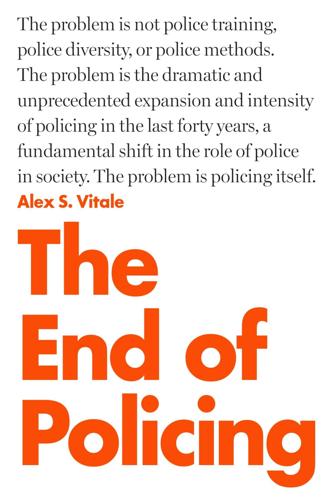
The End of Policing
by
Alex S. Vitale
Published 9 Oct 2017
These reforms instead poured millions into training programs that resulted in the rise of SWAT teams, drug enforcement, and militarized crowd control tactics. Diversity There is no question that the racial difference between the mostly white police and the mostly African American policed in Ferguson, Missouri, contributed to the intensity of protests over the killing of Mike Brown. Reformers often call for recruiting more officers of color in the hopes that they will treat communities with greater dignity, respect, and fairness. Unfortunately, there is little evidence to back up this hope. Even the most diverse forces have major problems with racial profiling and bias, and individual black and Latino officers appear to perform very much like their white counterparts.
…
They are often met with high levels of force in the form of “less lethal” weaponry such as pepper spray, tear gas, and rubber bullets. The Miami model has also been driven in part by the broad militarization of civilian policing, as described in previous chapters. Some argue that militarized riot control is merely prudent preparation—for example, in Ferguson, Missouri. Shouldn’t authorities take whatever steps they can to protect life and property? There are two major problems with this line of thinking. First, it is not at all clear that these measures advance public safety; second, the right to protest cannot be abridged because of the threat of illegal activity or even the commission of violence nearby.
…
This eBook is licensed to Edward Betts, edward@4angle.com on 06/08/2020 Index Abbott, Greg 189 Advancement Project 71, 170, 238n7 AFL-CIO 192 Alexander, Michelle 50–2, 142, 229, 237n41, 248n8, 249n28, 250n37 Alvarado, Daniel 66 American Civil Liberties Union (ACLU) 14, 63, 138, 165, 179, 208–10, 213, 217, 234n47, 234n54, 239n26, 239n28, 254n10, 254n20, 257n26, 257n28, 258n29, 258n35, 258n37 American Federation of Teachers 71–2, 240n51 American Friends Service Committee 209 American Immigration Council 188, 255n35 American Legion 206 American Indian Movement 49 American Party 176 American Protective League 206 Americans with Disabilities Act 63, 147 Anslinger, Harry 132 Anthracite Coal Strike 40 Apuzzo, Matt, 213, 229, 258n43 Asset forfeiture 25, 135–6 Bacon, David 256n46 Balko, Radley 135, 229, 231n11, 232n28, 248n14, Banfield, Edward 5–6, 232n13 Baum, Dan 248n9 Bayley, David 32, 235n1 Beck, Charlie 159, 169–70 Becker, Howard 248n7 Beckett, Katherine 92–3, 229, 243n2, 245n2 Belafonte, Harry 55 Belenko, Steven 248n5 Bernal, Joe 236n28 Bernstein, Elizabeth 247n21 Biasotti, Michael 87 Bittner, Egon 76–7, 241n2 Black Lives Matter 55, 208, 218, 226 Black Panthers 49 Black Youth Project 154–5, 225, 259n2 Blackmon, Douglas 237n35 Body cameras 17, 22, 23–4, 188, 222 Boone, Levi 38 Boyd, James 94 Bracero Program 177, 191–2 Bratton, William 4, 15, 169 Broeker, Galen 235n7 Broken Windows Theory 5–7, 13, 22, 51, 53, 56, 60, 93–4, 97, 148, 168, 184, 222 Brooklyn College 213 Brown, David 27–8 Brown, Michael 11, 18, 216 Bush, George W. 22, 59–60, 123, 180, 219 Butler, Smedley 42 Calavita, Kitty 253n4 Calderon, Felipe 144 Cantu, Aaron 236n26 Carrigan, William 43, 236n5 Center for Court Innovation 101, 146, 250n48 Center for Media and Democracy 210 Central Intelligence Agency 49, 144 Coal and Iron Police 40 Colorado Campaign for Middle East Peace 209 Cox, Mike 43, 236n24 Charleston City Guard and Watch 46 Chartists 36 Children’s Defense Fund 62 Chinese Exclusion Act 176 Clear, Todd 252n27 Clinton, Bill 51, 61, 129, 134, 179–80, 194 Coates, Ta-Nehisi 155, 251n63 Columbine school shooting 57 Comey, James 15 Community policing 16–17, 22, 222 Congress for Racial Equality (CORE) 49 Counter Intelligence Program (COINTELPRO) 202, 206–7 Crabapple, Molly 120, 247n20 Crawford, John 1, 10 Critical Resistance 165 Cruz, Alvin 2 Csete, Joanne 248n13 Cure Violence 174 Currie, Elliott 171, 229, 253n24 Czitrom, Daniel 229, 236n17 Daley, Robert 248n17 Dashboard cameras 22–3 de Blasio, Bill 4 Death penalty 28 Decriminalization of drugs 134, 145, 148–50; of sex work 109, 118–19, 124–8 Denver Peace and Justice Committee 209 Dewey, Susan 125, 229, 245n1, 247n23 DiIulio, John 56 Domanick, Joe 159, 229, 252n5, 253n21 Donner, Frank 203, 257n21 Drug Abuse Resistance Education (DARE) 67, 151 Drug courts 145–8 Drug Enforcement Agency 49, 130, 134, 137, 178 Drug Policy Alliance 148, 250n47, 251n55, 251n57, 251n60 Dukakis, Michael 51 Dunn, Robert 257n16 Elliot, Samuel 37 Empower Chiang Mai 122–3, 247n22 Engle, Byron 50 Evans, Rob 256n11 Fagan, Jeffrey 249n29 Federal Bureau of Investigation (FBI) 15, 49, 123, 137–8, 157, 178, 188, 201–3, 205–6, 209, 211–12 Ferdaus, Rezwan 212 Ferguson, Missouri 2, 11, 15, 18–20, 22, 215–217 Focused Deterrence 167–8 Food and Drug Administration 130 Fortner, Michael 172, 253n26 Fosdick, Raymond Blaine 236n12 Friedman, Barry 24, 229, 234n52 Friedman, Milton 5 Fuentes, Annette 59, 64, 229, 238n11, 239n31 Fusion centers 210–11 Geller, Amanda 249n29 Gage, Beverly 257n14 Gang databases 164–165; injunctions 163–5 Garcia, Ramon 189 Garriot, William 154, 229, 248n2 Garner, Eric 1, 4–5, 7 Garwood, Jesse 42 Gates, Daryl 158, 169 Gates, Henry Louis 3 General Trade Union 37 German, Michael 258n35, 258n37 Gilje, Paul 235n11 Glenn, Brendon 95 Glick, Brian 257n20 Global AIDS Act 123 Goldman, Adam 213, 229, 258n43 Goldman, Emma 202 Gottschalk, Marie 255n26 Grandin, Greg 256n49 Graham, Ramarley 141–2 Graham v.
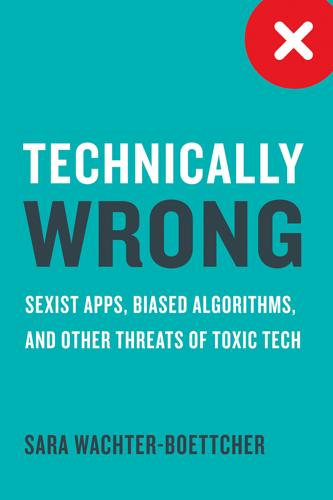
Technically Wrong: Sexist Apps, Biased Algorithms, and Other Threats of Toxic Tech
by
Sara Wachter-Boettcher
Published 9 Oct 2017
The community creates what it needs.” 34 Martin saw this hands-off approach as a fundamental strategy for Reddit: “Make the users do the hard part,” 35 he once said. But moderators aren’t paid Reddit employees; they’re volunteers. And by the time Reddit changed its policy in 2015, many of those volunteers had decided that the part Reddit required them to play had become too hard. Back in August of 2014, just after Mike Brown was shot by police and Ferguson, Missouri, erupted into protests, the subreddit r/blackladies, a community for black women, was inundated with hateful, racist posts. “The moderators . . . tried to delete the hateful content as best they could, but the entire experience exhausted and demoralized them,” wrote Aaron Sankin in the Daily Dot.
…
See also gender bias; racial bias companies’ efforts to improve, 22–26, 182–184 correlation with performance, 184–186 in design teams, 11, 14, 16–17, 20, 28, 35 and Facebook, 19, 21–22, 23–25 and innovation, 186 and Slack, 190–191 tech industry’s lack of, 9, 11, 14, 16, 18–20, 116, 135–136, 150, 157–158, 169, 171–176, 182, 196 and Twitter, 155–156 Dorsey, Jack, 155–156 edge cases, 38–40, 50, 137 Electronic Frontier Foundation, 108 The End of Average (Rose), 38–39 engagement, as goal of interaction design, 74 ethics at Facebook, 172 and Gamergate, 157 and meritocracy of tech, 176, 189 and racial bias on Nextdoor, 74 and tech products’ ethical blunders, 6, 13, 26, 199 at Uber, 108, 180, 187, 191–192 Etsy, 32–33, 32 Eve by Glow app, 31, 31, 33 Eveleth, Rose, 137 Facebook and Americans’ online status, 2 artificial intelligence feature, 171 and cares about us metric, 97 collection of gender information by, 63–66, 63, 64 creators’ values and biases, 168–172 and data brokers, 104 default privacy settings, 108–109 and fake news, 165–166, 199 Friends Day feature, 84–85 and gender of profile picture avatars, 36 and the Hacker Way, 170–171 and Halloween icons, 80 and journalism industry, 199 Moments feature, 85, 97 News Feed feature, 144, 168–169 On This Day feature, 83–84, 97 and presidential election of 2016, 10 problems with personal names, 53–59, 75 and proxy data use, 112 and selection of ads users see, 10 Trending feature, 149, 165–169, 172 and value of user data, 97 What Facebook Thinks You Like browser extension, 103 and workforce diversity, 19, 21–22, 23–25 Year in Review feature, 4–6, 5, 79, 83 facial-recognition software, 137 Fairness, Accountability, and Transparency in Machine Learning (FAT/ML), 128 fairness criteria, 127–128, 136 Fake, Caterina, 171–172 fake news stories, 10, 149, 165–166, 170, 199 Ferguson, Missouri protests, 163, 166 fertility, and menstrual tracking apps, 28–30, 33 financial performance, and diversity, 186 Fisher, Carrie, 148 Flickr, 135, 155, 171 forms. See digital forms Fowler, Susan, 177–180 free speech, 154, 157, 164 Friedler, Sorelle, 128, 136, 145–146 Friends Day, 84–85 Fugett, Dylan, 119–120 Gamergate, 151, 154, 157 Gates, Bill, 182 gay people.
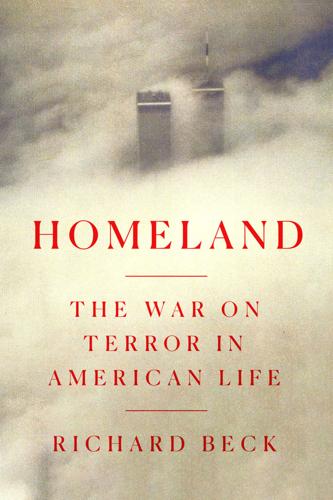
Homeland: The War on Terror in American Life
by
Richard Beck
Published 2 Sep 2024
Occupy took physical space and held it, successfully making Zuccotti Park their home for nearly two months until the New York Police Department cleared the park in the middle of the night on November 15. Black Lives Matter protesters halted traffic on the Brooklyn Bridge, fought with police and the National Guard in Ferguson, Missouri, and flipped over cop cars in Rochester, New York.[66] Rather than gathering in one place, voicing their concerns, and assuming that the government would listen to them, Occupy and BLM protesters attempted to force their government leaders to behave differently. When they didn’t, leftist political candidates challenged them in both local and federal elections, scoring a number of major victories, as when a twenty-eight-year-old Alexandria Ocasio-Cortez defeated Congressman and Democratic Caucus chair Joe Crowley in a New York primary.
…
“I’m minding my business, officer,” he said. “I’m minding my business! Please just leave me alone.” Less than fifteen minutes later, he was dead on the ground. His dying words, “I can’t breathe”—he repeated the phrase eleven times—became Black Lives Matter’s first major rallying cry. The second came out of what happened in Ferguson, Missouri, the following month. Although the exact circumstances surrounding Michael Brown’s death remain unclear today, everyone agrees that he was unarmed when Darren Wilson shot him, and in the immediate aftermath of the shooting some witnesses reported that Brown had his hands up when the bullets left Wilson’s gun.
…
one protester yelled at police during the one-year anniversary vigil for Brown. “Don’t keep telling us about being peaceful; you be peaceful….We want the world to know that y’all are treating us like ISIS, and you wanna put a mic in front of my mouth and ask us how we feel? How the hell you think we feel?!”[48] * * * • • • “The latest images of unrest in Ferguson, Missouri, evoke scenes from a battlefield,” ABC News wrote: “heavily-armed officers in camouflage, carrying rifles in armored vehicles, firing at civilians.”[49] “Ferguson police have deployed stun grenades, rubber bullets and what appear to be 40mm wooden baton rounds to quell the protests,” The Guardian added.
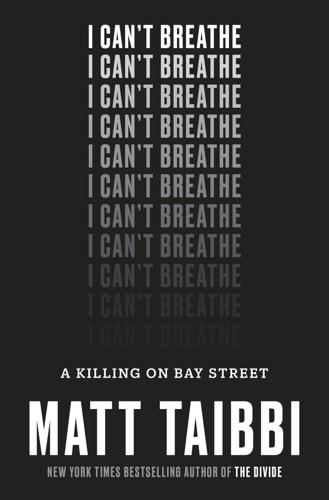
I Can't Breathe
by
Matt Taibbi
Published 23 Oct 2017
Dan Donovan, the Staten Island district attorney, was about to add his name to that list. — Shortly after Donovan met with the Garner family members, a new controversy sent the police brutality issue into overdrive nationally. A police killing in the heretofore-little-known St. Louis exurb of Ferguson, Missouri, where an eighteen-year-old African American named Michael Brown was shot by a white officer, sent the country spiraling into furious protests. There were street demonstrations in dozens of cities large and small, from L.A. to Oakland to Denver to Chicago to New York to Boston. Many involved people blocking highways and intersections.
…
Then it was months. Garner had been killed in the middle of summer, and the grand jury had been called in August. Now fall was winding to a close and it was beginning to get very cold outside. The grand jury still had not made its decision. What was taking so long? — On November 24, 2014, a grand jury in Ferguson, Missouri, reached a decision not to indict Officer Darren Wilson. St. Louis County prosecutor Bob McCulloch, Dan Donovan’s counterpart, announced that the grand jury had found “no probable cause” to indict for either first-degree murder or manslaughter. McCulloch directly addressed witness accounts of Brown holding his hands up in surrender at the time of the shooting, an image that inspired the iconic nationwide “Hands Up, Don’t Shoot” protest meme.
…
Those two had been the faces of such protests for decades, but in a subplot to the Ferguson protests, both were heckled everywhere they went by younger, more strident activists. Many of these confrontations became widely circulated YouTube hits, with titles like “Al Sharpton and Jesse Jackson Booed Off Stage in Ferguson Missouri.” Sharpton would later try to fight back, reportedly telling young members at an NAN gathering that new activist groups trying to drive a wedge between protesters and the old guard were “pimping” young people. “It’s the disconnect that is the strategy to break the movement,” Sharpton said, according to Capital New York reporter Azi Paybarah, who obtained a recording of the meeting.
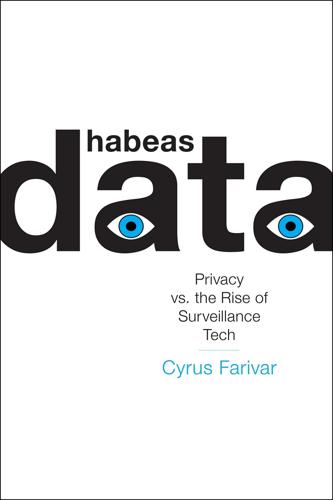
Habeas Data: Privacy vs. The Rise of Surveillance Tech
by
Cyrus Farivar
Published 7 May 2018
In 1960, the city was nearly entirely white, while Oakland, in comparison, had a large African-American population. By 2010, Asian-Americans comprised roughly one-third of San Leandro’s population. Less than three months after the San Leandro City Council approved the purchase of body cameras, in August 2014, Michael Brown, an unarmed black 18-year-old in Ferguson, Missouri, was shot and killed by a local cop. Like most law enforcement agencies nationwide at the time, the Ferguson Police Department lacked body cameras. On December 1, 2014, the White House announced a three-year, $263 million grant program for local law enforcement body cameras. Many agencies, like the San Leandro Police Department (SLPD), were already in the process of obtaining body cameras, but Ferguson helped accelerate deployment in many cities.
…
In 2007, San Leandro paid a $395,000 settlement to the family of Jose Maravilla Perez, Jr., who died at the hands of the SLPD after he was repeatedly shocked with a Taser. In more recent and higher-profile examples from other cities the list goes on: In 2015, Baltimore, Maryland, settled with the estate of Freddie Gray for $6.4 million. In 2017, St. Anthony, Minnesota, settled with the estate of Philando Castile for $3 million. Also in 2017, Ferguson, Missouri, settled with the estate of Michael Brown for $1 million. In short, cities nationwide are pushing for body cameras to make sure that both citizen and officer are on their best behavior. But like LPRs, where data-retention policies are all over the map, so it is with body-worn cameras. In Pueblo, Colorado, some camera footage is kept indefinitely.
…
Available at: https://www.washingtonpost.com/local/crime/baltimore-reaches-64-million-settlement-with-freddie-grays-family/2015/09/08/80b2c092-5196-11e5-8c19-0b6825aa4a3a_story.html. In 2017, St. Anthony, Minnesota: Sarah Horner, “Philando Castile Family Reaches $3M Settlement in Death,” Twin Cities, June 26, 2017. Available at: http://www.twin-cities.com/2017/06/26/philando-castile-family-reaches-3m-settlement-in-death/. Also in 2017, Ferguson, Missouri: Paul LeBlanc, “Settlement Reached in Michael Brown Civil Lawsuit,” CNN, June 20, 2017. Available at: http://www.cnn.com/2017/06/20/us/michael-brown-settlement-ferguson/index.html. But like LPRs: Elizabeth Atkins, “#Blacklivesrecorded,” Unpublished Thesis, Thomas Jefferson School of Law, 2016.
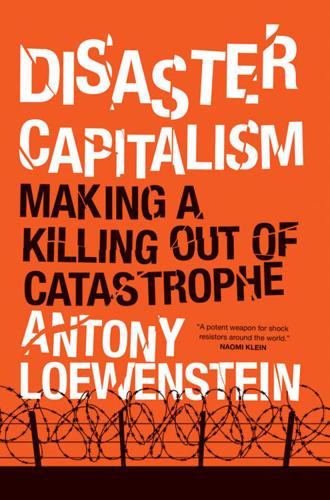
Disaster Capitalism: Making a Killing Out of Catastrophe
by
Antony Loewenstein
Published 1 Sep 2015
Wandering around the exhibition hall, I saw a Homeland Security Evidence Collection Kit for $1,000, which included a range of objects, including tweezers, a tape measure, and a urine specimen jar—apparently the perfect accessory for police authorities in the post-9/11 environment. While I was in Salt Lake City there were riots in Ferguson, Missouri, over the police killing of a young black man, Michael Brown. Television images showed a militarized police force looking as if they were equipped to face insurgents in Iraq. A Department of Defense program allowed the transfer of excess military equipment to local police forces. With massive budget hikes, local law enforcement increasingly claimed that it needed to prepare for war and terrorism.
…
35, 112–13, 139–40, 221 detention centers access 252–3, 299, 359n31 Australia 271, 274, 276, 278–9, 280–5, 285–305, 356n2, 357n11 conditions 66–71, 79, 299–304, 334n14, 357n11 costs 96, 281–3, 304 economic logic of privatization 289–99 Greece 64–71, 76, 77–80, 96, 98, 336n14 guards 64–5, 68–9 house rules 232–4 medical care 77–80, 266, 295 price-gouging 292 privatization 13, 98, 230–5, 245–51, 280–5, 289–99 racism 65, 259–60, 294 sexual abuse 252–8 size 76 staff numbers 294 staff pain and suffering 296–8 United Kingdom 230–5, 245–51, 252–8, 263–7 United States of America 211–28 workers’ health and safety 298 working conditions 297–8 Detention Watch Network 216, 222, 227–8 diabetes 14 Digicel 122 Dilley, Texas 221 disaster capitalism, definition 6–9 disaster, definition 9 disaster economics 322n18 disaster relief NGO-ization of 137–41 privatization 108–9 Droneshield 205 drones (UAVs) 97–8 drug abuse 37–9, 102 drug trade, Afghanistan 37–9 Dubai 45 Duma, William 186 Dungavel detention centre 266 Dupuy, Alex 133 Dutton, Peter 281 Duvalier, Francois (“Papa Doc”) 109–10 Duvalier, Jean-Claude (“Baby Doc”) 110–12 DynCorp 16, 26–7, 124 ecological damage, copper mining 173 Ecolog International 29 economic empowerment 162 economic exploitation, Haiti 132, 133–6 Economist 117 eco-system damage, Haiti 130 Eldorado Gold 100 Elie, Patrick 119–22 El Refugio 223 embassies, security of 30 embedded journalism 10, 26, 324n5 enlightened dictatorship 2 environmental destruction 157–8, 173, 273–4 Eppright, Fred 136 equality 311 Equatorial Guinea 14 Etienne, Yanick 126–8 Eurasian Minerals 120 Eurobank 101 European Central Bank 72 European Commission 72, 73 European Court of Human Rights 68 European External Border Surveillance System 97 European Refugee Fund 66 European Union asylum seeker numbers 96 development aid 324n3 and drones 97–8 and Greece 12 questions of identity 103–4 refugee crisis 95–8 Euro, the, Greece and 84 Evans, Tim 306 Evergreen Aviation 34 Evros 66–7 executions 199 Executive Outcomes 180 exploitation 107–8 Extractive Industries Transparency Initiative (EITI) 190–1 extraordinary rendition 16, 34 extremism 25 ExxonMobil LNG pipeline 166 Facebook 308 Fahim (Afghan engineer) 46–8 Farage, Nigel 236 Farmer, Paul 113–14, 139 fascism 85 Fatal Assistance (aid) 118–19 Ferguson, Missouri, riots in 203 Fiji 346–7n41 Financial Times 6, 191, 242 Finn, Noel 255 fiscal policy 84 Fisher, Nigel 122 Flores, Anton 223 Flynn, Michael T. 55 Fonteyne, Jean-Pierre 357n4 food aid 3, 145–6 food and drink multinationals 14 Foreign Policy 6, 45, 123 fossil fuel industry 8–9 Four Horseman International 60 fracking 8–9 France 99, 120, 311 fraud 240–1 Friedmann, Alex 216, 222 Frontex 67, 96, 97 Frontex Plus 95 Funk, McKenzie 9 Fyssas, Pavlos, murder of 90 G4S 13, 16, 23, 57, 230–5, 235, 240, 248, 255, 256–8, 258–60, 264, 277, 278, 280, 282, 283–4, 289, 290 Gaddafi, Muammar 16, 30 Gap 132 Garoute, Hans P. 147–9 Gates Foundation 202 General Atomics 31 GEO Group 124, 197, 199, 200, 201, 202, 227, 255, 266 Georgia Detention Watch 223 Georgia Latino Alliance for Human Rights (GLAHR) 224 Georgia, USA 199–200 immigrants 211–28 Stewart immigration detention centre 211–22 Germany 75, 84, 239 Gertler, Dan 120 Ghana 339n38 Ghani, Ashraf 27, 32, 45, 62 Gibney, Matthew J. 284 Gilbert, Sylvie 190 Glass, Charles 27 global capitalism, Klein’s critique of 7–8 Global Detention Project 68 global financial crisis, 2008 3, 72, 239, 309 Global Solutions Limited (GSL) 289–90 Golden Dawn 12, 71, 72, 74, 75, 78, 80, 104 aims 91–2 anti-Semitism 90–1 appeal 87 and the Greek Orthodox Church 88 iconography 89–90, 92 and immigration 88–9, 92 leadership 86, 91 Luqman trial 94 opposition 93–5 patriotism 88 popularity 85–6 and privatization 92–3 relationship with police 86 supporters 86, 87 violence 92, 94 worldview 87–93 Goldman Sachs 4 Gopal, Anand 32–3, 46–7 Gopnik, Adam 196 Government Accountability Office (US) 35 government, role of 4 Grainger 206 Grayling, Chris 261–2 Grayson, John 235, 262 Greece 4, 12, 64–104 ANEL (Independent Greeks) 73 anti-Semitism 93 asylum seeker infrastructure 66–8, 76–7 asylum seekers 64–71, 75–7, 77–80, 89 Asylum Service 66–7 austerity 71–5, 99–103, 307–8 closed hospitality centers 67–8 corruption 64, 72 debt crisis 71–5, 84 detention centers 64–71, 76, 77–80, 96, 98, 334n14 economic policies 12, 73 election, 2015 72–3, 91, 101 and the Euro 84 Eurozone exit 95 foreign investment 100–1 and Germany 75 Golden Dawn 12, 71, 72, 74, 75, 78, 80, 85–95, 104 healthcare system 80–4 Health Ministry 82 immigrants 74, 88–9, 92 immigration policy 96 medical care, asylum seekers 77–80 Ministry of Public Order and Citizen Protection 76 police brutality 83 potato movement 78 poverty rate 98–9 press freedom 74, 75 pressure on 73 privatization 72, 98, 100–2, 307–8 privatization of the detention network 77 questions of identity 103–4 racism 71, 80 reception centers 67 refugee crisis 95–8 sovereignty 104 suicide rate 102 Syntagma Square protest, 2014 70 Syriza 12, 72–5, 83, 91, 95, 103 unemployment 67, 99 Greek Council for Refugees 66 greenhouse gases 1–2 Green Prison 204 green technology, prisons 204 Greenwald, Glenn 219 Greg (PMC contractor) 60–1 Greiner, Robert 15 GTL 210 Guantánamo Bay 28, 240 Guardian 75, 261 Guatemala 134 Gulf War, First 25 Gulf War, Second 60 Gurkhas 20, 22, 25 Habib-Ur-Rahman 46–8 Hadawal, Khan Afzal 61 HADOM 140 Haidari, M.
…
W. 33, 34 Sisalem, Aladdin 281 al-Sisi, Abdel Fattah 2 Smart Borders 97 Smart, Frank 209 Smeets, Alice 137 Snowden, Edward 15, 55, 219, 359n32 social-impact bonds 4 social media 75 social sensitivity 21 social spending, cuts 6–7 Solnit, Rebecca 311 Solomon Islands 176, 346n28 Solon, Vivian Alvarez 289 Somalia 26 Somare, Michael 170, 171, 191 Sonapi 131 Sontag, Deborah 113 Sopko, John 62 South Africa 196 Southern Center for Human Rights 199 South Korea 117 South Sudan 14 South Yorkshire Migration Asylum Action Group 235 sovereignty Greece 104 Haiti 135, 146, 152 Papua New Guinea 156, 175–6, 176–8, 191, 192 and private military companies 22–3 Soviet Union 33, 37 Spaccia, Angela 5 Special Inspector General for Afghanistan Reconstruction 35 Spicer, Tim 33, 180 Sri Lanka, Boxing Day tsunami, 2004 11 Stathis, Epaminondas N. 87–91 Stavridis, Stelios 102 Stewart Immigration Detention Center, Lumpkin, Georgia 211–22 Stillman, Sarah 29 Sturm, Axel 185–6 suicide attacks 41–2 suicide rates 102, 209, 217, 332n83 Supreme Foodservice AG 29 surveillance 6, 15, 237–8 sustainable development 2, 162 sweatshops 149, 341n65 Syntagma Square protest, 2014, Greece 70 Syria 14 Syriza 12, 72–5, 83, 91, 95, 103 Taibbi, Matt 3–4, 309–10 Takaung, Philip 179 Taliban barbarism 25 drug trade 37 fear of resurgent 44–5 fractured 63 overthrow 31 in Pakistan 31 suicide attacks 41 targeting 55 and women 47, 330n59 Tapakau, Patricia 183–4 Task Force 377 331n69 taxation, global 6 Taylor, Peter 185, 186 Tepper Aviation 34 terrorism, September 11 terrorist attacks, 2001 7, 33 Tethys Petroleum 50 Texas 197 Tex-Net 206 Thatcher, Margaret 234, 238–9, 310 Thehan (asylum seeker) 253–4 Theonil (PNG resident) 167–9 This Changes Everything: Capitalism vs. the Climate (Klein) 8 Thomas, Jean-Louis Saint 131 Thomson, Gordon 273–4, 275 Thorburn, James 232 three-strike laws 198 Tiefer, Charles 35 Time Warner 5 torture 15 tourism 152 Trans-Afghanistan pipeline 25 Transfield 283, 358n25 transparency 10, 191, 249, 310 prisons 225–6 private military companies 34 privatization 246, 290–1 Treatment Advocacy centre 201 Tribelnig, Stuart 259 Triple Canopy 108 Tsiolkas, Christos 103–4 Tsipras, Alexis 72, 73–4, 74, 93, 95 Tuckey, Wilson 278 Tunisia 128 Twitter 308 Tzanetea, Revekka 78–80 UK Border Agency 241 Unilever 267 Union of Christmas Island Workers (UCIW) 273, 275 United Kingdom and Afghanistan 49–50 asylum seekers 230–5, 244, 245–51, 252–8, 258–63 contractor privacy 248–9 deportations 258–63 detention centers 230–5, 245–51, 252–8, 263–7 elite salaries 239 health services privatization 244–5 housing demand 234 immigration policy 243–4 inequality 242–3 Liberal Democrats 252 living standards 243 opposition to privatization 251 outsourcing contractors 240–2 prisons 240, 264–5 privatization 13, 230–68, 237–9, 310 racism 259–60 rent increases 4 scale of privatization 244 slumification 234 Welfare to Work program 261–2 United Nations 16, 68, 126, 277 and Haitian cholera outbreak 113–14, 115–16 Office for the Coordination of Humanitarian Affairs 139 Reducing Emissions from Deforestation and Forest Degradation in Developing Countries policy 344n19 United Nations Environment Programme 157 United Nations Office on Drugs and Crime 37 United States of America Afghan dependence on 45 aid contracts 123–5 American Correctional Association (ACA) conference, 2014 202–11 arms sales 110–11 Assessing Progress in Haiti Act 124 Commission on Wartime Contracting 34 corporate pillaging of Haiti 111–12 cost of Afghan war 45 Defense Logistics Agency 29 deportations 212, 227–8 detention centers 211–28 executions 199 farm subsidies 122–3 female prison population 197 food assistance 3 foreign policy 5, 152 Government Accountability Office 35 Haiti colonialism 109–13 Haiti Economic Lift Program 133 Haiti policy 115–16, 116–20, 134 immigrants 195, 196, 198–9, 211–28 incarceration rates 195–6, 200, 204 inequality 2–4 investment in Haiti 116–20 military bases 28 obsession with imprisonment 198 opposition to private prisons 223–8 and Papua New Guinea 170–1 police brutality 203 prison bed mandate 226–7 prison population 196, 204, 228 prison quotas 226–7, 228 prisons 195–229 private prison operators 196–8 privatization 4, 5, 13 the Reagan Revolution 3 rice exports 122–3 riots, Ferguson, Missouri 203 role of government 4 sentencing reform 198 southern border 212 three-strike laws 198 Urban Shield conference 203–4 use of contractors 28–31 waste reduction 30 youth detention 208 Unocal 25 unregulated capitalism, Haiti 135–6 Urban Shield conference 203–4 URS 172 USAID 28, 38, 108, 123–5, 130, 134, 135, 142, 146–7, 152, 327–8n46, 331–2n77 US Department of Defense 28, 30 US Geological Society 49 US–Korea Free Trade Agreement 133 US special forces 55 U.S.
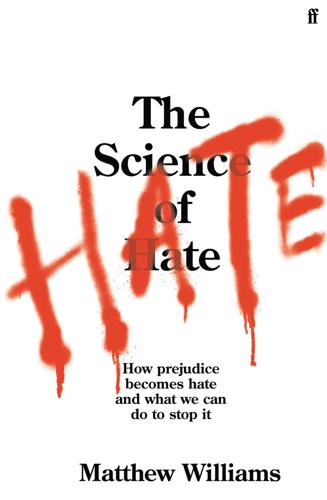
The Science of Hate: How Prejudice Becomes Hate and What We Can Do to Stop It
by
Matthew Williams
Published 23 Mar 2021
In the US the relationship between black communities and law enforcement has been marred by a string of police brutality and murder cases over the past few decades. Many cases have attracted widespread news attention, including those of Frank Jude Jr and Lovell Harris in Milwaukee, Wisconsin in 2004, Sean Bell in New York City, New York in 2006, Oscar Grant in Oakland, California in 2009, Trayvon Martin in Sanford, Florida in 2012, Michael Brown in Ferguson, Missouri in 2014, Breonna Taylor in Louisville, Kentucky in March 2020, George Floyd in Minneapolis, Minnesota in May 2020, Tony McDade in Tallahassee, Florida in May 2020, and Rayshard Brooks in Atlanta, Georgia in June 2020. Research by Professor Matthew Desmond and colleagues at Harvard, Yale and Oxford Universities noted that in the US there are clear racial disparities in police use of force.
…
The murder of unarmed seventeen-year-old Trayvon Martin in Florida in 2012 by a white neighbourhood watch officer resulted in rallies and marches across the US, and after the acquittal of the shooter, President Obama said in a speech, ‘Trayvon Martin could have been me thirty-five years ago.’9 The killing of eighteen-year-old Michael Brown in Ferguson, Missouri in 2014 by a white officer, which involved six shots to the chest, sparked three rounds of protests – following the shooting itself, the trial, which was unusual and some say biased, and the eventual acquittal of the officer in question. A year later a Department of Justice investigation found the Ferguson Police Department had engaged in misconduct by discriminating against African Americans.
…
Abdallah, Abdalraouf, 1 Abedi, Salman, 1, 2, 3, 4 abortion, 1, 2 Abu Sayyaf Group, 1 abuse, 1, 2, 3, 4, 5 accelerants to hate, 1, 2, 3, 4, 5, 6, 7, 8, 9, 10 accelerationists, 1 addiction, 1, 2, 3, 4 Admiral Duncan bar, 1 adolescence, 1, 2, 3, 4, 5, 6, 7 advertising, 1, 2, 3, 4, 5 African Americans, 1, 2, 3, 4, 5, 6, 7 afterlife, 1, 2 age, 1, 2 aggression: brain and hate, 1, 2, 3, 4, 5; false alarms, 1; group threat, 1, 2, 3, 4, 5, 6; identity fusion, 1; mortality, 1; pyramid of hate, 1; trauma and containment, 1, 2 AI, see artificial intelligence Albright, Jonathan, 1 alcohol, 1, 2, 3, 4, 5, 6, 7, 8 algorithms: far-right hate, 1, 2, 3, 4; filter bubbles and bias, 1, 2; Google, 1, 2, 3; online hate speech, 1, 2, 3, 4, 5, 6; Tay, 1, 2; tipping point, 1, 2; YouTube, 1 Algotransparency.org, 1 Allport, Gordon, 1, 2, 3, 4 Al Noor Mosque, Christchurch, 1 al-Qaeda, 1, 2 Alternative für Deutschland (AfD), 1 alt-right: algorithms, 1, 2; brain and hate, 1; Charlottesville rally, 1, 2; counter-hate speech, 1; definition, 1n; Discord, 1; Facebook, 1, 2, 3; fake accounts, 1; filter bubbles, 1, 2; red-pilling, 1, 2; social media, 1, 2; Trump, 1, 2; YouTube, 1 Alzheimer’s disease, 1 American Crowbar Case, 1 American culture, 1 American Nazi Party, 1, 2 Amodio, David, 1n amygdala: brain and signs of prejudice, 1, 2; brain tumours, 1; disengaging the amygdala autopilot, 1; hate and feeling pain, 1, 2; and insula, 1; neuroscience of hate, 1n, 2, 3, 4; parts that edge us towards hate, 1; parts that process prejudice, 1; prepared versus learned amygdala responses, 1, 2; processing of ‘gut-deep’ hate, 1; recognising facial expressions, 1n, 2; stopping hate, 1, 2; trauma and containment, 1, 2; unlearning prejudiced threat detection, 1 anger, 1, 2, 3, 4, 5, 6, 7, 8 anonymity, 1, 2 anterior insula, 1n Antifa, 1, 2n, 3 anti-gay prejudice, 1, 2, 3, 4, 5, 6, 7, 8 anti-hate initiatives, 1, 2 antilocution, 1 anti-Muslim hate, 1, 2, 3, 4, 5, 6 anti-Semitism, 1, 2, 3, 4, 5, 6 anti-white hate crime, 1 Antonissen, Kirsten, 1, 2 anxiety: brain and hate, 1, 2, 3, 4; harm of hate speech, 1; intergroup contact, 1, 2; subcultures of hate, 1, 2; trauma and containment, 1; trigger events, 1, 2 Arab people, 1, 2, 3, 4, 5, 6 Arbery, Ahmaud, 1 Arkansas, 1, 2 artificial intelligence (AI), 1, 2, 3, 4 Asian Americans, 1, 2 Asian people, 1, 2, 3, 4 assault, 1, 2, 3 asylum seekers, 1, 2, 3, 4 Athens, 1 Atlanta attack, 1 Atran, Scott, 1, 2 attachment, 1 attention, 1, 2, 3 attitudes, 1, 2, 3, 4, 5, 6 Aung San Suu Kyi, 1 austerity, 1 Australia, 1 autism, 1 averages, 1, 2 avoidance, 1, 2, 3 Bali attack, 1 Bangladeshi people, 1 BBC (British Broadcasting Corporation), 1, 2, 3 behavioural sciences, 1, 2 behaviour change, 1, 2, 3 beliefs, 1, 2, 3 Bell, Sean, 1, 2 Berger, Luciana, 1 Berlin attacks, 1 bias: algorithms, 1; brain and hate, 1, 2, 3, 4, 5, 6, 7; filter bubbles, 1; Google Translate, 1; group threat, 1, 2, 3, 4; police racial bias, 1; predicting hate crime, 1; stopping hate, 1, 2, 3; unconscious bias, 1, 2, 3, 4 Bible, 1 Biden, Joe, 1 ‘Big Five’ personality traits, 1 biology, 1, 2, 3, 4, 5, 6, 7 Birstall, 1 bisexual people, 1 Black, Derek, 1, 2 Black, Don, 1, 2, 3 blackface, 1 Black Lives Matter, 1 Black Mirror, 1n black people: author’s brain and hate, 1, 2, 3, 4, 5; brain and signs of prejudice, 1, 2; brain parts that edge us towards hate, 1; brain parts that process prejudice, 1; Charlottesville rally, 1, 2; disengaging the amygdala autopilot, 1; Duggan shooting, 1; feeling pain, 1; Google searches, 1, 2; group threat, 1, 2, 3, 4; online hate speech, 1, 2, 3, 4; police relations, 1, 2; predicting hate crime, 1, 2; prepared versus learned amygdala responses, 1; pyramid of hate, 1, 2, 3n; recognising facial expressions, 1, 2; South Africa, 1; steps to stop hate, 1, 2, 3, 4; trauma and Franklin, 1, 2, 3, 4; trigger events, 1, 2, 3; unconscious bias, 1; unlearning prejudiced threat detection, 1, 2; white flight, 1 BNP, see British National Party Bolsonaro, Jair, 1 Bosnia and Herzegovina, 1, 2 bots, 1, 2, 3, 4, 5 Bowers, Robert Gregory, 1 boys, 1, 2 Bradford, 1 brain: ancient brains in modern world, 1; author’s brain and hate, 1; beyond the brain, 1; the brain and hate, 1; brain and signs of prejudice, 1; brain damage and tumours, 1, 2, 3, 4; brains and unconscious bias against ‘them’, 1; brain’s processing of ‘gut-deep’ hate, 1; defence mechanisms, 1; disengaging the amygdala autopilot, 1; figures, 1; finding a neuroscientist and brain scanner, 1; group threat detection, 1, 2; hacking the brain to hate, 1; hate and feeling pain, 1; locating hate in the brain, 1; neuroscience and big questions about hate, 1; overview, 1; parts that edge us towards hate, 1; parts that process prejudice, 1; prepared versus learned amygdala responses, 1; recognising facial expressions, 1; rest of the brain, 1; signs of prejudice, 1; steps to stop hate, 1, 2; tipping point to hate, 1, 2, 3, 4, 5; trauma and containment, 1, 2; unlearning prejudiced threat detection, 1; where neuroscience of hate falls down, 1 brain imaging: author’s brain and hate, 1; beyond the brain, 1; the brain and hate, 1; brain and signs of prejudice, 1, 2; brain injury, 1, 2; Diffusion MRI, 1; disengaging the amygdala autopilot, 1; finding a neuroscientist and brain scanner, 1; fusiform face area, 1; locating hate in the brain, 1; MEG, 1; neuroscience of hate, 1, 2, 3; parts that process prejudice, 1; prepared versus learned amygdala responses, 1; processing of ‘gut-deep’ hate, 1; subcultures of hate, 1, 2; unconscious bias, 1 brainwashing, 1, 2 Bray, Mark, 1n Brazil, 1, 2, 3 Breivik, Anders, 1, 2 Brexit, 1, 2, 3, 4n, 5, 6, 7, 8, 9 Brexit Party, 1, 2 Brick Lane, London, 1 Britain First, 1, 2 British identity, 1, 2 British National Party (BNP), 1, 2n, 3, 4, 5 Brixton, 1 Broadmoor Hospital, 1, 2 Brooker, Charlie, 1n Brooks, Rayshard, 1 Brown, Katie, 1, 2 Brown, Michael, 1, 2 Brussels attack, 1 Budapest Pride, 1 bullying, 1, 2 Bundy, Ted, 1 burka, 1, 2, 3 Burmese, 1 Bush, George W., 1 Byrd, James, Jr, 1 California, 1, 2n, 3 Caliskan, Aylin, 1 Cambridge Analytica, 1, 2 cancer, 1, 2 Cardiff University Brain Research Imaging Centre (CUBRIC), 1, 2, 3, 4 caregiving motivational system, 1 care homes, 1, 2 Casablanca, 1 cascade effect, 1, 2 categorisation, 1, 2, 3, 4 Catholics, 1 Caucasian Crew, 1 causality, 1, 2 celebrities, 1, 2, 3, 4 censorship, 1, 2 Centennial Olympic Park, Atlanta, 1 Centers for Disease Control (CDC), 1 change blindness, 1 charity, 1, 2, 3 Charlottesville rally, 1, 2, 3n, 4 chatbots, 1, 2, 3 Chauvin, Derek, 1 Chelmsford, 1 Chicago, 1 childhood: attachment issues, 1; child abuse, 1, 2, 3; child grooming, 1; child play, 1; failures of containment, 1, 2, 3, 4; group threat, 1, 2; intergroup contact, 1, 2; learned stereotypes, 1; online hate speech, 1, 2; predicting hate crime, 1; trauma and containment, 1, 2, 3, 4, 5, 6, 7, 8, 9, 10; trigger events, 1, 2; understanding the ‘average’ hate criminal, 1; understanding the ‘exceptional’ hate offender, 1, 2, 3 China, 1, 2, 3, 4 Chinese people, 1, 2, 3 ‘Chinese virus,’ 1, 2 Cho, John, 1 Christchurch mosque attack, 1 Christianity, 1, 2, 3 cinema, 1 citizen journalism, 1 civilising process, 1 civil rights, 1, 2, 3, 4 class, 1, 2 cleaning, 1 climate change, 1, 2 Clinton, Hillary, 1, 2 cognitive behavioural therapy, 1 cognitive dissonance, 1 Cohen, Florette, 1, 2 Cold War, 1 collective humiliation, 1 collective quests for significance, 1, 2 collective trauma, 1, 2 colonialism, 1n, 2 Combat 1, 2 comedies, 1, 2, 3 Communications Acts, 1, 2 compassion, 1, 2, 3 competition, 1, 2, 3, 4, 5, 6, 7, 8 confirmation bias, 1 conflict, 1, 2, 3, 4 conflict resolution, 1, 2, 3, 4, 5 Connectome, 1 Conroy, Jeffrey, 1 Conservative Party, 1, 2, 3 conspiracy theories, 1, 2, 3 contact with others, 1, 2 containment: failures of, 1; hate as container of unresolved trauma, 1; understanding the ‘exceptional’ hate offender, 1, 2, 3 content moderation, 1, 2, 3 context, 1, 2, 3 Convention of Cybercrime, 1 cooperation, 1, 2, 3, 4, 5, 6 Copeland, David, 1, 2, 3, 4, 5, 6, 7 coping mechanisms, 1, 2, 3, 4, 5, 6, 7 Cordoba House (‘Ground Zero mosque’), 1 correction for multiple comparisons, 1, 2n ‘corrective rape’, 1, 2 cortisol, 1 Council of Conservative Citizens, 1n counter-hate speech, 1, 2, 3, 4 courts, 1, 2, 3, 4, 5, 6 COVID-19 pandemic, 1, 2, 3 Cox, Jo, 1, 2, 3 Criado Perez, Caroline, 1 crime, 1, 2, 3, 4, 5, 6, 7 Crime and Disorder Act 1998, 1n crime recording, 1, 2, 3, 4 crime reporting, 1, 2, 3, 4, 5, 6, 7 Crime Survey for England and Wales (CSEW), 1 criminal justice, 1, 2, 3 Criminal Justice Act, 1, 2n criminal prosecution, 1, 2 criminology, 1, 2, 3, 4, 5, 6 cross-categorisation, 1 cross-race or same-race effect, 1 Crusius, Patrick, 1, 2 CUBRIC (Cardiff University Brain Research Imaging Centre), 1, 2, 3, 4 cultural ‘feeding’, 1, 2, 3, 4, 5 cultural worldviews, 1, 2, 3, 4, 5, 6, 7 culture: definitions, 1; group threat, 1, 2, 3; steps to stop hate, 1, 2, 3; tipping point, 1, 2, 3, 4, 5; unlearning prejudiced threat detection, 1 culture machine, 1, 2, 3, 4, 5 culture wars, 1 Curry and Chips, 1 cybercrime, 1 dACC, see dorsal anterior cingulate cortex Daily Mail, 1, 2 Dailymotion, 1 Daily Stormer, 1, 2n Daley, Tom, 1, 2 Darfur, 1 dark matter, 1 death: events that remind us of our mortality, 1; newspapers, 1; predicting hate crime, 1; religion and hate, 1, 2; subcultures of hate, 1, 2; trigger events, 1, 2 death penalty, 1, 2 death threats, 1 decategorisation, 1 De Dreu, Carsten, 1, 2, 3, 4 deep learning, 1, 2 defence mechanisms, 1 defensive haters, 1, 2 dehumanisation, 1, 2, 3, 4, 5, 6 deindividuation, 1, 2 deindustrialisation, 1, 2, 3, 4 Democrats, 1, 2, 3 Denny, Reginald, 1 DeSalvo, Albert (the Boston Strangler), 1 desegregation, 1, 2, 3 Desmond, Matthew, 1 Dewsbury, 1, 2, 3 Diffusion Magnetic Resonance Imaging (Diffusion MRI), 1, 2 diminished responsibility, 1, 2 Director of Public Prosecutions (DPP), 1 disability: brain and hate, 1, 2; group threat, 1, 2, 3, 4, 5, 6; intergroup contact, 1; Japan care home, 1, 2; online hate speech, 1; profiling the hater, 1; suppressing prejudice, 1; victim perception, 1n Discord, 1, 2, 3, 4 discrimination: brain and hate, 1, 2; comedy programmes, 1; Google searches, 1; Japan laws, 1; preference for ingroup, 1; pyramid of hate, 1, 2, 3; questioning prejudgements, 1; trigger events, 1, 2, 3 disgust: brain and hate, 1, 2, 3, 4, 5, 6; group threat detection, 1, 2, 3; ‘gut-deep’ hate, 1, 2; Japan care home, 1; what it means to hate, 1, 2 disinformation, 1, 2, 3 displacement, 1, 2 diversity, 1, 2, 3 dlPFC, see dorsolateral prefrontal cortex domestic violence, 1, 2, 3, 4, 5, 6, 7, 8, 9, 10 Doran, John, 1, 2, 3 dorsal anterior cingulate cortex (dACC), 1, 2, 3n, 4, 5, 6, 7, 8, 9 dorsolateral prefrontal cortex (dlPFC), 1n, 2, 3 Douglas, Mary, Purity and Danger, 1 drag queens, 1 drugs, 1, 2, 3, 4, 5, 6, 7, 8, 9 Duggan, Mark, 1 Duke, David, 1 Dumit, Joe, Picturing Personhood, 1 Durkheim, Emile, 1 Dykes, Andrea, 1 Earnest, John T., 1 Eastern Europeans, 1, 2, 3 Ebrahimi, Bijan, 1, 2, 3, 4, 5, 6 echo chambers, 1, 2n economy, 1, 2, 3, 4, 5, 6 EDL, see English Defence League education, 1, 2, 3, 4 Edwards, G., 1 8chan, 1, 2 elections, 1, 2, 3, 4, 5, 6 electroencephalography, 1n elites, 1 ELIZA (computer program), 1 The Ellen Show, 1 El Paso shooting, 1 Elrod, Terry, 1 Emancipation Park, Charlottesville, 1 Emanuel African Methodist Church, Charleston, 1 emotions: brain and hate, 1, 2, 3, 4n, 5, 6, 7, 8, 9; group threat, 1; subcultures of hate, 1; trigger events and mortality, 1; what it means to hate, 1, 2, 3, 4 empathy: brain and hate, 1, 2, 3, 4, 5, 6; feeling hate together, 1; group threat, 1, 2; steps to stop hate, 1, 2, 3; subcultures of hate, 1; trauma and containment, 1 employment, 1, 2, 3, 4, 5, 6, 7 English Defence League (EDL), 1, 2n, 3 epilepsy, 1, 2, 3, 4, 5 Epstein, Robert, 1 equality, 1, 2 Essex, 1 ethnicity, 1, 2n, 3, 4 ethnic minorities, 1, 2, 3, 4, 5, 6 ethnocentrism, 1 EU, see European Union European Commission, 1, 2 European Digital Services Act, 1 European Parliament, 1, 2 European Social Survey, 1 European Union (EU): Brexit referendum, 1, 2, 3, 4n, 5; Facebook misinformation, 1; group threat, 1, 2; online hate speech, 1, 2, 3; trigger events, 1 Eurovision, 1 evidence-based hate crime, 1 evolution, 1, 2, 3, 4, 5, 6, 7, 8 executive control area: brain and hate, 1, 2, 3, 4, 5, 6, 7, 8; disengaging the amygdala autopilot, 1, 2; extremism, 1; recognising false alarms, 1; trauma and containment, 1; trigger events, 1 exogenous shocks, 1 expert opinion, 1 extreme right, 1, 2, 3, 4, 5 extremism: Charlottesville and redpilling, 1, 2; feeling hate together, 1; online hate speech, 1; perceiving versus proving hate, 1; quest for significance, 1, 2, 3; subcultures of hate, 1, 2, 3, 4, 5, 6, 7; trauma and containment, 1; trigger events, 1, 2, 3 Facebook: algorithms, 1, 2; Charlottesville rally, 1, 2; Christchurch mosque attack, 1; far-right hate, 1, 2, 3, 4, 5; filter bubbles, 1, 2; how much online hate speech, 1, 2; Myanmar genocide, 1; online hate and offline harm, 1, 2, 3; redpilling, 1; stopping online hate speech, 1, 2, 3, 4 facial expression, 1, 2, 3, 4 faith, 1, 2 fake accounts, 1, 2; see also bots fake news, 1, 2, 3, 4 false alarms, 1, 2, 3 Farage, Nigel, 1, 2 far left, 1n, 2, 3, 4 Farook, Syed Rizwan, 1 far right: algorithms, 1, 2, 3, 4; brain injury, 1; Charlottesville rally, 1, 2, 3n, 4; COVID-19 pandemic, 1, 2; Facebook, 1, 2, 3, 4, 5; filter bubbles, 1, 2; gateway sites, 1; group threat, 1, 2; red-pilling, 1; rise of, 1; stopping online hate speech, 1; subcultures of hate, 1, 2, 3, 4, 5; terror attacks, 1, 2, 3; tipping point, 1, 2; trauma and containment, 1, 2, 3, 4n; trigger events, 1, 2; YouTube, 1 fathers, 1, 2, 3 FBI, see Federal Bureau of Investigation fear: brain and hate, 1, 2, 3, 4, 5, 6, 7; feeling hate together, 1; group threat, 1, 2, 3, 4, 5; mortality, 1; online hate speech, 1, 2, 3; steps to stop hate, 1, 2; trauma and containment, 1, 2; trigger events, 1, 2, 3 Federal Bureau of Investigation (FBI), 1, 2, 3, 4, 5, 6, 7 Federation of American Immigration Reform, 1 Ferguson, Missouri, 1 Festinger, Leon, 1 fiction, 1 Fields, Ted, 1 50 Cent Army, 1 ‘fight or flight’ response, 1, 2, 3 films, 1, 2 filter bubbles, 1, 2, 3, 4 Finland, 1, 2, 3, 4, 5, 6 Finsbury Park mosque attack, 1, 2, 3 first responders, 1 Fiske, Susan, 1 Five Star Movement, 1 flashbacks, 1 Florida, 1, 2 Floyd, George, 1, 2, 3 Flynt, Larry, 1 fMRI (functional Magnetic Resonance Imaging), 1, 2, 3, 4, 5, 6, 7 football, 1, 2, 3, 4, 5 football hooligans, 1, 2 Forever Welcome, 1 4chan, 1, 2 Fox News, 1, 2 Franklin, Benjamin, 1 Franklin, Joseph Paul, 1, 2, 3, 4, 5, 6, 7, 8 Fransen, Jayda, 1 freedom fighters, 1, 2 freedom of speech, 1, 2, 3, 4, 5, 6 frustration, 1, 2, 3, 4 functional Magnetic Resonance Imaging (fMRI), 1, 2, 3, 4, 5, 6, 7 fundamentalism, 1, 2 fusiform face area, 1 fusion, see identity fusion Gab, 1 Gadd, David, 1, 2n, 3, 4 Gaddafi, Muammar, 1, 2 Gage, Phineas, 1, 2 galvanic skin responses, 1 Gamergate, 1 gateway sites, 1 gay people: author’s experience, 1, 2, 3; brain and hate, 1, 2; Copeland attacks, 1, 2; COVID-19 pandemic, 1; filter bubbles, 1; gay laws, 1; gay marriage, 1, 2, 3; group associations, 1; group threat, 1, 2, 3, 4, 5; hate counts, 1, 2, 3, 4; physical attacks, 1, 2; profiling the hater, 1; Russia, 1, 2, 3, 4, 5; Section 1, 2, 3, 4; steps to stop hate, 1, 2, 3; trigger events, 1, 2; why online hate speech hurts, 1; see also LGBTQ+ people gay rights, 1, 2, 3, 4 gender, 1, 2, 3, 4, 5, 6, 7 Generation Identity, 1 Generation Z, 1, 2 genetics, 1n, 2, 3 genocide, 1, 2, 3, 4, 5, 6 Georgia (country), 1 Georgia, US, 1, 2, 3, 4 Germany, 1, 2, 3, 4, 5, 6, 7 Gilead, Michael, 1 ginger people, 1 girls, and online hate speech, 1 Gladwell, Malcolm, 1 Global Project Against Hate and Extremism, 1 glucocorticoids, 1, 2 God, 1, 2 God’s Will, 1, 2 Goebbels, Joseph, 1 Google, 1, 2, 3, 4, 5, 6, 7, 8 Google+, 1 Google Translate, 1 goth identity, 1, 2, 3, 4 governments, 1, 2, 3, 4, 5, 6 Grant, Oscar, 1 gravitational waves, 1 Great Recession (2007–9), 1 Great Replacement conspiracy theory, 1 Greece, 1, 2 Greenberg, Jeff, 1, 2, 3 Greene, Robert, 1 grey matter, 1 Grillot, Ian, 1, 2 Grodzins, Morton, 1 grooming, 1, 2, 3 ‘Ground Zero mosque’ (Cordoba House), 1 GroupMe, 1 groups: ancient brains in modern world, 1; brain and hate, 1, 2, 3, 4; childhood, 1; feeling hate together, 1; foundations of prejudice, 1; group threat and hate, 1; identity fusion, 1, 2, 3; intergroup hate, 1; pyramid of hate, 1; reasons for hate offending, 1; steps to stop hate, 1, 2; tipping point, 1, 2, 3, 4; warrior psychology, 1, 2, 3; what it means to hate, 1, 2 group threat, 1; beyond threat, 1; Bijan as the threatening racial other, 1; context and threat, 1; cultural machine, group threat and stereotypes, 1; evolution of group threat detection, 1; human biology and threat, 1; neutralising the perception of threat, 1; overview, 1; society, competition and threat, 1; threat in their own words, 1 guilt, 1, 2, 3, 4 guns, 1, 2 ‘gut-deep’ hate, 1, 2, 3, 4 Haines, Matt, 1 Haka, 1 Halle Berry neuron, 1, 2 harassment, 1, 2, 3, 4, 5 harm of hate, 1, 2, 3, 4, 5, 6, 7 Harris, Brendan, 1 Harris, Lasana, 1 Harris, Lovell, 1, 2, 3, 4 hate: author’s brain and hate, 1; the brain and hate, 1; definitions, 1, 2; feeling hate together, 1; foundations of prejudice and hate, 1, 2, 3; group threat and hate, 1; ‘gut-deep’ hate, 1, 2; hate counts, 1; hate in word and deed, 1; profiling the hater, 1; pyramid of hate, 1; rise of the bots and trolls, 1; seven steps to stop hate, 1; subcultures of hate, 1; tipping point from prejudice to hate, 1; trauma, containment and hate, 1; trigger events and ebb and flow of hate, 1; what it means to hate, 1 hate counts, 1; criminalising hate, 1; how they count, 1; overview, 1; perceiving versus proving hate, 1; police and hate, 1; rising hate count, 1; ‘signal’ hate acts and criminalisation, 1; Sophie Lancaster, 1; warped world of hate, 1 hate crime: author’s experience, 1, 2, 3; brain and hate, 1, 2, 3, 4, 5; definitions, 1; events and hate online, 1; events and hate on the streets, 1, 2; the ‘exceptional’ hate criminal, 1; far-right hate, 1, 2, 3; foundations of prejudice and hate, 1, 2, 3, 4; group threat, 1, 2, 3, 4, 5, 6, 7, 8; hate counts, 1, 2, 3, 4, 5; laws, 1n, 2, 3, 4, 5; number of crimes, 1, 2; online hate speech, 1, 2, 3, 4; predicting hate crime, 1; profiling the hater, 1; steps to stop hate, 1, 2, 3; trauma and containment, 1, 2, 3, 4; trigger events, 1, 2, 3, 4, 5, 6; understanding the ‘average’ hate criminal, 1; understanding the ‘exceptional’ hate offender, 1; what it means to hate, 1, 2, 3 hate groups, 1, 2, 3, 4, 5 hate in word and deed, 1; algorithmic far right, 1; Charlottesville rally, 1, 2, 3n, 4; extreme filter bubbles, 1; game changer for the far right, 1; gateway sites, 1; overview, 1; ‘real life effort post’ and Christchurch, 1; red-pilling, 1 HateLab, 1, 2, 3, 4, 5 hate speech: far-right hate, 1, 2, 3; filter bubbles and bias, 1; harm of, 1; how much online hate speech, 1; Japan laws, 1; pyramid of hate, 1; stopping online hate speech, 1; Tay chatbot, 1; trigger events, 1, 2, 3; why online hate speech hurts, 1 hate studies, 1, 2 ‘hazing’ practices, 1 health, 1, 2, 3, 4 Henderson, Russell, 1 Herbert, Ryan, 1 Hewstone, Miles, 1 Heyer, Heather, 1 Hinduism, 1, 2 hippocampus, 1, 2, 3, 4 history of offender, 1 Hitler, Adolf, 1, 2, 3, 4, 5, 6, 7 HIV/AIDS, 1, 2, 3, 4, 5, 6, 7 hollow mask illusion, 1, 2 Hollywood, 1, 2 Holocaust, 1, 2, 3, 4 Homicide Act, 1n homophobia: author’s experience, 1, 2, 3, 4; brain and hate, 1, 2, 3; evidence-based hate crime, 1; federal law, 1; jokes, 1; online hate speech, 1, 2; Russia, 1, 2; Shepard murder, 1; South Africa, 1; trauma and containment, 1; victim perception of motivation, 1n Homo sapiens, 1 homosexuality: author’s experience, 1; online hate speech, 1; policing, 1; questioning prejudgements, 1; Russia, 1, 2; trauma and containment, 1, 2; see also gay people hooligans, 1, 2 Horace, 1 hormones, 1, 2, 3 hot emotions, 1 hot-sauce study, 1, 2 housing, 1, 2, 3, 4, 5, 6 Huddersfield child grooming, 1 human rights, 1, 2, 3 humiliation, 1, 2, 3, 4, 5, 6 humour, 1, 2 Hungary, 1 hunter-gatherers, 1n, 2 Hustler, 1 IAT, see Implicit Association Test identity: author’s experience of attack, 1; British identity, 1, 2; Charlottesville rally, 1, 2; children’s ingroups, 1; group threat, 1, 2; online hate speech, 1, 2, 3, 4; steps to stop hate, 1, 2 identity fusion: fusion and hateful murder, 1; fusion and hateful violence, 1; fusion and self-sacrifice in the name of hate, 1; generosity towards the group, 1; tipping point, 1, 2; warrior psychology, 1, 2, 3 ideology, 1, 2, 3, 4 illegal hate speech, 1, 2, 3, 4 illocutionary speech, 1 imaging, see brain imaging immigration: Forever Welcome, 1; group threat, 1, 2, 3, 4, 5, 6, 7; hate counts, 1n, 2; HateLab Brexit study, 1; identity fusion, 1; intergroup contact, 1; negative stereotypes, 1; online hate speech, 1; Purinton, 1, 2; trauma and containment, 1, 2, 3; trigger events, 1, 2n, 3, 4, 5, 6, 7; YouTube algorithms, 1 immortality, 1, 2 Implicit Association Test (IAT), 1, 2, 3, 4, 5, 6, 7, 8, 9 implicit prejudice: author’s brain and hate, 1, 2, 3, 4; brain and hate, 1, 2, 3, 4, 5, 6; online hate speech, 1, 2 India, 1 Indonesia, 1 Infowars, 1, 2 Ingersoll, Karma, 1 ingroup: brain and hate, 1, 2, 3, 4; child play, 1; group threat, 1, 2, 3, 4, 5, 6, 7; HateLab Brexit study, 1; identity fusion, 1, 2; pyramid of hate, 1; reasons for hate offending, 1; trigger events, 1, 2, 3; what it means to hate, 1, 2, 3, 4, 5 Instagram, 1, 2, 3 Institute for Strategic Dialogue, 1 institutional racism, 1 instrumental crimes, 1 insula: brain and signs of prejudice, 1, 2, 3; facial expressions, 1, 2; fusiform face area, 1; hacking the brain to hate, 1; hate and feeling pain, 1; neuroscience of hate, 1n, 2, 3, 4, 5; parts that edge us towards hate, 1; parts that process prejudice, 1; processing of ‘gut-deep’ hate, 1, 2 Integrated Threat Theory (ITT), 1, 2, 3 integration, 1, 2, 3, 4 intergroup contact, 1, 2, 3 Intergroup Contact Theory, 1, 2, 3 intergroup hate, 1, 2, 3, 4 internet: algorithms, 1, 2; chatbots, 1; counterhate speech, 1; COVID-19 pandemic, 1; far-right hate, 1, 2, 3, 4, 5, 6, 7; filter bubbles, 1, 2, 3; Google searches, 1; hate speech harm, 1; how much online hate speech, 1; online news, 1; reasons for hate offending, 1; rise of the bots and trolls, 1; stopping online hate speech, 1; tipping point, 1, 2, 3; training the machine to count hate, 1; why online hate speech hurts, 1 interracial relations, 1, 2, 3, 4 intolerance, 1, 2 Iranian bots, 1 Iraq, 1 Irish Republican Army (IRA), 1 ISIS, 1, 2, 3, 4, 5, 6, 7, 8, 9 Islam: group threat, 1; online hate speech, 1, 2, 3, 4, 5; steps to stop hate, 1, 2, 3; subcultures of hate, 1, 2, 3, 4; trigger events, 1, 2, 3 Islamism: group threat, 1; online hate speech, 1, 2, 3, 4; profiling the hater, 1; subcultures of hate, 1, 2, 3; trigger events, 1, 2, 3 Islamophobia, 1, 2, 3, 4 Israel, 1, 2, 3 Italy, 1, 2 ITT, see Integrated Threat Theory James, Lee, 1, 2, 3, 4, 5, 6 Japan, 1, 2, 3 Jasko, Katarzyna, 1 Jefferson, Thomas, 1 Jenny Lives with Eric and Martin, 1 Jewish people: COVID-19 pandemic, 1, 2; far-right hate, 1, 2, 3, 4, 5; filter bubbles, 1; Google searches, 1, 2; group threat, 1; Nazism, 1, 2; negative stereotypes, 1 2 online hate speech, 1; pyramid of hate, 1; questioning prejudgements, 1; ritual washing, 1; subcultures of hate, 1, 2; trauma and Franklin, 1, 2, 3 jihad, 1, 2, 3, 4, 5 jokes, 1, 2, 3, 4, 5, 6, 7 Jones, Alex, 1 Jones, Terry, 1 Josephson junction, 1 Judaism, 1; see also Jewish people Jude, Frank, Jr, 1, 2, 3, 4, 5 Kansas, 1 Kerry, John, 1 Kik, 1 King, Gary, 1 King, Martin Luther, Jr, 1, 2 King, Rodney, 1, 2, 3 King, Ryan, 1 Kirklees, 1, 2 KKK, see Ku Klux Klan Kuchibhotla, Srinivas, 1, 2, 3, 4 Kuchibhotla, Sunayana, 1, 2 Ku Klux Klan (KKK), 1, 2, 3n, 4, 5, 6, 7 Labour Party, 1, 2, 3 Lancaster, Sophie, 1, 2 language, 1, 2, 3, 4, 5, 6, 7 LAPD (Los Angeles Police Department), 1 Lapshyn, Pavlo, 1 Lashkar-e-Taiba, 1 Las Vegas shooting, 1, 2 Latinx people, 1, 2, 3, 4, 5, 6, 7 law: brain and hate, 1, 2, 3; criminalising hate, 1; hate counts, 1, 2, 3; Kansas shooting, 1; limited laws, 1; online hate speech, 1; pyramid of hate, 1 Law Commission, 1 Lawrence, Stephen, 1 learned fears, 1, 2, 3 Leave.EU campaign, 1, 2 Leave voters, 1, 2, 3n Lee, Robert E., 1, 2, 3 left orbitofrontal cortex, 1n, 2n Legewie, Joscha, 1, 2, 3, 4 lesbians, 1, 2 Levin, Jack, 1 LGBTQ+ people, 1, 2, 3, 4, 5, 6, 7, 8, 9, 10, 11, 12, 13, 14, 15, 16, 17; see also gay people LIB, see Linguistic Intergroup Bias test Liberman, Nira, 1 Liberty Park, Salt Lake City, 1, 2 Libya, 1, 2, 3, 4 Light, John, 1 Linguistic Intergroup Bias (LIB) test, 1 Liverpool, 1, 2 Livingstone, Ken, 1, 2 Loja, Angel, 1 London: author’s experience of attack, 1; Copeland nail bombing, 1, 2; Duggan shooting, 1; far-right hate, 1; group threat, 1, 2, 3; online hate speech, 1, 2; Rigby attack, 1; terror attacks, 1, 2, 3, 4, 5, 6 London Bridge attack, 1, 2, 3 London School of Economics, 1 ‘lone wolf’ terrorists, 1, 2, 3, 4 long-term memory, 1, 2, 3, 4 Loomer, Laura, 1 Los Angeles, 1 loss: group threat, 1; subcultures of hate, 1, 2, 3, 4; tipping point, 1; trauma and containment, 1, 2, 3, 4, 5 love, 1, 2 Love Thy Neighbour, 1 Lucero, Marcelo, 1, 2 Luqman, Shehzad, 1 ‘Macbeth effect’, 1 machine learning, 1 Madasani, Alok, 1, 2, 3 Madrid attack, 1, 2 Magnetic Resonance Imaging (MRI): Diffusion MRI, 1, 2; functional MRI, 1, 2, 3, 4, 5, 6, 7 magnetoencephalography (MEG), 1, 2, 3 Maldon, 1 Malik, Tashfeen, 1 Maltby, Robert, 1, 2 Manchester, 1, 2 Manchester Arena attack, 1, 2, 3, 4, 5, 6 marginalisation, 1, 2 Martin, David, 1 Martin, Trayvon, 1, 2 MartinLutherKing.org, 1, 2 martyrdom, 1, 2, 3, 4n masculinity, 1, 2, 3, 4, 5 The Matrix, 1 Matthew Shepard and James Byrd Jr Hate Crimes Prevention Act, 1n, 2n Matz, Sandra, 1 Mauritius, 1 McCain, John, 1 McDade, Tony, 1 McDevitt, Jack, Levin McKinney, Aaron, 1 McMichael, Gregory, 1 McMichael, Travis, 1 media: far-right hate, 1, 2; group threat, 1, 2, 3; steps to stop hate, 1, 2, 3, 4, 5, 6; stereotypes in, 1, 2; subcultures of hate, 1; trigger events, 1 Meechan, Mark, 1 MEG (magnetoencephalography), 1, 2, 3 memory, 1, 2, 3, 4, 5, 6, 7 men, and online hate speech, 1 men’s rights, 1 mental illness, 1, 2, 3, 4, 5, 6 mentalising, 1, 2, 3 meta-analysis, 1 Metropolitan Police, 1 Mexican people, 1, 2, 3, 4 micro-aggressions, 1, 2n, 3, 4, 5, 6 micro-events, 1 Microsemi, 1n Microsoft, 1, 2, 3, 4, 5, 6 micro-targeting, 1, 2 Middle East, 1, 2 migration, 1, 2, 3, 4, 5, 6, 7; see also immigration Milgram, Stanley, 1 military, 1 millennials, 1 Milligan, Spike, 1 Milwaukee, 1, 2, 3 minimal groups, 1 Minneapolis, 1, 2, 3 minority groups: far-right hate, 1, 2; group threat, 1, 2, 3, 4, 5; police reporting, 1; questioning prejudgements, 1; trauma and containment, 1; trigger events, 1, 2 misinformation, 1, 2, 3, 4, 5, 6 mission haters, 1, 2, 3 mobile phones, 1, 2, 3 moderation of content, 1, 2, 3 Moore, Nik, 1 Moore, Thomas, 1 Moores, Manizhah, 1 Moore’s Ford lynching, 1 Moradi, Dr Zargol, 1, 2, 3, 4, 5, 6 Moral Choice Dilemma tasks, 1, 2, 3 moral cleansing, 1, 2, 3 moral dimension, 1, 2, 3, 4 moral outrage, 1, 2, 3, 4, 5 Moroccan people, 1, 2 mortality, 1, 2, 3 mortality salience, 1, 2, 3, 4, 5 Moscow, 1 mosques, 1, 2, 3, 4, 5, 6, 7 Moss Side Blood, 1 mothers, 1, 2, 3, 4, 5, 6 motivation, 1n, 2, 3, 4, 5, 6 Mphiti, Thato, 1 MRI, see Magnetic Resonance Imaging Muamba, Fabrice, 1 multiculturalism, 1, 2, 3, 4 murder: brain injury, 1, 2; group threat, 1, 2, 3; hate counts, 1; identity fusion and hateful murder, 1; police and hate, 1, 2; profiling the hater, 1; trauma and containment, 1, 2, 3, 4, 5 Murdered for Being Different, 1 music, 1, 2, 3 Muslims: COVID-19 pandemic, 1; far-right hate, 1, 2, 3, 4; Google searches, 1; group threat, 1, 2, 3, 4, 5, 6; negative stereotypes, 1; online hate speech, 1, 2; profiling the hater, 1, 2; Salah effect, 1; subcultures of hate, 1, 2, 3; trigger events, 1, 2, 3, 4, 5; and Trump, 1, 2, 3, 4n, 5, 6n Mvubu, Themba, 1 Myanmar, 1, 2 Myatt, David, 1 Nandi, Dr Alita, 1 National Action, 1 National Consortium for the Study of Terrorism and Responses to Terrorism, 1 national crime victimisation surveys, 1, 2 National Front, 1, 2, 3 nationalism, 1, 2 National Socialist Movement, 1, 2, 3, 4 natural experiments, 1, 2 Nature: Neuroscience, 1 nature vs nurture debate, 1 Nazism, 1, 2, 3, 4, 5, 6, 7, 8 NCVS (National Crime Victimisation Survey), 1, 2 negative stereotypes: brain and hate, 1, 2; feeling hate together, 1, 2; group threat, 1, 2, 3, 4, 5, 6; steps to stop hate, 1, 2, 3, 4, 5; tipping point, 1 Nehlen, Paul, 1 neo-Nazis, 1n, 2, 3, 4, 5, 6 Netherlands, 1, 2 Netzwerkdurchsetzungsgesetz (NetzDG) law, 1 neuroimaging, see brain imaging neurons, 1, 2, 3, 4, 5, 6, 7 neuroscience, 1, 2, 3, 4, 5, 6, 7, 8, 9 Newark, 1, 2 news, 1, 2, 3, 4, 5, 6, 7 newspapers, 1, 2, 3, 4 New York City, 1, 2, 3, 4, 5, 6 New York Police Department (NYPD), 1 New York Times, 1, 2 New Zealand, 1 n-grams, 1 Nimmo, John, 1 9/11 attacks, 1, 2, 3, 4, 5, 6, 7 911 emergency calls, 1 Nogwaza, Noxolo, 1 non-independence error, 1, 2n Al Noor Mosque, Christchurch, 1 Northern Ireland, 1 NWA, 1 NYPD (New York Police Department), 1 Obama, Barack, 1n, 2, 3, 4, 5, 6 Occupy Paedophilia, 1 ODIHR, see Office for Democratic Institutions and Human Rights Ofcom, 1 offence, 1, 2, 3, 4 Office for Democratic Institutions and Human Rights (ODIHR), 1, 2 Office for Security and Counter Terrorism, 1 office workers, 1 offline harm, 1, 2 Oklahoma City, 1 O’Mahoney, Bernard, 1 online hate speech: author’s experience, 1; COVID-19 pandemic, 1; far-right hate, 1, 2, 3, 4, 5; hate speech harm, 1; how much online hate speech, 1; individual’s role, 1; law’s role, 1; social media companies’ role, 1; steps to stop hate, 1; tipping point, 1, 2; training the machine to count hate, 1; trigger events, 1 Ono, Kazuya, 1 optical illusions, 1 Organization for Human Brain Mapping conference, 1 Orlando attack, 1 Orwell, George, Nineteen Eighty-Four, 1 Osborne, Darren, 1 ‘other’, 1, 2, 3, 4, 5, 6 Ottoman Empire, 1 outgroup: author’s brain and hate, 1, 2, 3; brain and hate, 1, 2, 3, 4, 5, 6, 7; child interaction and play, 1, 2; evolution of group threat detection, 1; feeling hate together, 1; group threat, 1, 2, 3, 4, 5, 6; ‘gut-deep’ hate, 1; HateLab Brexit study, 1; human biology and threat, 1; identity fusion, 1; prejudice formation, 1; profiling the hater, 1; push/pull factor, 1; pyramid of hate, 1; society, competition and threat, 1; steps to stop hate, 1, 2; tipping point, 1; trauma and containment, 1, 2, 3, 4, 5; trigger events, 1, 2, 3, 4, 5, 6, 7, 8 outliers, 1 Overton window, 1, 2, 3, 4 oxytocin, 1, 2, 3, 4 Paddock, Stephen, 1 Paddy’s Pub, Bali, 1 paedophilia, 1, 2, 3, 4, 5 page rank, 1 pain, 1, 2, 3, 4, 5, 6, 7 Pakistani people, 1, 2, 3, 4, 5 Palestine, 1 pandemics, 1, 2, 3, 4 Papua New Guinea, 1, 2, 3 paranoid schizophrenia, 1, 2 parents: caregiving, 1; subcultures of hate, 1; trauma and containment, 1, 2, 3, 4, 5; trigger events, 1, 2, 3 Paris attack, 1 Parsons Green attack, 1, 2 past experience: the ‘average’ hate criminal, 1; the ‘exceptional’ hate criminal, 1; trauma and containment, 1 perception-based hate crime, 1, 2 perception of threat, 1, 2, 3, 4, 5 perpetrators, 1, 2 personal contact, 1, 2 personality, 1, 2, 3 personality disorder, 1, 2 personal safety, 1, 2 personal significance, 1 perspective taking, 1, 2 PFC, see prefrontal cortex Philadelphia Police Department, 1 Philippines, 1 physical attacks, 1, 2, 3, 4, 5, 6, 7, 8 play, 1 Poland, 1, 2, 3 polarisation, 1, 2, 3, 4, 5 police: brain and hate, 1, 2; Duggan shooting, 1; group threat, 1, 2, 3; and hate, 1; NYPD racial bias, 1; online hate speech, 1, 2, 3, 4; perceiving versus proving hate, 1; police brutality, 1, 2, 3, 4; predicting hate crime, 1; recording crime, 1, 2, 3, 4; reporting crime, 1, 2, 3; rising hate count, 1, 2, 3; ‘signal’ hate acts and criminalisation, 1; steps to stop hate, 1, 2, 3; use of force, 1 Polish migrants, 1 politics: early adulthood, 1; far-right hate, 1, 2; filter bubbles and bias, 1; group threat, 1, 2, 3; online hate speech, 1, 2; seven steps to stop hate, 1, 2, 3, 4; trauma and containment, 1; trigger events, 1, 2, 3, 4, 5; Trump election, 1, 2 populism, 1, 2, 3, 4, 5 pornography, 1 Portugal, 1, 2 positive stereotypes, 1, 2 post-traumatic stress disorder (PTSD), 1, 2, 3, 4, 5 poverty, 1, 2, 3 Poway synagogue shooting, 1 power, 1, 2, 3, 4, 5 power law, 1 predicting the next hate crime, 1 prefrontal cortex (PFC): brain and signs of prejudice, 1; brain injury, 1; disengaging the amygdala autopilot, 1; feeling pain, 1; ‘gut-deep’ hate, 1; prejudice network, 1; psychological brainwashing, 1; recognising false alarms, 1; salience network, 1; trauma and containment, 1; trigger events, 1; unlearning prejudiced threat detection, 1, 2 prehistoric brain, 1, 2 prehistory, 1, 2 prejudgements, 1 prejudice: algorithms, 1; author’s brain and hate, 1, 2, 3, 4, 5, 6, 7; brain and hate, 1, 2, 3, 4, 5, 6, 7; brain and signs of prejudice, 1; cultural machine, 1; far-right hate, 1, 2; filter bubbles and bias, 1; foundations of, 1; Google, 2; group threat, 1, 2, 3, 4, 5, 6, 7, 8, 9; human biology and threat, 1; neuroscience of hate, 1, 2; online hate speech, 1, 2, 3; parts that process prejudice, 1; prejudice network, 1, 2, 3, 4; prepared versus learned amygdala responses, 1; pyramid of hate, 1; releasers, 1, 2; steps to stop hate, 1, 2, 3, 4; tipping point from prejudice to hate, 1; trauma and containment, 1, 2, 3, 4, 5; trigger events, 1, 2, 3, 4, 5, 6, 7, 8; Trump, 1, 2; unconscious bias, 1; unlearning prejudiced threat detection, 1; what it means to hate, 1, 2, 3, 4, 5 prepared fears, 1, 2 Prisoner’s Dilemma, 1 profiling the hater, 1 Proposition 1, 2 ProPublica, 1n, 2 prosecution, 1, 2, 3 Protestants, 1 protons, 1 psychoanalysis, 1 psychological development, 1, 2, 3, 4 psychological profiles, 1 psychological training, 1 psychology, 1, 2, 3, 4 psychosocial criminology, 1, 2 psy-ops (psychological operations), 1 PTSD, see post-traumatic stress disorder Public Order Act, 1 pull factor, 1, 2, 3, 4, 5 Pullin, Rhys, 1n Purinton, Adam, 1, 2, 3, 4, 5, 6, 7 push/pull factor, 1, 2, 3, 4, 5, 6 pyramid of hate, 1, 2 Q …, 1 al-Qaeda, 1, 2 quality of life, 1 queer people, 1, 2 quest for significance, 1, 2, 3 Quran burning, 1 race: author’s brain and hate, 1, 2, 3, 4; brain and hate, 1, 2, 3, 4, 5, 6, 7; brain and signs of prejudice, 1; far-right hate, 1, 2, 3; Google searches, 1; group threat, 1, 2, 3, 4, 5, 6, 7, 8, 9, 10; hate counts, 1, 2, 3; online hate speech, 1; predicting hate crime, 1; pyramid of hate, 1; race relations, 1, 2, 3; race riots, 1, 2; race war, 1, 2, 3, 4, 5; steps to stop hate, 1, 2, 3; trauma and containment, 1, 2, 3, 4n, 5, 6; trigger events, 1, 2; unconscious bias, 1; unlearning prejudiced threat detection, 1 racism: author’s experience, 1; brain and hate, 1, 2, 3, 4, 5, 6; far-right hate, 1, 2; group threat, 1, 2, 3, 4, 5, 6, 7, 8; Kansas shooting, 1; NYPD racial bias, 1; online hate speech, 1, 2, 3, 4; steps to stop hate, 1n, 2, 3; Tay chatbot, 1; trauma and containment, 1, 2, 3, 4, 5, 6, 7; Trump election, 1; victim perception of motivation, 1n; white flight, 1 radicalisation: far-right hate, 1, 2, 3; group threat, 1; subcultures of hate, 1, 2, 3, 4, 5; trigger events, 1 rallies, 1, 2, 3; see also Charlottesville rally Ramadan, 1, 2 rape, 1, 2, 3, 4, 5 rap music, 1 realistic threats, 1, 2, 3, 4, 5 Rebel Media, 1 rebels, 1 recategorisation, 1 recession, 1, 2, 3, 4, 5 recommendation algorithms, 1, 2 recording crime, 1, 2, 3, 4 red alert, 1 Reddit, 1, 2, 3, 4 red-pilling, 1, 2, 3, 4 refugees, 1, 2, 3, 4, 5 rejection, 1, 2, 3, 4, 5, 6 releasers of prejudice, 1, 2 religion: group threat, 1, 2, 3; homosexuality, 1; online hate speech, 1, 2, 3; predicting hate crime, 1; pyramid of hate, 1; religion versus hate, 1; steps to stop hate, 1, 2; subcultures of hate, 1, 2; trauma and containment, 1n, 2; trigger events, 1, 2, 3, 4, 5; victim perception of motivation, 1n reporting crimes, 1, 2, 3, 4, 5, 6, 7 repression, 1 Republicans, 1, 2, 3, 4, 5 research studies, 1 responsibility, 1, 2, 3 restorative justice, 1 retaliatory haters, 1, 2, 3 Reuters, 1 Rieder, Bernhard, 1 Rigby, Lee, 1 rights: civil rights, 1, 2, 3, 4; gay rights, 1, 2, 3, 4; human rights, 1, 2, 3; men’s rights, 1; tipping point, 1; women’s rights, 1, 2 right wing, 1, 2, 3, 4, 5, 6; see also far right Right-Wing Authoritarianism (RWA) scale, 1 riots, 1, 2, 3, 4 risk, 1, 2, 3 rites of passage, 1, 2 rituals, 1, 2, 3 Robb, Thomas, 1 Robbers Cave Experiment, 1, 2, 3, 4, 5, 6 Robinson, Tommy (Stephen Yaxley-Lennon), 1, 2, 3, 4 Rohingya Muslims, 1, 2 Roof, Dylann, 1, 2 Roussos, Saffi, 1 Rudolph, Eric, 1 Rushin, S,, 1n Russia, 1, 2, 3, 4, 5, 6, 7, 8 Russian Internet Research Agency, 1 RWA (Right-Wing Authoritarianism) scale, 1 Rwanda, 1 sacred value protection, 1, 2, 3, 4, 5, 6, 7, 8 Saddam Hussein, 1 safety, 1, 2 Sagamihara care home, Japan, 1, 2 Salah, Mohamed, 1, 2, 3 salience network, 1, 2 salmon, brain imaging of, 1 Salt Lake City, 1 same-sex marriage, 1, 2 same-sex relations, 1, 2, 3 San Bernardino attack, 1n, 2, 3 Scanlon, Patsy, 1 scans, see brain imaging Scavino, Dan, 1n schizophrenia, 1, 2, 3, 4 school shootings, 1, 2 science, 1, 2, 3 scripture, 1, 2 SDO, see Social Dominance Orientation (SDO) scale Search Engine Manipulation Effect (SEME), 1 search queries, 1, 2, 3, 4 Second World War, 1, 2, 3 Section 1, Local Government Act, 1, 2, 3 seed thoughts, 1 segregation, 1, 2, 3 seizures, 1, 2, 3 selection bias problem, 1n self-defence, 1, 2 self-esteem, 1, 2, 3, 4 self-sacrifice, 1, 2, 3 Senior, Eve, 1 serial killers, 1, 2, 3 7/7 attack, London, 1 seven steps to stop hate, 1; becoming hate incident first responders, 1; bursting our filter bubbles, 1; contact with others, 1; not allowing divisive events to get the better of us, 1; overview, 1; putting ourselves in the shoes of ‘others’, 1; questioning prejudgements, 1; recognising false alarms, 1 sexism, 1, 2 sexual orientation, 1, 2, 3, 4, 5, 6, 7 sexual violence, 1, 2, 3, 4, 5 sex workers, 1, 2, 3, 4 Shakespeare, William, Macbeth, 1 shame, 1, 2, 3, 4, 5, 6, 7, 8, 9 shared trauma, 1, 2, 3 sharia, 1, 2 Shepard, Matthew, 1, 2 Sherif, Muzafer, 1, 2, 3, 4, 5, 6, 7 shitposting, 1, 2, 3n shootings, 1, 2, 3, 4, 5, 6, 7, 8 ‘signal’ hate acts, 1 significance, 1, 2, 3 Simelane, Eudy, 1 skin colour, 1, 2, 3n, 4, 5, 6, 7 Skitka, Linda, 1, 2 slavery, 1 Slipknot, 1 slurs, 1, 2, 3, 4, 5, 6 Snapchat, 1 social class, 1, 2 social desirability bias, 1, 2 Social Dominance Orientation (SDO) scale, 1 social engineering, 1 socialisation, 1, 2, 3, 4, 5 socialism, 1, 2 social media: chatbots, 1; COVID-19 pandemic, 1; far-right hate, 1, 2, 3, 4; filter bubbles and bias, 1; HateLab Brexit study, 1; online hate speech, 1, 2, 3, 4, 5; online news, 1; pyramid of hate, 1; steps to stop hate, 1, 2, 3; subcultures of hate, 1; trigger events, 1, 2; see also Facebook; Twitter; YouTube Social Perception and Evaluation Lab, 1 Soho, 1 soldiers, 1n, 2, 3 Sorley, Isabella, 1 South Africa, 1 South Carolina, 1 Southern Poverty Law Center, 1n, 2 South Ossetians, 1 Soviet Union, 1, 2 Spain, 1, 2, 3 Spencer, Richard B., 1 Spengler, Andrew, 1, 2, 3, 4 SQUIDs, see superconducting quantum interference devices Stacey, Liam, 1, 2 Stanford University, 1 Star Trek, 1, 2, 3 statistics, 1, 2, 3, 4, 5, 6, 7, 8 statues, 1 Stephan, Cookie, 1, 2 Stephan, Walter, 1, 2 Stephens-Davidowitz, Seth, Everybody Lies, 1 Stereotype Content Model, 1 stereotypes: brain and hate, 1, 2, 3, 4, 5, 6, 7; cultural machine, group threat and stereotypes, 1; definitions, 1; feeling hate together, 1, 2; group threat, 1, 2, 3, 4; homosexuality, 1; NYPD racial bias, 1; steps to stop hate, 1, 2, 3, 4, 5; study of prejudice, 1; tipping point, 1; trigger events, 1 Stoke-on-Trent, 1, 2 Stormfront website, 1, 2, 3 storytelling, 1 stress, 1, 2, 3, 4, 5, 6, 7, 8 striatum, 1, 2, 3n, 4 subcultures, 1, 2, 3, 4, 5 subcultures of hate, 1; collective quests for significance and extreme hate, 1; extremist ideology and compassion, 1; fusion and generosity towards the group, 1; fusion and hateful murder, 1; fusion and hateful violence, 1; fusion and self-sacrifice in the name of hate, 1; quest for significance and extreme hatred, 1; religion/belief, 1; warrior psychology, 1 subhuman, 1, 2 Sue, D.

Culture Warlords: My Journey Into the Dark Web of White Supremacy
by
Talia Lavin
Published 14 Jul 2020
At the heart of conservative culture is an innate respect for soldiers and law enforcement. After the 2013 protests against the killing of unarmed black teen Trayvon Martin gave birth to the Black Lives Matter movement, the protests broadened in scope and intensity the following year after police officer Darren Wilson shot unarmed teenager Michael Brown in Ferguson, Missouri. Conservative backlash rose up in the form of a competing pro–law-enforcement movement that called itself “Blue Lives Matter.” A jingoistic embrace of the US military and concomitant consideration of soldiers themselves as sacrosanct and immune from criticism form an assumptive backbone of conservative propaganda.
…
Chapter 9: Antifa Civil War 1 “Bob Avakian,” Revolution. https://revcom.us/avakian/bob_avakian_official_biography/Bob_Avakian_(BA)_Official_Biography-Part-1-en.html. 2 Erin Blakemore, “Five Things to Know About the Case That Made Burning the Flag Legal,” Smithsonian (November 29, 2016). https://www.smithsonianmag.com/smart-news/five-things-know-about-case-made-burning-flag-legal-180961229/. 3 Dylan Scott, “What the Heck Is the ‘Revolutionary Communist Party’ Doing in Ferguson?” Talking Points Memo (August 21, 2014). https://talkingpointsmemo.com/dc/left-wing-radicals-ferguson-missouri-protests. 4 Sean Adl-Tabatabai, “ANTIFA Plan Nationwide Riots on Nov. 4th to Forcibly Remove Trump,” News Punch (August 18, 2017). https://newspunch.com/antifa-riots-november-trump/. 5 Josh Boswell, “Mother Churns Out Stories for Master of Fake News,” Sunday Times (January 29, 2017). https://www.thetimes.co.uk/article/mother-churns-out-stories-for-master-of-fake-news-fcmzc05sx. 6 Craig Silverman, Jane Lytvynenko, and Scott Pham, “These Are Fifty of the Biggest Fake News Hits on Facebook in 2017,” BuzzFeed (December 28, 2017). https://www.buzzfeednews.com/article/craigsilverman/these-are-50-of-the-biggest-fake-news-hits-on-facebook-in. 7 Lucian Wintrich, “ANTIFA Leader: ‘November 4th . . .

The Broken Ladder
by
Keith Payne
Published 8 May 2017
Officer Groubert was fired, and as of this writing has pleaded guilty to charges of aggravated assault and battery. Killings of unarmed black men by police have become a focal point in America’s conversations about race. If you follow the news, you might have an image in your mind of Michael Brown’s body lying in a Ferguson, Missouri, street for hours. Or the protests that followed, with lines of riot-geared police illuminated by the fires of burning cars. You might hear Eric Garner’s quiet last words, “I can’t breathe,” as he is asphyxiated by an officer’s choke hold. You might mentally replay the grainy images of the video in which a police car pulls up toward fourteen-year-old Tamir Rice, and he crumbles to the ground two seconds later.
…
See mortality rate Deaton, Angus, 120–21 DeCelles, Katherine, 2–4 decision making, 3–4, 14, 70–81, 103–4, 109, 120, 165–66, 197, 200–201, 219 Democratic Party, 100–102, 107–8, 110–12, 142, 172 Denmark, 49–50, 118 depression, 14, 127, 178 developing nations, 4, 203 diabetes, 14, 27, 119, 127–28, 133 Diallo, Amadou, 164 diseases, 115, 119, 127–28, 141, 147–48, 206 doll study, 160–61 Dotsch, Ron, 173 drugs, 80–81, 126 abuse of, 60–61, 120, 183 and the brain, 44–45 illegal sale of, 58–59, 70, 72, 77, 197 Durkheim, Émile, 148 Duyser, Diane, 135 Earned Income Tax Credit, 104, 207 Easterlin paradox, 204–5 Easterlin, Richard, 204 Eberhardt, Jennifer, 161–62 economic growth, 203–6 policies, 98–99, 175 self-interest, 103–10, 171–72 economic inequality effects of, 3–5, 8–10, 47–55, 62–63, 88, 150, 197, 200, 212–14 and bad outcomes, 78–80 biased views on, 23–25, 29 high levels of, 213–14 increases risk taking, 75–81, 120 measuring it, 52 as public health problem, 206–8 rise in, 72, 75, 89, 107, 109–12, 121, 151, 156, 158, 205, 213 solutions to, 10, 200, 203, 205–19 education, 17, 76, 79, 106, 199, 206 college-level, 31, 61–64, 93–94, 158, 160, 198, 213 and drop-outs, 48, 59, 197, 207 high-school level, 31, 121, 158, 207 and income, 212 and life expectancy, 117 and minorities, 121, 158, 218 and Status Ladder, 12–13, 40 See also schools Eibach, Richard, 90–91, 175 emotions, 42, 94–95, 132, 140, 144, 146, 151, 191, 204 energy, 65–66, 124–26 Enlightenment, 89, 148 enough, concept of, 15, 31–32, 46–47 environment, 4, 59–64, 74 changing it, 198–99, 201, 212–13 effects of, 78–80, 88 and passing on genes, 65–69 responses to, 201–2 environmental hazards, 147 Epley, Nick, 140–41 equality, 63, 150, 175 advancing it, 207, 216 versus hierarchy, 88–89 preference for, 27, 89 societies of, 19–20, 25 in workplace, 180 escape velocity, 198 evolution, 19–20, 23, 27–28, 64–70, 73, 75, 125–26, 148 expected utility model, 74–75 fairness, 20–22, 143–44, 151, 189, 192–94, 215–16 family life, 58, 62, 69, 158–59, 197, 212–13, 217 feeling poor, 4, 8–9, 12, 14–15, 29, 52, 54–55, 70–72, 105–6, 210 rich, 15, 33, 70–72, 105–6, 109–10 Ferguson, Missouri, 163 financial decisions, 70–71, 74–77 Finland, 49–50 Fitza, Markus, 194–95 Fliessbach, Klaus, 45 Florida, 51, 119, 147, 161 food, 27–28, 31–33, 43–46, 62, 127, 137 food stamps, 29, 61–62, 174 Forbes, 182 France, 49–50, 83–84 Frank, Robert, 215 Frank, Thomas, 98–99 Freud, Sigmund, 148 fruit flies, 67 future, 3, 8, 12, 63–67, 70–72, 79, 120, 133, 175, 197, 201–2 Galinsky, Adam, 140, 142–43 Garner, Eric, 163 Gatsby curve, 208 Gauville, Baron de, 83–84 Gelman, Andrew, 99–101, 103, 105 genes, 65–69 Georgia, 51, 119, 147, 159 Germany, 49–50, 118, 149, 179 Gilens, Martin, 170–71 Gini coefficient, 52, 111, 203 Google, 77–78, 91 gratitude, 210–12, 215–16 Gray, Kurt, 147 Great Depression, 23 Greece, 48–49, 118, 128, 136 gross domestic product (GDP), 204–5 Groubert, Sean, 162–64, 166 Hall, Crystal, 218–19 Hall, Lars, 91–93 happiness, 4, 65, 153–54, 186, 204–5, 214, 216 Harvard, 182 health, 65–66, 204 and economic inequality, 119–21, 133 and money, 113–18 and poverty, 114–15, 117, 128–31, 201 problems, 14, 27, 48–52, 60–62, 72, 77–78, 206–8 and Status Ladder, 116–19 See also stress: and health heart disease, 14, 27, 119, 124, 127–28, 133 hedge fund managers, 7 hierarchal society, 2–4, 132 among primates, 18–19, 128–30, 133 in ancient times, 20, 22–23 and inequality, 88–89 and racial bias, 169–70 and the workplace, 180–83, 185 Hispanics, 157–58, 171, 218 Hobbes, Thomas, 85 Holmes, Sherlock, 116 home ownership, 15, 32, 158–59, 209 homicides, 48 housing vouchers, 212–13 human mind, 9, 35, 135–36, 168 Hume, David, 135 hunger, 27–28, 36–37, 42, 114–15 hunter-gatherers, 19–23, 27, 64–65, 73, 123, 128 IDEO design firm, 180–81 “ideological toolbox,” 90–91 immune systems, 24, 65, 114–15, 125, 127, 130, 133, 197 implicit bias, 166–69, 174–75 income, 70–71, 88, 106 average household, 7–8, 53, 79, 158, 204 average per person, 48–52, 76, 78 distribution, 5–10, 54, 194, 216 and happiness, 204–5, 216 and health/social problems, 48–52 improving it, 212–13 inequality, 3–4, 7–9, 23, 75, 149–50 and life expectancy, 117–18 and racial bias, 156–59, 170, 174–75 and religious faith, 150–51 satisfaction with, 46–48 and Status Ladder, 12–14, 40, 72, 106 and voting patterns, 100–103, 105–7 India, 116–17 infant mortality, 48, 119, 147 inflation, 7–8, 32, 72 inheritance, 158, 200 insecurity, 9, 146, 151, 197–98 Internet, 139, 168 investment experiment, 108–10 Iowa, 51–52, 79, 119, 147, 201, 208 Islam, 168 Japan, 48–50, 114, 118, 179 Jefferson, Thomas, 33–34 jobs, 12–13, 159.
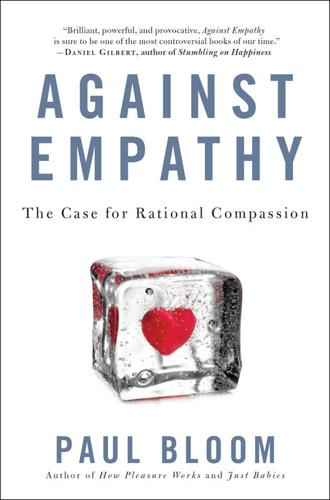
Against Empathy: The Case for Rational Compassion
by
Paul Bloom
It would be one thing if the soldiers in the jeep casually described their enemies as dogs in conversations with one another—this could be pure dehumanization—but to use the description as a taunt implies the opposite, that you believe they are people and wish to demean them. Kate Manne makes a similar argument in her discussion of the aftermath of a police shooting in Ferguson, Missouri, where police officers screamed at protesters, “Bring it, you fucking animals, bring it!” For Manne, this can best be seen not as a failure to acknowledge the protesters’ humanity, but as “a slur and a battle cry,” as an “insult that depends, for its humiliating quality, on its targets’ distinctively human desire to be recognized as human beings.”
…
See politics as poor moral guide, 2–3, 9–10, 54–55 positive aspects of, 2, 12–13, 18–19, 44–48, 76–77 spotlight nature of, 9, 30–31, 33–34, 87–88, 89–90, 95, 130, 136–37 use of term, 3–4, 16–17, 39–41, 61–62 empathy-altruism hypothesis, 25, 75–76, 85–86, 168 empathy deficit, 18, 19, 200 Empathy Exams, The (Jamison), 25, 146–47 empathy listening circles, 19 Empathy Quotient (EQ), 81–82 empathy scales, 77–83, 120–21 empathy training, 139–40 environmentalism, 49–50 envy, 69, 151–52 Epley, Nicholas, 17 Erdõs, Paul, 231 evil. See violence and cruelty Evil: Inside Human Violence and Cruelty (Baumeister), 180, 181–82, 183 evolution, 94–95, 154, 168–70, 179, 209–10 Ex Machina (movie), 148 fairness, 42–43, 120, 159 Fantasy scale, 79–81 fear, 47, 141, 208 feeling vs. understanding, 70–73 Ferguson, Missouri, shooting of Michael Brown, 205 Fiscus, Kathy, 90 Fiske, Alan, 184–85 Fiske, Susan, 69 Flanagan, Owen, 208–9, 210, 211 Foer, Jonathan Safran, 50 Food, Inc. (documentary), 50 food aid, 99 football, and violence, 187 foreign aid, 99 forgiveness, 25 Fourth Amendment, 37 Freddie Kruger (character), 180 free speech, 123–26 free trade, 112, 117 free will, 218–19, 221 Freud, Sigmund, 5, 145, 216 friendship, 149–54, 158–59 Fritz, Heidi, 133–35 Gandhi, Mahatma, 159–60 Garner, Eric, 118 Gawande, Atul, 145 gay marriage, 53, 55, 116, 122 Gaza War, 186, 188–89, 190 Gazzaniga, Michael, 220 gender differences, 81, 129, 133–36 objectification, 203–4, 206 genes, 8, 94–95, 154, 169, 195 Ghiselin, Michael, 166 Gladwell, Malcolm, 231–32 Glover, Jonathan, 74, 188 Godwin, Morgan, 202 Godwin’s Law, 63 Goebbels, Joseph, 196 Goodman, Charles, 138 goodness (good actions/behaviors), 41–42, 85–86, 101–6 effective altruism, 102–6, 238–39 empathy-altruism hypothesis, 25, 85–86, 168 high intelligence and, 233 measuring empathy and, 41–42, 77–82 publication bias and measuring empathy, 82–83 Gore, Al, 49–50, 121 Göring, Hermann, 196 Gourevitch, Philip, 93 greed, 188 Greene, Joshua, 10 guilt, 44, 87, 182, 198 gun control, 115, 116, 119, 122–23 gut feelings, 7, 213–14 Habitat for Humanity, 88 Haidt, Jonathan, 6, 120, 223 Haldane, J.

The Complacent Class: The Self-Defeating Quest for the American Dream
by
Tyler Cowen
Published 27 Feb 2017
Circa 2016, you can see a black president on your television or internet screen, but that doesn’t mean you’re going to see more neighbors of a different race than you would have seen a few decades ago. Or if you do, you’re much less likely to see such individuals outside of your income class, even if they are not of your race. The Ferguson, Missouri, and Baltimore riots of 2015 took a lot of people by surprise, especially a lot of white people, and the proximate cause of these events was an accumulating pattern of police violence and misbehavior. But the deeper underlying roots of these and subsequent events were that the civil rights movement never really triumphed, and since then some economic forces have brought a lot of reversals when it comes to racial justice and fair treatment.
…
Starting in the 1970s, police hired consultants, when necessary, for assistance in responding to extreme events. The result was that American public sector servants have nudged the citizenry closer to order in lieu of inflaming marchers with batons and tear gas. To be sure, the recent trouble in Ferguson, Missouri, and Baltimore, Maryland, has represented cracks in this façade, a theme to which I return to later. In both cases, the initial police behavior was violent, and the subsequent police response to protests induced crowd violence, which then spiraled out of control, especially in Ferguson. The local police responded to protests with tear gas, helicopters, and smoke bombs, when they should have behaved more deliberately and taken steps to defuse the tensions.

The Authoritarian Moment: How the Left Weaponized America's Institutions Against Dissent
by
Ben Shapiro
Published 26 Jul 2021
It just means that Oscar voters aren’t typical representatives of the American entertainment audience. It isn’t difficult to handicap the odds of Oscar victory by tallying woke talking points beforehand. But the Academy’s new standards weren’t about a change of heart. They were about ass covering. In 2015, on the back of massive racial unrest after the shooting of Michael Brown in Ferguson, Missouri, and the death of Freddie Gray in Baltimore, Hollywood’s woke contingent began complaining that Hollywood had marginalized black creators. In 2015, the Academy hadn’t nominated a single black actor in any of its categories. This, obviously, meant that Hollywood had to get woke. Thus the hashtag #OscarsSoWhite was born.
…
Real journalists, they say, are crusaders rather than passive observers. Real journalists are activists. Real objectivity is allegiance to refracting facts through the prism of leftism. The mask is off. In 2014, The Washington Post’s Wesley Lowery found himself under arrest in a McDonald’s during the Ferguson, Missouri, riots in the aftermath of the shooting of eighteen-year-old Michael Brown by Officer Darren Wilson. He claimed that he had been a victim of police brutality; the police claimed that Lowery had trespassed and refused orders to clear an area from the police.29 Lowery’s perspective on endemic American racism was obvious.
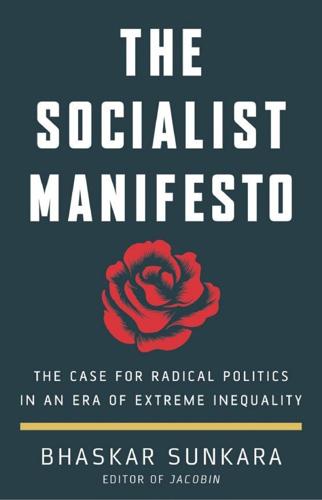
The Socialist Manifesto: The Case for Radical Politics in an Era of Extreme Inequality
by
Bhaskar Sunkara
Published 1 Feb 2019
It was a glimmer, more obvious than the Wisconsin uprising, that a simple message based on fairness and democracy could garner widespread support. A FEW YEARS AFTER Occupy, another movement made it impossible to ignore the failures of American democracy. On August 9, 2014, in the St. Louis suburb of Ferguson, Missouri, a white police officer named Darren Wilson gunned down a black teenager, Michael Brown. Only two years earlier, Trayvon Martin, a black seventeen-year-old from Florida, had been shot to death by a white vigilante while walking in his own neighborhood, eliciting outrage around the country. The man who killed him, a self-appointed neighborhood watchman named George Zimmerman, said he was terrified of the skinny teenager, and avoided punishment by claiming he acted in self-defense.
…
See Britain environmentalism, 240–241 equal pay for equal work, 115, 121 Erfurt Congress, 51–52 Erfurt Program, 58–59, 63, 72, 82–83 Erlander, Tage, 116, 118 Espionage Act, 173–174 Ethiopia, 153 European Monetary System, 125 eurozone, 125, 221 Evolutionary Socialism (Bernstein), 63 exceptionalism, 159 Factory Act of 1847, 46 fake news, 205 famine, 38, 102, 139, 146, 147–148 farm collectivization, 102, 142–143, 144–146, 154 February Revolution, 81, 88–91. See also Russian Revolution (1917) Federal Elections Campaign Act, 231 Federalist No. 10 (Madison), 233 Ferguson, Missouri, 198–199 feudalism, 36–37, 132, 133, 161 filibuster, 234–235 Finnish civil war, 117 First International, 43 Fitzpatrick, John, 176 Five Year Plan (China), 141–142 Five Year Plan (Russia), 101–102 Foot, Michael, 208 foreclosure, 193 foreign aid, 154, 156 “Forward March of Labour Halted?
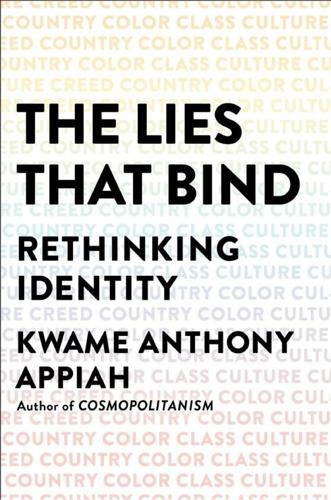
The Lies That Bind: Rethinking Identity
by
Kwame Anthony Appiah
Published 27 Aug 2018
One reason race continues to play a central role in international politics, as well, is the politics of racial solidarity that Du Bois helped to inaugurate in the black world, in cofounding the tradition of Pan-Africanism. It shows up in diverse ways: African-Americans are more likely than whites to be interested in U.S. foreign policy in Africa; people in Port Harcourt, Nigeria, protested the 2014 killing of Michael Brown by a white police officer in Ferguson, Missouri; black Americans have a special access to Ghanaian passports; Rastafarianism in the Caribbean celebrates Africa as the home of black people; and heritage tourism from North and South America and the Caribbean to West Africa has boomed.34 But Pan-Africanism is not the only movement in which groups defined by common ancestry show transnational solidarity: many Jews show an interest in Israeli politics; Chinese follow the fates of Chinese in their diaspora; Japanese follow goings-on in São Paulo, home to more than a million people of Japanese descent—and to perhaps a million people of Arab descent (largely Lebanese), some of whom follow events in the Middle East.35 Identities rooted in the reality or the fantasy of shared ancestry remain central in our politics, both within and between nations.
…
B., 124–28, 130, 132 Dunlop, Daniel, 138, 139 Dworkin, Ronald, 177 East Asia, 120 East End (London, England), 153, 154 Eastern Europe, 77, 79, 195 East Germany, 78 East Pakistan, 78 Ecclesiastes, Book of, 52 Ecclesiasticus, Book of, 50 Edinburgh, Scotland, 86, 196 Edison, Thomas, 200 Edward III (king of England), 75 Egypt, 75, 79, 125, 192, 200, 203 Einstein, Albert, 181, 182 “Elegy Written in a Country Churchyard” (Gray), 181, 182 Eliot, George, 3 Elizabeth I (queen of England), 198 Elmhirst, Dorothy, 137, 138, 160 Elmhirst, Leonard, 137, 138, 140, 160, 185 Engels, Friedrich, 158 England, 6, 7, 20, 45, 60, 61, 75, 76, 87, 88, 113, 138, 139, 142, 148, 150, 153, 158, 162, 163, 171, 189, 191, 199; see also Great Britain “English Aristocracy, The” (Mitford), 163, 164 Ephesians, Letters to, 47, 59 Erikson, Erik, 3, 4 Essay on the Inequality of the Human Races (Gobineau), 113 Esther, Book of, 52 Ethiopia, 79, 125 Euclid, 196, 207 Europe, 5, 78, 79, 87, 98, 103, 104, 107, 111, 112, 114, 117, 119, 120, 123, 125, 126, 128, 129, 133, 146, 150, 191, 192, 194, 197, 198, 201, 205, 207, 219 Eve (biblical figure), 111 Evelina (Burney), 155 Exodus, Book of, 67 Ezra, Book of, 52 Family and Kinship in East London (Young and Willmott), 153, 154, 161 Federation of Malaya, 91 Federation of Malaysia, 91 Ferguson, Missouri, 132 Filkins, England, 61 Fitzpatrick, Louisa, 138 Flanders, Michael, 21 Ford, Henry, 140 Ford, Leonard, 140 Forster, E. M., 215 Fort St. Sebastian, Ghana, 134 Four Weddings and a Funeral (film), 45 France, 20, 21, 28, 71, 75, 84, 88, 113, 114, 172, 187, 193, 195 Frederick II (Holy Roman Emperor), 198 Frederick the Great (king of Prussia), 203 Free Territory of Trieste, 90 French Empire, 93 Freud, Clement, 138 Freud, Lucian, 138 Fujian Province, China, 91 Furbank, P.
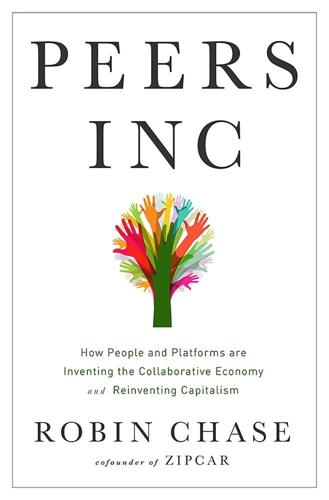
Peers Inc: How People and Platforms Are Inventing the Collaborative Economy and Reinventing Capitalism
by
Robin Chase
Published 14 May 2015
The miracle of finding the right person at the right time is also transforming political activism. An activist and writer known by her Twitter handle, @FeministaJones, led an organizing movement for a national moment of silence (#nmos14) in response to the police killing of Michael Brown, a black teenager walking down the middle of a street at midday in Ferguson, Missouri, on August 9, 2014. Within just three days, Jones’s digital organizing—mostly on Twitter, Facebook, and Google Docs—resulted in thousands of people in tens of cities nationwide coming together. And while the mainstream media reported on the case slowly and sporadically with a handful of reporters, it was people in the right place—protesters, bystanders, eyewitnesses—who live-tweeted up-to-date news, videos, and photographs of events unfolding in Ferguson.
…
See Controlled kernel; Innovation Expertise, peers as source, 81–85 Exponential learning, 78–81, 146, 185–186 Facebook allowing users to communicate, 128 fallout from experiment, 135–136 as power user, 119–120 Failure, 100. See also GoLoco Farm-to-fork program, 235–237 Farmville, dependence on Facebook, 119–120 FedEx, employment status, 156 Ferguson, Missouri, protests through social media, 83–84 Field, Matan, 215 Financing angel and capital investors, 9–11 crowdfunding, 202–205 options for platform building, 199–203 Flexibility, 56–57, 188–189 Flexicurity, 190 Forbes’ “Best Countries for Business,” 190 Forest fires, Indonesia, NGO’s work, 230–232 Free and open-source software (FOSS), 25 and community, 134–135 crowdfunded and privately financed, 207–211 as excess capacity, 42–44 power of communities, 219–220 volunteer coordinator, 210–211 Free riders, problems and opportunities, 166 Freelancers no perks or protections, 252 U.S. numbers, 157–158 Freight, excess capacity, 94 Future, near, Peers Inc, 88–89 G-Auto, 239–243 GE, partnering with Quirky, 63–64 Gebbia, Joe, 58 General Public License (GPL), 205–207 Gift crowdfunding, 203–205 GitHub, 43, 45, 209–210 GlaxoSmithKline, edge case innovation, 170 Global events, 350.org, 233 Global Forest Watch, 228, 230–232 Global Positioning System.

Generations: The Real Differences Between Gen Z, Millennials, Gen X, Boomers, and Silents—and What They Mean for America's Future
by
Jean M. Twenge
Published 25 Apr 2023
Even though most people didn’t agree that Obama’s election put an end to racism, the 2000s and early 2010s were still a quieter period for race relations, with less than 1 out of 5 high school seniors worried about Black-White race relations and less than 1 out of 10 believing race relations had gotten worse. After Michael Brown was shot by police in Ferguson, Missouri, in 2014, racial tensions would rise again (see Figure 4.30, there’s more on post-2015 race relations in the Millennial chapter). After several years of simmering racial tensions in the late 2010s, we all know what happened next: George Floyd (b. 1973) was killed in Minneapolis in 2020, and racial reckoning was upon the country once more.
…
For about a year, #BlackLivesMatter had only limited circulation, appearing on Twitter a little more than 5,000 times over six months. Then came 2014. In July, Eric Garner (b. 1970) was killed after police in Staten Island, New York City, held him in a chokehold as bystanders recorded smartphone video. In August, Michael Brown (b. 1996) was shot by a police officer in Ferguson, Missouri. Although the shooting itself was not captured on video, bystanders took footage as Brown’s body was left on the ground for four hours. Protests broke out in Ferguson, and Cullors organized five hundred people to join in the protests. “The BLM ride was organized in the spirit of the early 1960s interstate Freedom Riders in the racially segregated south, after the visuals of Michael Brown’s lifeless and blood-drenched body brought to mind mirages of lifeless black bodies hanging from lynching trees in the all-too-recent past,” she wrote.
…
More teens said it was important to correct social and economic inequalities, and more said they were interested in donating money to organizations focused on groups helping racial minorities. Both views reached all-time highs in 2021, exceeding the previous peak in interest in the 1990s (see Figure 6.28). Just as with adults, the interest in racial issues built after the protests surrounding Michael Brown’s (b. 1996) death in Ferguson, Missouri, in 2014, several years before Trump’s inauguration in 2017 and a half decade before George Floyd’s death in Minneapolis. Much of this racial reckoning has centered on race and law enforcement, with protests following police killings of Black people (Eric Garner, Breonna Taylor, Tamir Rice, Philando Castile) or the failure to swiftly bring charges against civilians who killed Black people (Trayvon Martin, Ahmaud Arbery).

Tribe: On Homecoming and Belonging
by
Sebastian Junger
Published 23 May 2016
Kung would not permit that because it would represent a serious threat to group cohesion and survival, but that is not true for a wealthy country like the United States. There have been occasional demonstrations against economic disparity, like the Occupy Wall Street protest camp of 2011, but they were generally peaceful and ineffective. (The riots and demonstrations against racial discrimination that later took place in Ferguson, Missouri, and Baltimore, Maryland, led to changes in part because they attained a level of violence that threatened the civil order.) A deep and enduring economic crisis like the Great Depression of the 1930s, or a natural disaster that kills tens of thousands of people, might change America’s fundamental calculus about economic justice.
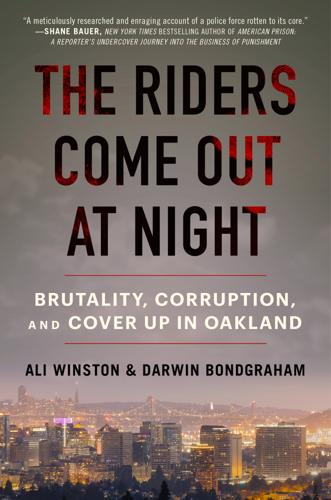
The Riders Come Out at Night: Brutality, Corruption, and Cover-Up in Oakland
by
Ali Winston
and
Darwin Bondgraham
Published 10 Jan 2023
The results have been distinctly mixed. Some of the first consent decrees in cities such as Pittsburgh (1997), Washington, DC (2001), and Cincinnati (2001) showed promise by changing long-held police practices and reducing police shootings. More recent interventions in cities like Portland, Oregon (2015), Albuquerque (2015), Ferguson, Missouri (2016), Baltimore (2017), and Chicago (2019) came on the heels of controversial police killings and verified the lived experiences of overpoliced communities by revealing the multitude of ways that law enforcement systematically abuses the poor. But ask residents of these cities if they would consider their police forces “fixed,” and many will tell you that real change remains to be seen.
…
Bush administration downsized the DOJ’s Civil Rights Division and actively discouraged pursuing new consent decrees.16 During Bush’s presidency, only one law enforcement agency was sued and placed under a new federal consent decree.17 Barack Obama reversed course, opening a record number of investigations, leading to fifteen new consent decrees with agencies, including the New Orleans Police Department, Arizona’s Maricopa County Sheriff’s Office, and the police department in Ferguson, Missouri.18 However, despite the clear pattern of police misconduct in Oakland in the late 1990s and early 2000s, and the grievous consequences of the Riders scandal on the OPD’s reputation, as well as for active criminal cases and convictions, there was no serious federal interest in pursuing systemic oversight and reform.
…
B., 123 Dunakin, Mark, 244–50, 253, 254, 256 Dunbar, Pete, 53, 77, 212 Dunbar, Vernon, 279 Dye, Jeremiah, 200 Dykes, Vernon, 84 Dyson, Libby, 154 E East Bay Express, 173, 227, 288, 292, 293, 310–11, 343 East Bay Times, 336 East Palo Alto Police Department, 52, 212 Eberhardt, Jennifer L., 312–13, 357–58 Edises, Bertram, 115–16, 118 Elder, Nicole, 68, 186 Elzey, David, 216–17, 219 Emanuel, Rahm, 346 Endaya, Dan, 55–57, 70, 209 Ennis, Philip, 132 ENT (Money Team, gang), 302, 303–4, 307, 308 Espionage Act (1917), 110–11 Esters, Maurice, 200, 361 Evans, Kelli, 97, 206, 213, 220 excessive use of force, see use of force incidents Executive Force Review Board (EFRB), 186, 197–98, 279–80, 366–70 F Faeth, Cullen, 340–41 Fairow, Benson “Ben,” 206, 207, 342, 345 Faleafine, Sammy, 56–57, 170 The Family (gang), 165–66 Farrell, Jennifer, 69–70, 317 Farrow, Robert, 139–40 Federal Bureau of Investigation (FBI) Anti-Racket Council and, 112–13 Melvin Black shooting and, 154 COINTELPRO program, 136–37, 160 fugitive status of Frank Vazquez and, 61, 64, 70, 76, 78, 90, 207, 383 investigations of the OPD, 154, 233, 234, 236, 278, 288 Gary King, Jr. killing and, 188–89 surveillance of the “Oakland Hundred,” 261–64 Feinstein, Dianne, 148, 254 Ferguson, Missouri Police Department Michael Brown shooting, 2–3, 316–17 federal consent decree, 2 Fields, Edwoods, 219 Fierro, Rocio, 272 Figueroa, Paul, 285–86, 291, 292, 342, 345 Fishman, Edward, 64, 66, 70, 79, 80 Flenaugh, Martin “Taliban,” 303 Flowers, Samuel, 266 Floyd, George, 1, 2–3, 377, 380 Flynn, Elizabeth Gurley, 109 Forrest, Michael, 144 Foster, Marcus, 141 Foster, Robert “Bob,” 155–56, 158 Foucault, Michel, 311 Frazier, Evan, 221 Frazier, Thomas, 291–92, 296–97, 299, 301–2, 306, 307, 313 Fredericks, Robert, 137–38, 146 Freedman, Robert, 267 Frey, John, 134–37, 140 Fricker, Mary, 232 Frye, Marquette, 129 Funktown USA (gang), 165, 172 G Gaba, David, 206 Gain, Charles becomes OPD Chief, 138, 145, 177 helicopter crash (1973) and, 141 Bobby Hutton shooting and, 137–39 as OPD Deputy Chief, 144, 145 OPOA vote of no confidence, 148, 374 reforms under, 146, 149–50, 168, 295 resistance to OPD racism and corruption, 145–50, 160, 167–68, 275, 358 retirement from OPD, 146, 148 Galindo, Gus, 43–47, 48–51, 69, 233, 235 Gallo, Noel, 351–53, 375 gangs CalGang database, 354 Ceasefire / Operation Ceasefire violence intervention program, 268, 274, 307–8, 311–12, 314, 347–48, 380 gang injunctions, 265–76, 282, 307, 354 gunplay and, 303–5, 307–8 prison sentences, 170, 172, 178 “Stop the Injunctions Coalition,” 267–68 turf wars, 302–8 see also drug trade and names of specific gangs Gantt, Mike, 334–37 Garbutt, Bruce, 72 Gardner, Henry, 176–77 Garner, Eric, 316 Garry, Charles, 136 Garry, James, 41–42, 51 Gates, Darryl, 91, 170 Gayden, Carl, 165 Gee, Gary, 239 George, John, 121–22, 145, 151, 156–57, 159, 162 Gibbons, Walter, 146 Gilbrecht, Jan, 298 Gill, Ryan, 198–99 Gilmore, Carter, 154 Giuliani, Rudy, 37–38 “goldenrod” felonies, 99 Gonzales, Anthony, 46 Gonzales, Patrick, 181–89, 191–93, 196, 199, 206, 251–53, 291, 306 Grant, Oscar, III Black Lives Matter movement and, 244, 316, 353 officer-involved shooting, 237–44, 254, 256, 259–64, 299, 353 Oscar Grant movement, 240–44, 259–64, 281–84, 310, 312, 316, 353 Gray, Crystal (Raphaelle Gary), 161, 162 Gray, Freddie, 316 Great Recession, 243, 273–74, 273–76, 280–82 Great Society programs, 34, 132–34, 168 Green, Angelica, 44, 45, 46 Green, Phil, 187 Greenberg, Paul, 258 Grijalva, William, 190, 351 Grinage, Luke, 190–91 Grinage, Raphael, 190–91 Grinage, Rashidah, 189–91, 351, 373 Grubensky, John, 176 Gruber, Charles, 96–97 Guap, Celeste, see Abuslin, Jasmine (“Celeste Guap”) Guillen, Abel, 353 gun violence, see drug trade; gangs; officer-involved shooting (OIS) incidents; police officer shootings Gutierrez, John “Johnny G,” 210 Guttormson, Mary, 23, 24, 30, 55, 209 Gwilliam, J.
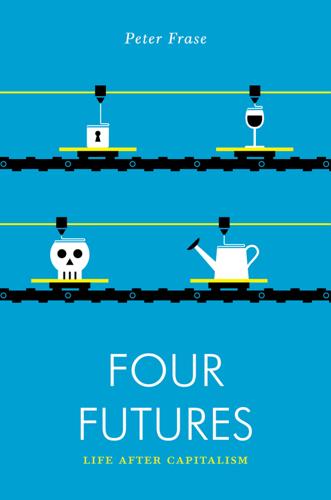
Four Futures: Life After Capitalism
by
Peter Frase
Published 10 Mar 2015
In July 2014, New York City resident Eric Garner died after being placed in a chokehold by officers, for the suspected crime of selling untaxed loose cigarettes. His death provoked an uproar in part because the incident was caught on a cell phone camera, but also because it brought attention to something that is all too routine. Soon after, Mike Brown was shot down in the streets of Ferguson, Missouri, giving more fuel to a national movement. Although exact details of the encounter are disputed, all agree that Brown was unarmed and that the officer who shot him started a confrontation over the grave crime of walking in the street. These events echoed many similar incidents around the country, an unceasing drumbeat of violence over the years.
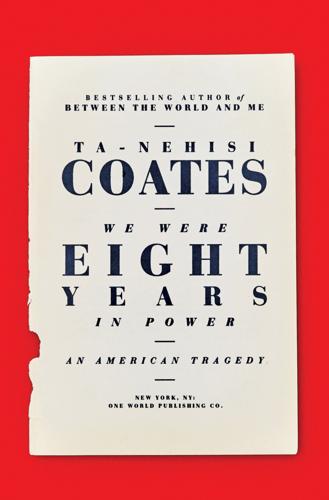
We Were Eight Years in Power: An American Tragedy
by
Ta-Nehisi Coates
Published 2 Oct 2017
“I stole this head, these limbs, this body from my master, and ran off with them.” In Douglass’s time, to stand up for black rights was to condone black criminality. The same was true in King’s time. The same is true today. Appearing on Meet the Press to discuss the death of Michael Brown in Ferguson, Missouri, the former New York City mayor Rudy Giuliani—in the fashion of many others—responded to black critics of law enforcement exactly as his forebears would have: “How about you reduce crime?…The white police officers wouldn’t be there if you weren’t killing each other 70 to 75 percent of the time.”
…
“And I’ve often wondered, are they better off as slaves, picking cotton and having a family life and doing things, or are they better off under government subsidy? They didn’t get no more freedom. They got less freedom.” That same year, in the wake of Michael Brown’s death, the Justice Department opened an investigation into the police department in Ferguson, Missouri. It found a city that, through racial profiling, arbitrary fines, and wanton harassment, had exploited law enforcement for the purposes of municipal plunder. The plunder was sanctified by racist humor dispensed via internal emails among the police that later came to light. The president of the United States, who during his first year in office had reportedly received three times the number of death threats of any of his predecessors, was a repeat target.
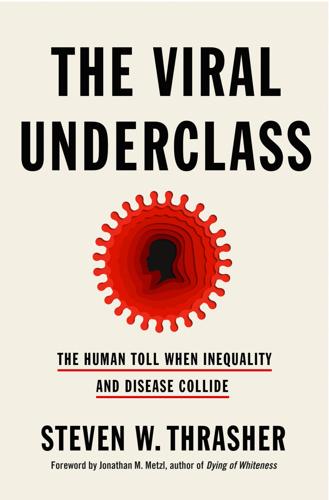
The Viral Underclass: The Human Toll When Inequality and Disease Collide
by
Steven W. Thrasher
Published 1 Aug 2022
A few months after I published my first story about Johnson in the summer of 2014, much of the entire world would learn something similar via another young Black man also named Michael, near St. Louis. On August 9, 2014, a white police officer named Darren Wilson shot eighteen-year-old Michael Brown Jr. in the heart of the Canfield Green Apartments in Ferguson, Missouri. Michael Brown was unarmed, and his bloodied body was left lying in the street for hours. While it lay there, something unusual happened in the media history of dead Black victims of police killings. Instead of the police feeding their narrative of events to traditional media outlets for them to repeat—a narrative in which the victim would be described as a “thug” who needed to be put down—Mike Brown’s friends and neighbors created a counternarrative on social media of an innocent dead child.
…
See also addiction; overdoses; and specific drugs duCille, Ann Dugas, Gaëtan Duggan, Lisa Dying of Whiteness (Metzl) dyslexia Ebola education Egyes, Lynly elderly El Diario elections of 1992 of 2016 Elmhurst Hospital Emanuel, Ezekiel Engels, Friedrich Enola Gay (plane) enslavement Environmental Protection Agency (EPA) epilepsy eugenics European Union (EU) evictions Facebook false consciousness Fast Food Nation (Schlosser) Fauci, Anthony Federal Emergency Management Agency (FEMA) fentanyl Ferguson, Missouri Ferguson Commission Ferguson Police Department (FPD) Fernandez, Isidro Fernandez, Oscar Finkelstein, Avram firefighters Fisher, Mark Flint, Michigan Flores, Sergio Florida Flowers, Curtis Floyd, George Food and Drug Administration (FDA) food insecurity food stamps “Footnote to ‘Howl’” (Ginsberg) Forbes Forensic Architecture Foucault, Michel France Frey, Jacob Fuentes, Axel Fulton Reception and Diagnostic Center fundamental causes, theory of Fyssas, Pavlos Garner, Eric gay activists “Gay Inc.”
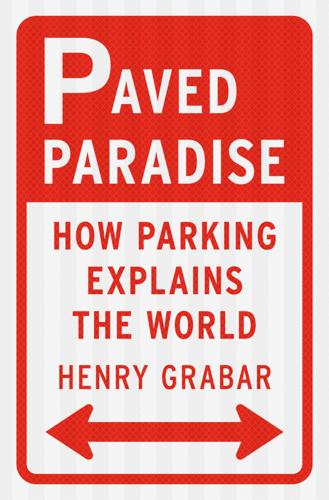
Paved Paradise: How Parking Explains the World
by
Henry Grabar
Published 8 May 2023
But since politicians were reluctant to raise meter rates, the primary way that meters put money in city coffers by the start of the twenty-first century wasn’t from payments but from penalties. In fact, cities didn’t even need meters at all to make a ton of money off parking—in a perverse way, the free-for-all engendered by removing the meters encouraged illegal parking, citations for which became a major component of revenue-driven policing. In a review of this practice in Ferguson, Missouri, published after the 2014 killing of Michael Brown, the Department of Justice told of a low-income woman who parked illegally one day in 2007. She received two citations and a $151 fine, plus fees. She attempted to make partial payments of $25 and $50, which the court refused. Then she missed her court date, resulting in an arrest warrant and an escalating series of fines.
…
See Downtown Business Men’s Association The Death and Life of Great American Cities (Jacobs), 62 Death by Parking (Van Horn), 93–94 decentralization, 51, 55–56, 57, 73 DeLano, Everett, 16–17 Delanoë, Bertrand, 275 delivery companies, 259–60, 272 Del Mar Times (newspaper), 16–17 Democracy in America (de Tocqueville), 269 Density Bonus Law, in California, 206 Denver, Colorado, 20, 56, 57 Department of Energy, U.S., 80 Department of Housing and Urban Development (HUD), 192, 221 Department of Justice, U.S., 205 DePinto, Carl, 107–8, 110, 111–12 Des Moines, Iowa, 75 Detroit, Michigan, 59–60, 65, 74, 152–53 developers, 48, 51, 62, 181, 189–92, 213 Grubb as, 216–21 Hitzke as, 5–13, 14–18, 20, 204 Katz, D., as, 99–100, 103–4, 113 parking requirements effect on, 151, 162, 193, 206, 280 Shomof as, 188–89 Devlin, George, 67–68 dingbat, parking model, 183 diplomats, UN, parking enforcement of, 42–43, 44–45 Disney, Walt, 105 Disney World, 105–6 disputes, parking, x, 22–23, 262 Dodger Stadium, LA, 75 Doherty, Brian, 126 Don’t Park There (movie), 54 double-parked vehicles, 42, 53, 80, 260, 262–63, 277 downtown, 29, 52–53, 54, 58–59, 72 Gruen designs for, 60–64, 84, 105 LA, 172–75, 188–94 Downtown Business Men’s Association (DBMA), 173–74 Drejka, Michael, 23 drivers, xvii, 25, 81, 280 driveway tax, LA, 78 driving, xvi, 79–80, 81–82 effect on housing, 178 free parking effect on, 160–61 Droste, Lori, 210 Duany, Andres, xiii–xiv Duda, Turan, 182 Duke University, Parking & Transportation at, 110, 111–12 Dumbo, New York, 252, 254 Dunham, Daniel, 185 E Eckman, Meghan, 93 Edge City (Garreau), 178 Edina, Minnesota, Southland shopping center in, 60 Eisenhower, Dwight D., 73 electric vehicles, 226, 278–79 Eller, Carol, 96 Emanuel, Rahm, 140–41, 142, 200 Empire State Building, xiii enforcement, parking, 40, 42–43, 44–45, 49–50 Eno, William Phelps, 42, 53, 56, 57, 248 environment, xiv, 76–79 Environmental Protection Agency, U.S., 87, 99 Equal Protection Clause, Fourteenth Amendment, 28 equipment, for parking garages, 112 Essex, Massachusetts, 205 Europe, 65, 79 excess, parking, 69, 71, 73 F Facebook, Shoupistas on, 148 Fannie Mae, 223–24 Farmer, Paul, 147 fear, of parking shortage, x, xv, xvi, 80 Federal Highway Administration, U.S., 72 Fehr & Peers, 258 Feinstein, Dianne, 168 Felt, Mark, 92 Ferguson, Missouri, 163–64 Ferris Bueller’s Day Off (movie), 107 Fields, David, 85 Finley Forest housing association, 23 Fioretti, Bob, 126 Five Points, Denver, 20 Flannery, Michael, 95–96, 97–98 Flatiron, Manhattan, 254–55 flooding, in cities, 76–77 Florida, 23, 92 Flushing, Queens, xiv Follett, John, 66–67 food trucks, 250–51 Forbes (magazine), 99 Forbidden City tour, 176–77, 184, 186–88 Fort Worth, Texas, Gruen in, 60–63, 84 four-plus-ones, in Chicago, 204–5 Fourteenth Amendment, Equal Protection Clause in, 28 France, Paris, 274–75 Francis, Pope, 3 Freddie Mac, 241 free parking, 81, 83, 148, 162, 172, 267 affordable housing relation to, 21–22, 282–84 effect on citations, 163–64 effect on traffic, 160–61, 200 Shoup on, 150–51, 160 traded for free transit, 264–66 front porches, 237–38 Fullerton, California, 228–30 Fulton, Bill, 165–67 Futurama exhibit, General Motors, 58 G Garage Employees Union, of Manhattan, 101–2 garage parking, 69–70, 86, 92, 173, 275, 279 cost of, 33, 45 equipment for, 112 municipal, 73 in New York, 99–103 rent relation to, 219–21, 280 SpotHero using, 119–20 street parking compared to, 164–65, 167 in Texas, 63 theft from, 94–96, 97–98 garage rock, 240 garages, private, 236–40, 242 ADUs in, 229–32, 233–35, 241, 242–45 Garcia, Kathryn, 271 Garofalo, Janeane, 9 Garreau, Joel, 178 gas usage, sprawl effect on, 80–81 Geddes, Norman Bel, 58 Gehl, Jan, 254 Gehry, Frank, 108, 191–92 General Motors, Futurama exhibit of, 58 Gennawey, Sam, 105 Genovese crime family, 101–3 George Costanza (fictional character), 91 Georgia, Cobb County, 109 Gifford, Bill, 15 Gilmore, Tom, 189, 190–91, 192 Goldberg, Bertrand, 128 Gotbaum, Betsy, 46 Gottlieb, William, 162 government employees, 43, 45, 46–47, 49 Granite Properties, 221–22, 223 Grant Park Garage, Chicago, 72 Greater London Authority, UK, 274 greenhouse gas emissions, 78–79 green space, parking requirements effect on, 183–84 Greenwich, Connecticut, 9 Gricco, Anthony, 95–96, 97–98 gridlock, 42, 43, 52–53 Griffin, Walter Burley, 238 Griffith, Greg, 268 groundwater absorption, 78 Grubb, Clay, 216–18, 219–20, 221 Gruen, Victor, 51, 57, 66, 71–72, 87, 184 downtown designs of, 60–64, 84, 105 The Heart of Our Cities by, 64–65 park-once strategy of, 200–201 shopping center designs of, 58–60, 65 Guo, Zhan, 274 H Habitat for Humanity, 205, 282 Hales, Charlie, 240 Hammerschlag, John, 113–17, 120 Hardwick, Jeffrey, 59 Harris, Kamala, 39 Hartford, Connecticut, 86–87 Harvard, Bureau for Street Traffic Research at, 53 Hastings, Andrew Glass, 206 Hawaii, kapu violations in, 24 Hayes, Shirley, 255–56 The Heart of Our Cities (Gruen), 64–65 Hecht department store, 68 Herculaneum, parking in, xv Herzog, Jacques, 92 Hickenlooper, John, Daley, R.
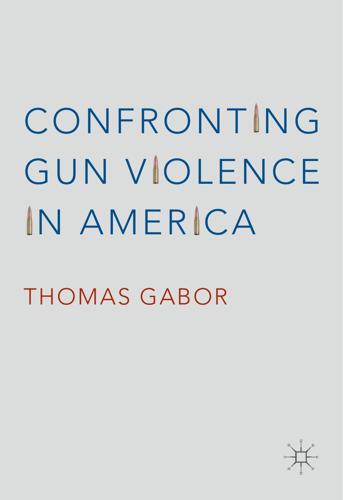
Confronting Gun Violence in America
by
Thomas Gabor
Published 12 Sep 2016
Incidents of self-protection by police would be even fewer, as officers may shoot at fleeing suspects and may also engage in illegitimate uses of force. At the time this section is being written, there has been increasing concern around the USA regarding police shootings of unarmed suspects, especially young AfricanAmerican men and teenagers (e.g., the fatal shooting of Michael Brown by a Ferguson, Missouri, police officer). 142 Confronting Gun Violence in America The New York City Police Department (NYPD) provides detailed data on intentional firearm discharges by police occurring in conflicts with civilians. The city’s annual report on firearms discharges for 2011 notes: While it must be acknowledged that the most serious category of discharges— shootings involving adversarial conflict with a subject—increased by 9 percent over last year’s record low, it is also true that experiencing 36 adversarial-conflict incidents during a year makes for a remarkably infrequent rate.
…
Heller, 267, 272n12 Dodge City, Kansas, 12, 164, 279 domestic violence, 59, 82n34, 170, 243, 256, 283, 285, 296–8, 328, 344n69 domestic violence restraining orders, 169, 313 Donohue, J., 14, 19n44, 185n16, 185n17, 221, 227n21 drive-by killings, 58 drop test, 303, 307 Duke University, 29, 244, 288 Dunblane, Scotland, vii, 4 Dunn, M., 148, 172, 186n38 E Earp, W., 12 educational attainment, 140, 289 Ellington Bridge, 96 Emanuel African Methodist Episcopal Church, 286 England and Wales, 22, 23, 97 Erfurt, 5 Estonia, 39, 40, 46 Everytown for Gun Safety, 6, 17n14, 72, 80n2, 81n16, 81n20, 81n21, 82n35, 283, 296, 343n50, 343n63 Index F Farleigh Dickinson University Poll, 236 FBI, 26, 66, 78, 108, 134, 138, 141, 148, 149, 183, 221, 253, 280, 328 fear, 4, 14, 26, 27, 52, 134–6, 173, 203, 208, 219, 258, 259, 270, 280, 339 fear of rape, 134 feelings of safety, 182 female homicide victims, 9, 203 Ferguson, Missouri, 141 Finland, 7, 8, 23, 40 firearm discharges by police, 142, 145 firearm homicide rate, 7, 42, 122, 128n5, 285, 311, 319 firearm injuries, 7, 10, 11, 18n20, 19n31, 100n12, 147, 260n5, 324 firearm ownership levels, 91, 128n3 firearm-related injuries, 6, 10, 14, 101n39, 159n36, 276, 304 firearms industry, 134, 193–215, 303, 314, 324 firearms training, 179, 188n58, 189n72, 223 firearm suicide, 9, 43, 83, 90–3, 97, 98, 122, 289, 299, 318, 319, 349n129 firing test, 307 First Amendment, 264 Fleegler, E., 126, 129n11, 289, 342n43 Florida, ix, viii, 28, 52, 58, 67, 74, 135, 136, 148, 155, 169–71, 173–5, 183, 357 187n44, 187n 47, 187n 48, 218–20, 223, 256, 264, 312, 314 Florida State University, 31, 56, 109, 143, 149, 167 focused-deterrence strategies, 314–16 Follman, M., 19n34, 66, 68, 72, 74, 80n6, 81n8, 81n17, 81n22, 82n29, 351n166 Fortunato, D., 167, 185n24 Fox, J.

Bourgeois Dignity: Why Economics Can't Explain the Modern World
by
Deirdre N. McCloskey
Published 15 Nov 2011
Unless overawed by the threat of state violence in police or planning or regulation, ordinary people, especially the lower classes, will spurn priests, stop paying their rents and taxes, not save enough for old age, kill each other, not buy enough insurance, speak against the government, appear with hair uncovered, refuse military service, drink to excess, commit unnatural acts, use naughty words, chew gum, smoke marihuana—committing in sum, as Bill Murray put it in Ghost Busters, “human sacrifice, dogs and cats living together, mass hysteria.” A progressive or a conservative program of heavy regulation is a first-night-in-Ferguson-Missouri notion of keeping order. It is the justification of all tyranny, hard or soft. “Women will go wild if not confined,” the chieftain says, and then insists on burqas and honor killings. In matters of religious belief and in matters of economic betterment and in matters of clothing style, almost everyone before the tolerant Poles and Dutch in the sixteenth century or the reluctantly tolerant English in the early eighteenth century or the anyway ungovernable Americans of the late eighteenth century were persuaded that liberty meant license.
…
Perhaps a mere quarter of the effort of the 1,313,000 police and sheriff’s patrol officers, detectives and criminal investigators, correctional officers, and private detectives is spent on persuasion, though the ones I’ve talked to put the figure higher. Look at the difference from one night to the next in the persuasiveness in 2014 of the police in Ferguson, Missouri. In health care, as anyone who has worked in it knows, sweet talk is important—advocating for the patient, getting him to stay on his blood-pressure medicine, talking sweetly with other caregivers, dealing with insurance companies and hospital administrators (some of whom are included above in the managerial category).
…
.: censorship in the East, 684n8; Chinese higher education, 687n7 Falangas, Andronikos: Austrian bureaucracy, 438 Fallows, Deborah: Chinese aspirations, 23 Falstaff, Sir John, 309, 317–318 family as socialist, 577, 624; Swedish national home, 577 Farrell, James, 42 faux policies: effect on poor, 73, 572 Feinstein, Charles: quotes report of van Imhoff, 690n35 Feinstein, Jonathan: acknowledged, xxxix Fenoaltea, Stefano: GDP, 654n6 Ferguson, Missouri: policing, 493; regulation, 208 Ferguson, Niall, chap. 10; imperialism, 88; Jews and betterment, 687n3; killer apps, 85; Landes-Ferguson right wing, 89; national decline, 91; overpopulation of the East, 11; power and plenty, 87. See also domination; imperialism; power and plenty Fernandez, Angel: early Spanish liberals, 682n7 Field, Alexander: benevolence, 218; betterment in the 1930s, 206 Field, Marshall: business plan, 59 Fields, Polly Stevens, 270 Filling, John: social body, 299 Findeisen, Chris, 667n9 Findlay, Ronald: power and plenty, 99; use of Mantoux, 99.

Twitter and Tear Gas: The Power and Fragility of Networked Protest
by
Zeynep Tufekci
Published 14 May 2017
For social movements, an algorithm can be a strong tailwind or a substantial obstacle.32 Algorithms can also shape social movement tactics as a movement’s content producers adapt or transform their messages to be more algorithm friendly. Consider how the Black Lives Matter movement, now nationwide in the United States, encountered significant algorithmic resistance on Facebook in its initial phase. After a police officer killed an African American teenager in Ferguson, Missouri, in August 2014, there were protests in the city that later sparked nationwide demonstrations against racial inequalities and the criminal justice system. However, along the way, this burgeoning movement was almost tripped up by Facebook’s algorithm. The protests had started out small and local.
…
Although the killer was acquitted (there was no video of the incident, and the only person alive to tell the story was the killer), the social networks that carried on this conversation continued to keep talking to one another and to grow. Two years later, in August 2014, another black teenager, Michael Brown, was killed by a police officer under murky circumstances in Ferguson, Missouri (see my examination in chapter 6 of how Facebook’s algorithm treated this incident, and other details). Some witnesses claimed that his hands were up in the air when he was shot.25 There was no video of the incident. His body was left in the middle of the street in the hot August sun for many hours.
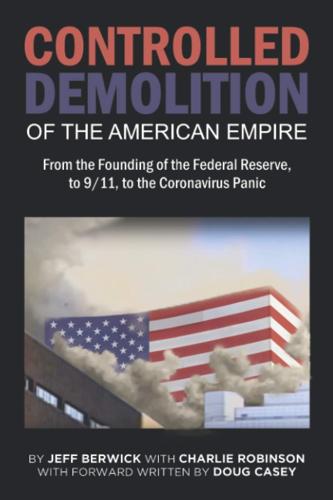
The Controlled Demolition of the American Empire
by
Jeff Berwick
and
Charlie Robinson
Published 14 Apr 2020
They try to implant their ideas into the heads of average Americans in order to make it seem like it was their idea all along which, given the current state of the average submissive American, is not very difficult. Once the people ponder this implanted idea of social change, it is critical for them to act on it in order for the idea to become a reality. This is where the financial element to the NGOs come into play as the buses show up to deliver protestors to Ferguson, Missouri and the migrant invasion of asylum seekers that all suddenly and miraculously got the idea to walk on the same path at the same exact time, are fed and housed during their staged, thousand-mile walk to the southern border of the United States. This is not social unrest, it is political theater financed by private organizations that want society changed so that they can benefit at the expense of all the suckers that helped them put their plan in place.
…
That seems like a pretty vague and unscientific way of dealing with this immigration problem. Military Occupation What would a military occupation actually look like in America? Sadly, one does not have to use their imagination very much because it has been playing out in real life more and more. In America B.C. (before Corona), it looked like Ferguson, Missouri where riot police with face shields and batons used sound cannons, where the protestors were threatened by the police and even physically beaten, where demonstrators were put in chokeholds and pepper-sprayed, shot with smoke grenades, and arrested in mass. It looked like the break up of the Occupy Wall Street protest in Manhattan with intimidation through the use of unmarked black helicopters and aggressive riot police, jamming the internet so that protestors could not live stream the event, the restriction of the press, the arresting of the press, cell phone confiscation, the use of Stingray devices to intercept phone calls, and the importation of private military contractors paid for by the banks.
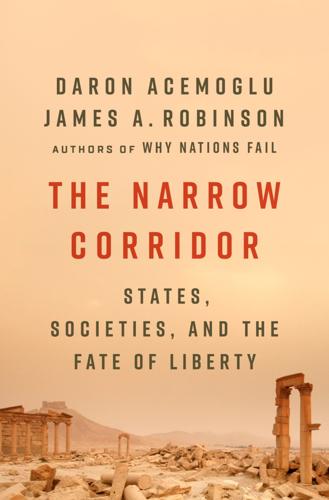
The Narrow Corridor: States, Societies, and the Fate of Liberty
by
Daron Acemoglu
and
James A. Robinson
Published 23 Sep 2019
Indeed, it would have been impossible for Carrillo or Figueres to build a Shackled Leviathan if Costa Rica had had the same labor-repressive agriculture as Guatemala. Chapter 10 WHAT’S THE MATTER WITH FERGUSON? A Killing at Noon Shortly after noon on August 9, 2014, Michael Brown, an eighteen-year-old African American, was shot dead by police officer Darren Wilson in Ferguson, Missouri, a city in St. Louis County. Brown had stolen a packet of cigarillos from a store and was with a friend when Wilson, who had learned of the robbery on his radio, asked them to stop. A struggle took place with Wilson still in his car, and two shots were fired. Brown fled and Wilson chased him, eventually hitting him with six bullets.
…
The shifting mix of private and public provision was an expedient way for the American state to gain greater capacity over time, but it also meant that it was particularly hamstrung in dealing with several critical problems. Many of the pressing challenges facing the country today, ranging from high levels of poverty and lack of access to healthcare (by the standards of other rich nations) to crime (gargantuan compared to other countries) and lack of protection for citizens (easily visible in Ferguson, Missouri, or in Hyde Park, Chicago, where one of us lives), have their origins in this hamstrung state building. The killing of Michael Brown must be seen in the context of the lamentable state of relations between the citizens and the police force in Ferguson. This is the complex outcome of many things, but it is common across many poor, minority urban neighborhoods.
…
See also Gilgamesh problem equal-field system, 209, 222 Equal Pay Act, 194 Erdoğan, Recep Tayyip, 425, 440, 442 Eric Bloodaxe, 167 Estates General (France), 182 European Court of Justice, 490 European Union (EU), 284, 439, 441–42, 490 Evans, Richard, 397, 400 extractive growth, 114–15, 118–19 extraordinary rendition, 335, 491 Fahd, King (Fahd bin Abdulaziz Al Saud), 378, 380 Faisal, King (Faisal bin Abdulaziz Al Saud), 376–78, 380, 385 famine, 14–15, 224, 229 fascism, 405, 420 Fashola, Babatunde Raji, 445–46 Fatimid dynasty, 111–12 fatwas, 372, 374–80, 382–84, 388–89 Federal Bureau of Investigation (FBI), 333–35, 491 Federal Housing Authority (FHA), 329–30 Federal Republic of Central America, 295, 302 Federal Reserve System, 480 Federalist Papers, 48–49 Federalists, 47–51, 297, 315–16. See also Bill of Rights; U.S. Constitution; and specific amendments Fellers, Bonner F., 436, 437 Ferguson, Missouri, 304–6, 309–11, 313, 327–29 Fernández de Kirchner, Cristina, 343, 344 feudalism, 169–73, 175, 177–78, 181, 184, 266, 271, 278–79, 414, 416–17, 455, 500 feuds, 35–36, 162, 168, 267, 276–78, 415 Fibonacci, Leonardo, 138–39 Field, Stephen, 311 Fifteenth Amendment, 52 Fifth Amendment, 312 Figueres, José, 297, 303 Finer, Herman, 405 Finley, Moses, 454 firearms, 89–90, 94 First Amendment, 305, 310, 490 First and Second Congo Wars, 99 First Crusade, 188 First Reform Act, 190 FitzNigel, Richard, 173 Flanders, 136 Florence, Italy, 139–40, 141 Florentine Catasto of 1427, 139–40 Flores, Juan José, 355 Flynn, Henry, 84 Fogel, Robert, 454 Force Publique (Belgian Congo), 457 Foreign Intelligence Surveillance Courts, 491 Fornander, Abraham, 116–17 Foster, Augustus John, 315 “Four Clean-ups” campaign, 17 “Four Freedoms” speech, 493–94 Fourteenth Amendment, 52, 310–11 Fourth Amendment, 305, 310, 312, 490 Fourth Crusade, 188 Francis of Assisi, Saint, 135–40, 143–44 Franklin, Benjamin, 495 Franks, 154, 154–57, 160–64, 167, 170, 213 Frederick Barbarossa, 127–28, 142, 417 Frederick I, King of Prussia, 274 Frederick II (the Great), King of Prussia, 274–75 Frederick II, Holy Roman Emperor, 182 Frederick William I (the Great Elector), King of Prussia, 273–74, 275 Free Corps, 393, 395 Free Officers Movement, 385 Frei, Eduardo, 408 Fritzsche, Peter, 393–94 FSB (Federal Security Bureau, Russia), 286, 287 Fujimori, Alberto, 422 Fukuyama, Francis, 1–2 Gaidar, Yegor, 285 Galileo Galilei, 196 Gamsakhurdia, Zviad, 92–93 gana-sanghas, 252, 253–54 Gandhi, Mahatma, 261 Gaozu, Emperor, 207 García Granados, Miguel, 299 Gaviria, César, 448 Gebusi of Papua New Guinea, 8, 59 generational theory of Ibn Khaldun, 104–14, 116, 122, 125, 373, 387 Geneva Convention, 460 Genoa, Italy, 139 Georg Wilhelm, elector of Brandenburg, 273 Georgia (republic), 92–94, 121–24 German National People’s Party, 397 German Workers’ Party, 396 Germania, The (Tacitus), 155–56 Germanic tribes, 155–56, 160, 182, 185, 199, 270 Germany: and decline of Weimar Republic, 390–96; and Great Depression, 467; and Nazi takeover of German state, 404–6; and Prussian bureaucracy, 12; recovery from autocracy, 423–25; Red Queen dynamics of, 399–404, 405–6; and rise of Nazism, 396–99; welfare state development, 472 Ghana, 18, 20, 362–63, 364, 366 Ghazali, Abu Hamid al-, 379 Ghibellines, 417 Giele, Enno, 206 Gilgamesh problem, xiii–xv, 18, 47, 68, 153, 297 Glass-Steagall Act, 478 globalization, 269, 420, 455–57, 476–78, 482, 486 Glorious Revolution, 188, 189, 195, 280 Gluckman, Max, 120–21 “gnocchi” (ghost workers), 341–44, 345, 445, 448, 449 Godric of Finchale (later Saint Godric), 143 Godwinson, Harold, 169 Goebbels, Joseph, 392, 404 Goi, 20–21 Golden Bull (document), 182 Gorbachev, Mikhail, 93, 282, 285, 288 Göring, Hermann, 392 Goths, 185 Govindan, Thillai, 245 Gram Sadak Yojana, 262–63 Gramm-Leach-Bliley Act, 479 Great Britain.

Last Best Hope: America in Crisis and Renewal
by
George Packer
Published 14 Jun 2021
It’s also worth noting that Republicans were becoming slightly more progressive on these issues, until the election of Donald Trump two years later. Then a polarizing dialectic set in, as his supporters and opponents drove each other to extremes, identity politics against identity politics, replicating endlessly. It’s hard to say why Just America emerged as a national narrative in 2014. That summer, in Ferguson, Missouri, a white police officer shot and killed an eighteen-year-old Black man, whose body was left to lie on the street for hours. Though the details were ambiguous—the victim, Michael Brown, had attacked the cop, Darren Wilson—the symbolism overwhelmed evenhanded analysis. The killing came in the context of numerous incidents, increasingly caught on video, of Black people assaulted and killed by white police who had faced no obvious threat.

The Fifth Risk
by
Michael Lewis
Published 1 Oct 2018
A black child born into the upper-income quintile was as likely to fall to the bottom as to remain rich. More of America’s problems than even DJ had imagined could be better understood and addressed with better access to the right information. The problem of excessive police force was another example. After a white policeman shot a defenseless black man in Ferguson, Missouri, the White House convened police chiefs from ten American cities, along with their data. The policing data was local and difficult to get ahold of—and that was DJ’s point. He wanted to show what might be possible if the government collected the information. “We asked the question: What causes excessive use of police force?”
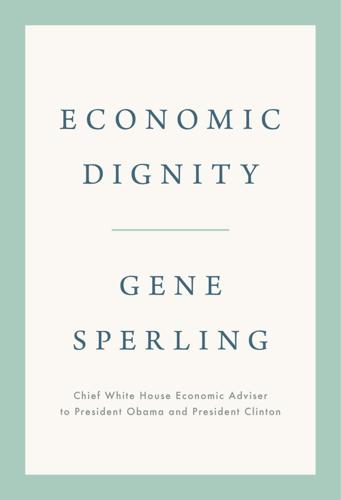
Economic Dignity
by
Gene Sperling
Published 14 Sep 2020
Toward the end of the twentieth century, in tandem with mounting costs to fund the ballooning criminal justice system, governments began requiring more of the costs to be paid by defendants through fines and fees.62 At least one estimate places the amount that state and local governments collect each year at $15 billion, with some counties relying on fines and fees for as much as half of their policing and judicial expenditures.63 Punitive fines and fees are also used disproportionately in jurisdictions with higher shares of black residents.64 Indeed, in Ferguson, Missouri, the Department of Justice found that court fees and fines constituted a major source of city revenue.65 The number of people affected by such fees is dramatic. In 2004, the latest year that the federal government surveyed incarcerated individuals on this topic, two-thirds of inmates reported that they were ordered to pay various fines or fees, compared with 25 percent in 1991.66 In 2014, sociologist Alexes Harris estimated that the share of returning individuals with these costs was 80 to 85 percent.67 Many of the most common fees are for things that most Americans probably believe are guaranteed by law to indigent defendants.
…
Even in 2004, a study found that twenty-one thousand people returned to prison because their parole or probation had been revoked because they failed to meet the financial conditions of their release.76 A study in Rhode Island found that between 2005 and 2007 nearly one in five of all incarcerated people were imprisoned for failure to pay a court debt.77 In Ferguson, Missouri, missed payments or court dates often resulted in jail time for the predominantly poor African American population disproportionately targeted by police.78 On any given day in the United States, close to half a million people are incarcerated but not convicted of a crime.79 Those who remain incarcerated are there because they cannot afford to post bail.

The Rise and Fall of the Neoliberal Order: America and the World in the Free Market Era
by
Gary Gerstle
Published 14 Oct 2022
An all-white jury in Florida acquitted Zimmerman of wrongdoing in July 2013. A year later, police in Staten Island, New York, had put a small-time street peddler named Eric Garner into a chokehold, forcing him to the ground, cutting off his air supply, thereby killing him. Two weeks later, Michael Brown, an eighteen-year-old in Ferguson, Missouri, got into an altercation with a police officer, Darren Wilson, that resulted in Brown being shot six times. In October 2014, a Chicago police officer emptied round after round into another teenager, Laquan MacDonald, after he was down and already dead. In April 2015, Walter Scott of Charleston was chased down on foot by a police officer for a minor motor vehicle infraction (a nonfunctioning brake light) and shot dead.
…
Less than a week later, an injured and tied-up Freddie Gray of Baltimore died after being thrown repeatedly against the hard metal surfaces and edges of a police van in which he had been locked up as officers were transporting him to jail.72 These killings led to the eruption of a new protest movement, “Black Lives Matter.” Ferguson, Missouri, the site of Michael Brown’s death, became ground zero for this movement. The heated protests, confrontations with police, and sit-ins modeled on Occupy Wall Street attracted activists from all over the country and gained national and international attention. BLM protesters were young, militant, and uncompromising.

Waging a Good War: A Military History of the Civil Rights Movement, 1954-1968
by
Thomas E. Ricks
Published 3 Oct 2022
Ten minutes later, she added, “Where those folks saying we are in post-racial America?” To that question she appended an inspired hashtag: “#blacklivesmatter.” Later that evening, she explained in a third tweet, “I continue to be surprised at how little Black lives matter.” Then came more deaths: Michael Brown in Ferguson, Missouri; Eric Garner in New York City; and Tamir Rice in Cleveland, Ohio, all three in 2014. Freddie Gray in Baltimore, Maryland, and Jeremy McDole in Wilmington, Delaware, both in 2015. Philando Castile in St. Anthony, Minnesota, in 2016. Emantic Bradford, Jr., in Hoover, Alabama, in 2018. Breonna Taylor in Louisville, Kentucky; George Floyd in Minneapolis, Minnesota; Rayshard Brooks in Atlanta, Georgia; Daniel Prude in Rochester, New York; and Jonathan Price in Wolfe City, Texas, all five in 2020.
…
Black Lives Matter, whose organizers are more rambunctious and turbulent than Stacey Abrams, stands outside the tent, making it today’s counterpart of SNCC. It is focused less on gaining power through the vote and more on confronting how power currently is exercised against minorities. So it should be no surprise that in August 2014, after police in Ferguson, Missouri, killed the eighteen-year-old Michael Brown, the digital-era activist Nicole Carty sat down to pick the brain of none other than James Lawson himself, who had done so much half a century earlier to organize the Nashville sit-in movement that produced some of SNCC’s early leaders. One of the thoughts that Carty took away from her meeting with the venerable Lawson was, “It’s easy to be reactive—something bad happens, you take to the streets.

The Color of Money: Black Banks and the Racial Wealth Gap
by
Mehrsa Baradaran
Published 14 Sep 2017
He said that he would pursue as a top priority “helping African-American businesses get the credit they need” and vowed to “encourage small-business creation by allowing social welfare workers to convert poverty assistance into repayable but forgiveable micro-loans.” He also repeated his promise to increase law enforcement in black communities.9 In fact, the tension between law enforcement and the black community had hit another boiling point. The city of Ferguson, Missouri, erupted after police killed Michael Brown, a black man, in 2014. This was one of the largest race riots the country had seen in recent memory, and it marked the genesis of the Black Lives Matter movement. Ferguson is a suburb of St. Louis, one of the most segregated cities in the United States.10 It was defined as a “resegregated” city, created by the exodus of black residents from the newly gentrified inner city of St.
…
See Black business; Commerce Ehrlichman, John, 180, 214 Eisenhower, Dwight D., 133, 319n136 Ellsworth, Scott, 60 Equal credit laws, 149-150 Equal Employment Opportunity Office (EEOC), 186 Equal Opportunity Act (ECOA, 1974), 149 Essentiality doctrine, 242 Evolutionary theory, 64-65, 68 Executive Order 11458, 180, 225 Executive Order 11625, 225 Executive Order 8802, 127 Exploitation: of black labor, 10, 20-21, 66, 172; in Chicago real estate, 71-72; through black banks and businesses, 98, 121; deprivation and, 110, 237; in mortgage lending, 110-111, 114, 258-260; of black community, 130, 142, 147, 160-161, 209-210; segregation and, 140; civil rights and economic, 142-150, 153-154, 157-160, 208-210; and debt collection, 145 Fair Credit Reporting Act (FCRA, 1970), 149 Fair Housing Act (FHA, 1968), 166-167, 170, 219, 254-255, 347nn46,52 Fannie Mae, 106, 235, 236 Farley, Rawle, 205 Farmer, James, 159 Federal deposit insurance, 123, 124 Federal Deposit Insurance Corporation (FDIC), 103, 123, 124, 241-242, 263-264 Federal Emergency Relief Administration (FERA), 102 Federal Farm Loan Act (1916), 67 Federal Housing Administration (FHA), 106-109, 112-113, 115, 122-123, 126-127, 313nn19,20,28, 326n15 Federal National Mortgage Association (FNMA, Fannie Mae), 106, 235, 236 Federal Reserve, 67, 320n23 Federal Trade Commission (FTC) study, 144 Ferguson, E. C., 65 Ferguson, Missouri, 248-249 Field order 15 (1865), 16 Fifteenth Amendment, 22 Financial Crisis Inquiry Commission, 255-256 Financial Institutions Reform, Recovery, and Enforcement Act (FIRREA, 1989), 224-226, 244, 264-265, 338n53 First Atlanta Bank, 282 First National Bank, 26, 29, 45 Fitzhugh, F. Naylor, 171 Florence, Franklin, 175 Foner, Eric, 17 Foohey, Pamela, 274 Ford, Gerald, 219, 220 Forman, James, 160, 172, 355n8 Foster, Mike, 224 Fractional reserve banking, 88, 94 Franklin, John Hope, 192-193 Fraternal societies, 12, 15-16, 40-44, 297n14 Frazier, E.
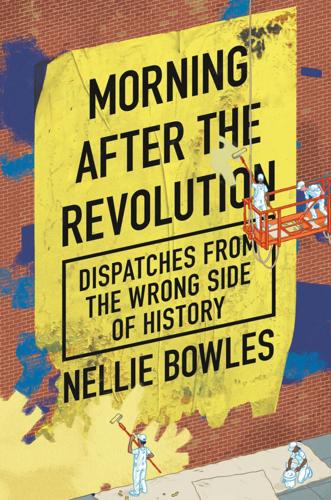
Morning After the Revolution: Dispatches From the Wrong Side of History
by
Nellie Bowles
Published 13 May 2024
“We don’t want or need y’all parading in the streets accumulating donations, platforms, movie deals, etc. off the death of our loved ones, while the families and communities are left clueless and broken,” they wrote. “Don’t say our loved ones’ names period! That’s our truth!” Michael Brown Sr., whose eighteen-year-old son Michael Brown was killed in Ferguson, Missouri, setting off an infamous series of protests, said he and the activists in his community haven’t seen a penny. “Who are they giving the money to, and what are they doing with it?” he said in a video, asking for money for the Ferguson community. “Why hasn’t my family’s foundation received any assistance from the movement?
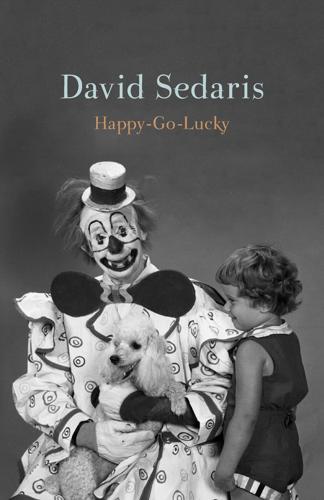
Happy-Go-Lucky
by
David Sedaris
Published 30 May 2022
Before his mind started failing, my father consumed a steady diet of Fox News and conservative talk radio that kept him at a constant boiling point. “Who’s that Black guy?” he demanded in 2014. The family was together at the Sea Section, and we were talking about Michael Brown, who’d been shot and killed three months earlier in Ferguson, Missouri. “What Black guy?” I asked. “Oh, you know the one.” “Bill Cosby?” Amy offered. “Gil Scott-Heron?” I asked. “Stevie Wonder?” Gretchen called from the living room. Lisa said, “Denzel Washington?” “You know who I mean,” Dad said. “He’s got that son.” “Jesse Jackson?” “He’s the one. Always stirring up trouble.”

Whiplash: How to Survive Our Faster Future
by
Joi Ito
and
Jeff Howe
Published 6 Dec 2016
But the largest chunk, by far, would seem to be dead, victims of heart disease and diabetes and the worst epidemic of all, homicide, which may have accounted for a sobering two hundred thousand dead black men in the age bracket demographers rightly call “prime age.” The median black woman in America is likely to live in a community in which there are only forty-three men for every sixty-seven women. The gender gap is worst, the Times discovered, in Ferguson, Missouri—the same community that became the locus of the Black Lives Matter movement after a police officer killed an unarmed black teenager in 2014. The gap is also greater in North Charleston, where the police killed an African American suspect, Walter Scott, also unarmed, as he tried to run away.

The Geek Feminist Revolution
by
Kameron Hurley
Published 1 Jan 2016
It’s easier to reject,10 fear,11 and destroy12 what we don’t understand. It’s impossible to understand what we’re never allowed to see. Even if, in many cases, what we never see is ourselves.13 * * * I passed a man and his son headed to a football game one day. The news was, at the time, all about the protest and unrest in the city of Ferguson, Missouri, where peaceful protests in reaction to the shooting of an unarmed teenager were met with an increasingly violent police response. One would think there would be a profound backlash against this militarized police response, no matter the race of the victim. But one would be wrong.14 The boy and his father crossing the street to the stadium were white; the boy was about eight or nine years old, and he asked, “Dad, what if it had been a black cop shooting a black kid?
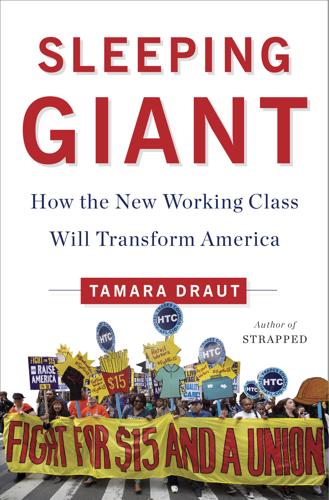
Sleeping Giant: How the New Working Class Will Transform America
by
Tamara Draut
Published 4 Apr 2016
There’s a new beltway of activism flowing through the South, from Atlanta, Georgia, all the way down to Miami, Florida, and on over to Jackson, Mississippi. Phillip Agnew is the director of Dream Defenders, based in Florida, and was one of the handful of young activists invited to the White House to meet with President Obama about the protests in Ferguson, Missouri. Agnew, whom I met at a Demos gala when we honored Dream Defenders with a Transforming America Award, brought the house down in his acceptance speech. Like so many other leaders, he and his group are joining the chorus of activists supporting Black Lives Matter while continuing to do local organizing and work to change policies and laws.

Rebel Ideas: The Power of Diverse Thinking
by
Matthew Syed
Published 9 Sep 2019
This is where various algorithms, such as those inside Google, invisibly personalise our searches, giving us more of what we already believe, and further limiting our access to diverse viewpoints.10 This is the digital equivalent of the Bahns experiment, but at a higher level of gearing. The sheer interconnectivity of the Internet has facilitated enhanced political fine-tuning. The precise extent of echo chambers is a matter of some debate, with different studies pointing in slightly different directions. The mathematician Emma Pierson analysed how the troubles of Ferguson, Missouri were covered on social media in 2014, after a white police officer called Darren Wilson shot and killed a black man, Michael Brown. She found two, distinct clusters. ‘Blue tweets’ expressed horror at Brown’s death and criticised the oppressive police response, while the ‘red tweets’ argued that the policeman was being scapegoated and the protesters were looters.

Tomorrow's Capitalist: My Search for the Soul of Business
by
Alan Murray
Published 15 Dec 2022
In this way, the pandemic and social justice issues went hand in hand. Such corporate actions shifted to conversations about Black representation in companies, underscoring the importance of diversity—one of the signature platforms of stakeholder capitalism. It’s worth noting that only six years earlier, a police officer in Ferguson, Missouri, had shot and killed Michael Brown in the middle of the street, witnessed by many bystanders. The event sparked large protests and fed the growth of the Black Lives Matter movement. But big company CEOs were, for the most part, silent. Their reaction following George Floyd’s death was different, indicating how much business leadership had changed in the few intervening years.
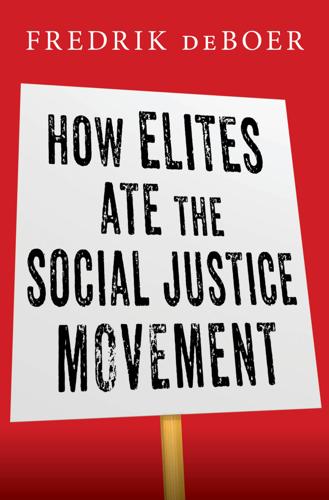
How Elites Ate the Social Justice Movement
by
Fredrik Deboer
Published 4 Sep 2023
And it was no outlier. The 2012 killing of teenager Trayvon Martin, while not committed by a police officer, demonstrated the tendency for Black youth to be viewed as acceptable targets for surveillance and violence. The 2014 death of eighteen-year-old Michael Brown at the hands of a white police officer in Ferguson, Missouri, sparked mass protests and led to the birth of Black Lives Matter, a new radical protest movement that demanded major police reform and a broader reckoning over race in America. In the following years, a steady drip of prominent Black deaths at the hands of the police kept the fire burning, with names like Freddie Gray, Sandra Bland, and Tamir Rice added to the roster of those taken too soon thanks to the actions of the police.
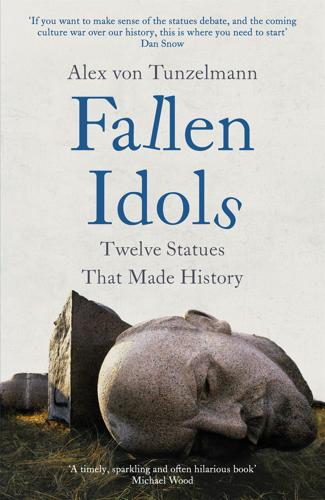
Fallen Idols: Twelve Statues That Made History
by
Alex von Tunzelmann
Published 7 Jul 2021
This would become a national, then international movement of loosely aligned groups advocating for justice and against racial discrimination. It was not long before Black Lives Matter protests began in New Orleans. On 30 November 2014, in response to the decision not to indict police officer Darren Wilson for the fatal shooting of Michael Brown in Ferguson, Missouri, activists marched on Lee Circle. Around 300 protesters formed a ring around Lee’s statue, holding signs that said ‘Black Lives Matter’ and ‘Free Hugs’. ‘Monuments like these poison the democratic minds of the people,’ one activist, Leon Winters, said to the crowd. ‘Not another penny of state money must be spent to maintain these racist symbols.’
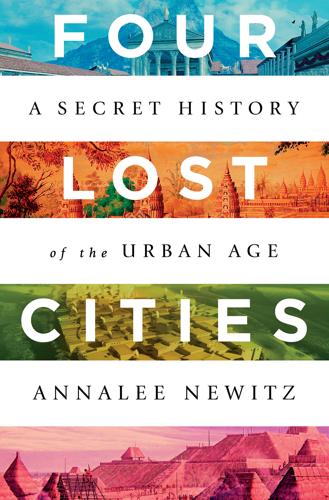
Four Lost Cities: A Secret History of the Urban Age
by
Annalee Newitz
Published 2 Feb 2021
Louis, Illinois, 9, 10, 207, 212, 228–33 Ebusus, 86 École française d’Extrême-Orient (EFEO), 168, 184–85 Edwardsville, Illinois, 222 egalitarianism, 75 Egyptians, 86 Ellis, Steven, 105–6, 108–10 Emerald site, 222–23 Emerson, Tom, 244–45 engineering, 52 environmental crises, 5, 238, 239–40, 257–58 ancient, 256 fragmentation and, 249–50 modern, 256, 257 Envisioning Cahokia, 234 erect knotweed, 220 Eumachia, 95 Europe, executions in, 216–17 European colonialism, 217, 253 European Research Council, 152 Evans, Damian, 2–3, 160, 169, 178–79, 196–97, 200 city grids and, 155 lidar mapping and, 151–53, 167, 181, 185 excavation blocks, 229–32, 246–47 executions, 216–17 expansion, 256, 257 famine, 64 Fargher, Lane, 236 farming, 51, 54–55, 62, 72–73, 222 agricultural complexity, 73 in Angkor, 146–61 in Cahokia, 218–24, 251 in Çatalhöyük, 61, 73 development of, 27 harvesting, 219–22, 223 men and, 222 shock of agricultural life, 35 urbanism and, 54–55, 73 feasts, 221, 227 Ferguson, Missouri, 254 fertility, 215–16 fertility rituals, 244, 245 fertility symbols, 46–51 festivals, 157, 174, 215–16 in Angkor, 157, 174 figurines, 46–51, 56, 213, 214, 219, 220–21, 251 Fiorelli, Giuseppe, 129 fire, 246–47. See also wildfires Flohr, Miko, 106–7 Flohr, Pascal, 64–65 floods, 4, 8, 21, 64, 249, 257 along Mississippi, 258 in Angkor, 4, 8, 185–90, 258 food.
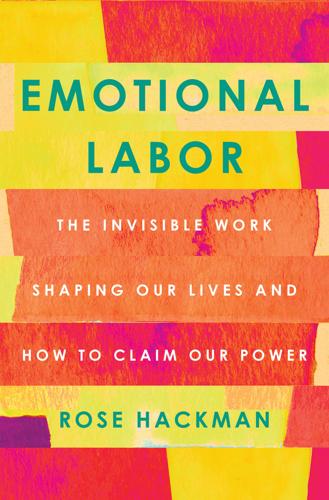
Emotional Labor: The Invisible Work Shaping Our Lives and How to Claim Our Power
by
Rose Hackman
Published 27 Mar 2023
Deny that to men by threatening their masculinity if they even dare to hint at compassion or sensitivity, and you deny them the possibility for communal and sovereign healing. * * * Of all the men I spoke to on these themes, race and gender advocate and award-winning author Jimmie Briggs’s story stands out the most for the lessons learned and for the hope. Jimmie grew up in Ferguson, Missouri, four decades before the small suburb of St. Louis made international headlines after white police officer Darren Wilson shot and killed unarmed Black teenager Michael Brown in 2014, sparking nationwide protests and contributing to the modern-day beginning of the Black Lives Matter movement.

Life After Cars: Freeing Ourselves From the Tyranny of the Automobile
by
Sarah Goodyear
,
Doug Gordon
and
Aaron Naparstek
Published 21 Oct 2025
The Black Lives Matter movement, for a time, forced the nation to confront the consequences of maintaining a status quo that systematically patrols and limits the movement of Black people no matter what transportation mode they choose. As a result, we now know the names of some of the countless people who have been killed by law enforcement officers while trying to move about the communities where they live. Michael Brown was walking down the middle of a street in Ferguson, Missouri, when he was shot by cops who told him to move onto the sidewalk and then blocked him with their SUV before killing him. In Minneapolis, George Floyd was pinned to the asphalt and killed in the street next to a police vehicle after being pulled from a car he had borrowed from a friend. Elijah McClain was injected with a fatal dose of ketamine after police confronted him for waving his arms while walking down a sidewalk in Colorado.
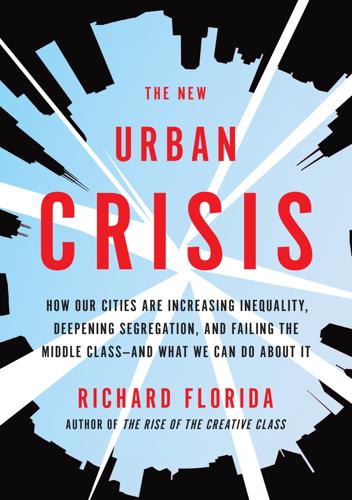
The New Urban Crisis: How Our Cities Are Increasing Inequality, Deepening Segregation, and Failing the Middle Class?and What We Can Do About It
by
Richard Florida
Published 9 May 2016
Murders actually rose by 16.9 percent in the suburbs between 2001 and 2010, while falling by 16.7 percent in cities.11 And the suburbs have been the sites of many, if not most, of America’s mass shootings, from Columbine to Sandy Hook. Suburban governments and police departments have been slow to adjust to these new realities. That became agonizingly apparent to the whole world when Ferguson, Missouri, a St. Louis suburb of 21,000, spun out of control in the wake of the police killing of Michael Brown in 2015. Over two-thirds (67 percent) of Ferguson’s population is black, but only four of the town’s fifty-four police officers were black at the time. Ferguson is hardly a typical case—it had suffered from many local traumas, from a failed airport expansion, in which thousands of homeowners were displaced by eminent domain, to long-standing racial red-lining.
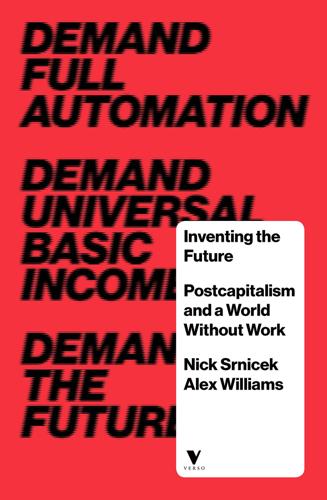
Inventing the Future: Postcapitalism and a World Without Work
by
Nick Srnicek
and
Alex Williams
Published 1 Oct 2015
In Argentina, for instance, unemployed workers’ movements blockaded major streets in order to make themselves heard and were central to the overthrow of the government.82 Expelled from the wage, shorn of a workplace, blockading urban arteries becomes a primary means of exerting political power.83 The surge in freeway blockades in the wake of the August 2014 police killing of Michael Brown in Ferguson, Missouri, demonstrates the increasing prevalence of this type of struggle.84 Similar tactics take on other aspects of capitalist reproduction with the same basic objective, including rent strikes and debt strikes. Port blockades also have potential as a tactic, and computer modelling can offer insights into how to avoid scattershot and ineffective political action.85 These new tactics must, of course, be situated within a larger strategic plan, or risk becoming so many temporary movements that erupt only to disappear without a trace.
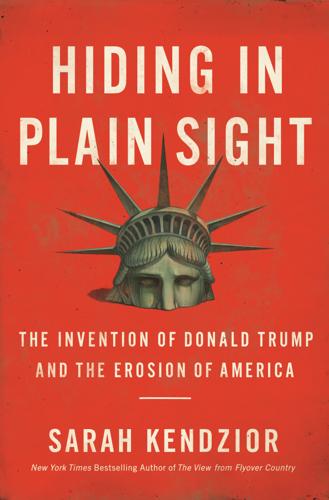
Hiding in Plain Sight: The Invention of Donald Trump and the Erosion of America
by
Sarah Kendzior
Published 6 Apr 2020
The day this was passed, I woke up to learn that my husband now had more rights than me—and that any man who chose to rape me in Missouri did too. * * * In August 2014, I was with my friend and sometimes cowriter Umar Lee—probably the only person in America to cash a check from Politico at a corner store—in a restaurant in Ferguson, Missouri. Down the block, the staff of a major cable network had barricaded itself in a giant steel cage from black protesters, among them St. Louisans who were close friends of mine and Umar’s. The brutal killing of eighteen-year-old Michael Brown by police officer Darren Wilson had happened two weeks before, and the nightly gassing of protesters by the police had begun.
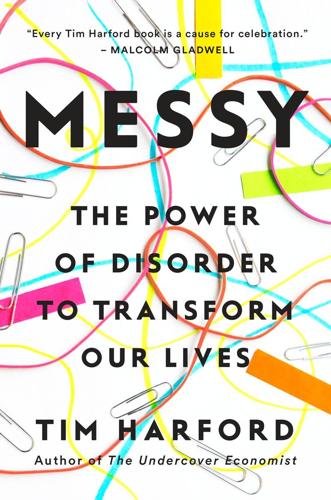
Messy: The Power of Disorder to Transform Our Lives
by
Tim Harford
Published 3 Oct 2016
Americans, Canadians, Australians, and Brits can easily read The Times of India or The Japan Times. But we don’t. Instead, conservatives watch Fox News and liberals watch MSNBC.30 There’s the Internet, of course, a cornucopia of news and opinion, but we sample its riches selectively—often without realizing how the selection is made. Consider the way that the troubles of Ferguson, Missouri, were covered by social media in the summer of 2014 after a police officer, Darren Wilson, shot and killed a young black man, Michael Brown. Night after night of confrontation between police and protesters barely made a ripple on Facebook. The most likely explanation for that is that Facebook is set up for sharing good news.

Why We're Polarized
by
Ezra Klein
Published 28 Jan 2020
In this telling, we used to have a limited number of media outlets, and they were almost all run by wealthy white men, so the market was simply ill served and waiting for correction. This is clearly part of the story. In the absence of social media and audience analytics, I doubt that newsrooms run by white men would’ve devoted blanket coverage to the events in Ferguson, Missouri, and their aftermath. And I say that as a white man who was running a newsroom at that time—this is the way analytics and social media improve our work, by giving us truer, broader information about the audience’s interests. But the other perspective takes identities as living, malleable things.
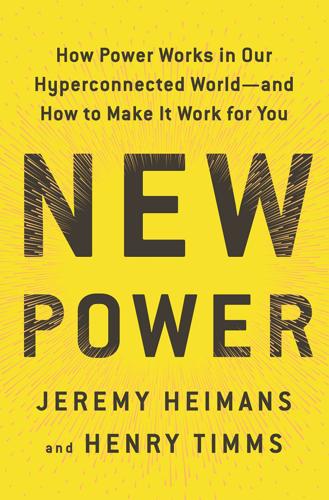
New Power: How Power Works in Our Hyperconnected World--And How to Make It Work for You
by
Jeremy Heimans
and
Henry Timms
Published 2 Apr 2018
Garza, Cullors, and Tometi set about, in Garza’s words, “[creating] the infrastructure for this movement project—moving the hashtag from social media to the streets.” They began to mobilize online and on calls, connecting organizers around the country, with the goal of creating the “space for the celebration and humanization of Black lives.” Their response to the killing of Michael Brown by police in Ferguson, Missouri, took the movement to the next level. The three women—working as always in partnership with others—quickly organized the Black Lives Matter “Freedom ride,” where activists from around the country piled into buses and rode to Ferguson to support local organizing efforts and the community there.

Artificial Whiteness
by
Yarden Katz
War abroad has also continued to mold domestic policing, as a “militarized vision of policing” was adopted during the Cold War, bent on suppressing social movements through counterintelligence.16 For all these reasons, Vitale argues it is more accurate to view policing “as a system for managing and even producing inequality by suppressing social movements and tightly managing the behavior of poor and nonwhite people: those on the losing end of economic and political arrangements.”17 Liberal policing reforms (like the call for diversity) mask the injustices police are tasked with managing. As Vitale points out, police departments are in fact nearly as “diverse,” by self-reported race categories, as the national population. The disparity between the police and policed communities—obvious in scenes from Ferguson, Missouri, following the killing of Michael Brown, or from Baltimore following the murder of Freddie Gray—usually stems from the extreme segregation of communities of color. This segregation is the product of structural racism and decades-long policies such as redlining; problems that diversifying the police force cannot fix.
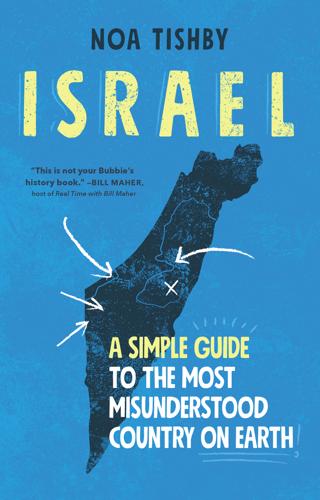
Israel: A Simple Guide to the Most Misunderstood Country on Earth
by
Noa Tishby
Published 5 Apr 2021
The boycott movement uses intersectionality as a tactic to co-opt legitimate social grievances and win public legitimization by association. Following the horrific shooting of Trayvon Martin and the acquittal of his killer, George Zimmerman, an incredible grassroots movement emerged: Black Lives Matter. After another shooting shocked the nation, that of Michael Brown Jr. in Ferguson, Missouri, BDS activists reached out to the BLM leaders and offered to lend their support. After all, they said, Palestinian Lives Matter as well. BLM welcomed those BDS activists, to the shock and disappointment of people in the know, not to mention the American Jewish community, which by and large is a huge supporter of BLM.

We're Not Broken: Changing the Autism Conversation
by
Eric Garcia
Published 2 Aug 2021
The fact that he was shot while police were responding to a Latino man was terrifying because it meant that those who were even in proximity to autistic people were also not safe. I knew that Black and brown people were more vulnerable to police violence. I had graduated from college a few months before police officer Darren Wilson shot Michael Brown in Ferguson, Missouri, which led to widespread protests and cemented the chant of “Black lives matter” in the public consciousness. Only a few days before the Kinsey shooting in north Miami, Philando Castile, a Black man in Minnesota, was shot and killed by a Hispanic police officer. But until Kinsey’s shooting, I hadn’t considered how autism factored into the epidemic of police brutality.

IRL: Finding Realness, Meaning, and Belonging in Our Digital Lives
by
Chris Stedman
Published 19 Oct 2020
Marginalized communities are more able than ever before to map their lives online and document the things people in power wish to deny or erase. Platforms like Twitter have been critical to the growth of movements like Black Lives Matter. In the wake of the death of Michael Brown, an unarmed teenager shot by a police officer in Ferguson, Missouri, people used Twitter to organize on the ground, share their locations with one another, and broadcast evidence of systemic injustice to the nation. Similarly, hashtags like #DisabledAndCute and #BlackGirlMagic empower members of disenfranchised communities to do more than just document their trauma and pain—they are ways of mapping and sharing their joys with a world that is less inclined to tell those kinds of stories.
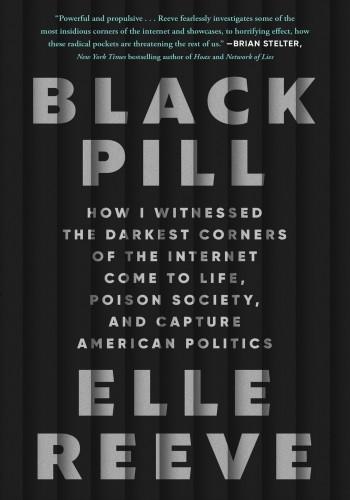
Black Pill: How I Witnessed the Darkest Corners of the Internet Come to Life, Poison Society, and Capture American Politics
by
Elle Reeve
Published 9 Jul 2024
I’m NOT just shitposting. I would like clarification. I know it’s legal in North Carolina and a few other states. I’m legitimately curious for the answer. The idea of running protesters over with cars was in the ether. There had been a few incidents during the Black Lives Matter protests that began in Ferguson, Missouri, in 2014. But Chesny was wrong—it wasn’t legal in North Carolina, though the state house of representatives had approved a bill in April 2017 that shielded drivers from liability if they did not hurt protesters willfully. Several other state legislatures had proposed similar measures. On Instagram, James Alex Fields shared a meme of a car running through a crowd of people with the words “You have the right to protest.
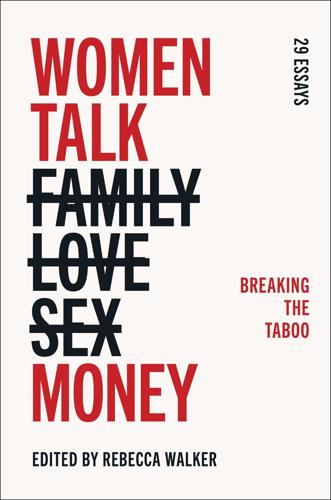
Women Talk Money: Breaking the Taboo
by
Rebecca Walker
Published 15 Mar 2022
Jeff Bezos made his billions by putting innumerable independent stores out of business. There is always a component of exploitation behind massive accumulation. My family’s accumulation was no different, and my role was to begin to undo this. When #BlackLivesMatter went viral after the shooting of Michael Brown in Ferguson, Missouri, we were ready to support. We didn’t ask for grant proposals or reports but instead we tried to stay in a close and real relationship with movement activists so we could understand their needs and move resources quickly. We used our email LISTSERV to share what we were hearing in real time and to collaborate to get the resources where they needed to go.
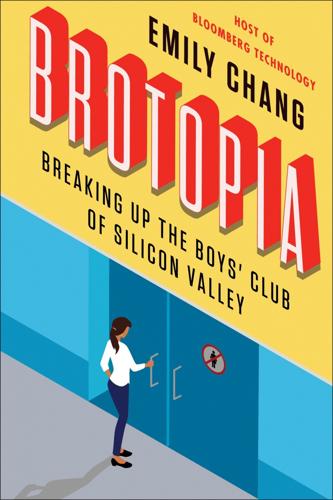
Brotopia: Breaking Up the Boys' Club of Silicon Valley
by
Emily Chang
Published 6 Feb 2018
He’s publicly backed Planned Parenthood, protested President Trump’s controversial travel ban targeting Muslims, and sent a companywide memo in 2016 urging his employees to take a pause on Martin Luther King Jr. Day. “Think about how profoundly shameful it is that there even ever had to be a ‘civil rights movement,’” Butterfield wrote. Two years before I sat down with Butterfield, former Google engineer Erica Joy Baker was marching the streets of Ferguson, Missouri, to protest the shooting of a young black man named Michael Brown, when Butterfield tweeted at her, “Be safe.” When Baker looked at Butterfield’s Twitter page, she realized he cared about diversity almost as much as she did. “He is woke. I want to go work for him,” Baker said of her discovery.

We Are All Fast-Food Workers Now: The Global Uprising Against Poverty Wages
by
Annelise Orleck
Published 27 Feb 2018
That’s why we started fighting. That’s why we won’t stop. I honestly don’t know how much worse it can get.” For Sanders, Rainer, and many others, the living-wage campaign is inextricably tied to the struggle against police violence and for immigration reform. Fight for $15 activists at a McDonald’s in Ferguson, Missouri, provided safe space during the unrest after police killed teenager Michael Brown in the summer of 2014. Living-wage marchers in New York wore shirts emblazoned with the last words of Eric Garner, father of six, killed by the NYPD that summer. “We’re the same people,” says Rainer. “We have to hold down three jobs, and when we are done and tired, walking home from work, then we are abused by police, raided by immigration cops.”
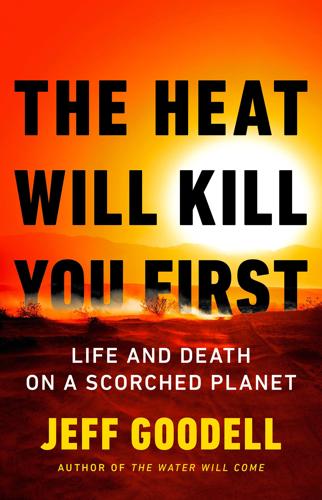
The Heat Will Kill You First: Life and Death on a Scorched Planet
by
Jeff Goodell
Published 10 Jul 2023
She began taking pictures when she was a teenager but never really dreamed she could make a career out of it. In 2014, she left Pakistan to study journalism at Columbia College Chicago and ended up getting a job as a photographer at a newspaper in Madison, Wisconsin. She donned a gas mask and photographed the riots in Ferguson, Missouri, that erupted after the fatal shooting of Michael Brown by police officer Darren Wilson. She got screamed at by Trump supporters while photographing his rallies during the 2016 campaign. She photographed homeless people freezing on the streets of Chicago. Her photos won awards and gave her the confidence in her abilities.

Markets, State, and People: Economics for Public Policy
by
Diane Coyle
Published 14 Jan 2020
Social capital also helps make government action more effective. For example, policing is far easier if the community as a whole keeps an eye on what is going on and people generally trust the local representatives of state power. This is why simply sending in more police, or more heavily armed police, into communities like Ferguson, Missouri, during the 2014 clashes, for example, is damaging. Similarly, in any emergency the real first responders are always people in the immediate community. Figure 4.6. Trust in institutions, United States. The average percentage of Americans who have “a great deal” or “quite a lot” of confidence across fourteen institutions.
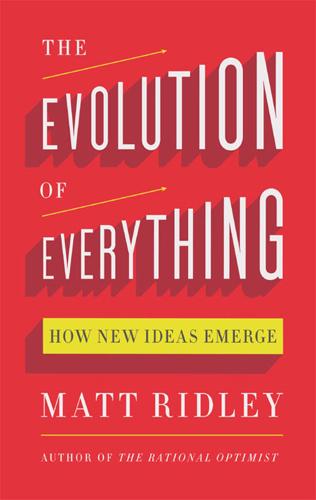
The Evolution of Everything: How New Ideas Emerge
by
Matt Ridley
The End is Near and it’s Going to be Awesome. HarperCollins; Nock, A.J. 1939. The criminality of the state. The American Mercury March 1939; and Morris, Ian 2014. War: What is it Good For?. Farrar, Straus & Giroux. Also Robert Higgs, Some basics of state domination and public submission. Blog.independent.org 27 April 2104. On Ferguson, Missouri, Paul, Rand. We must demilitarize the police. Time 14 August 2014. Balko, Radley 2013. Rise of the Warrior Cop. PublicAffairs. On Lao Tzu, Blacksburg, A. 2013. Taoism and Libertarianism – From Lao Tzu to Murray Rothbard. Thehumanecondition.com. Lord Acton’s letter to Mary Gladstone (24 April 1881), published in Letters of Lord Acton to Mary Gladstone (1913) p. 73.
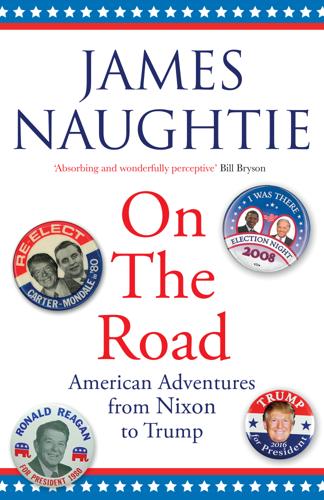
On the Road: Adventures From Nixon to Trump
by
James Naughtie
Published 1 Apr 2020
These are facts of urban life that have deep significance for the country, because in a nation of immigrants, the question of integration and relations between ethnic groups stretches back to its foundation, and permeates all its arguments about itself. Americans today listen to a president who talks about race with an abandon that none of his predecessors in living memory could have imagined – whether about a white supremacist march in Charlottesville, police shootings in Ferguson, Missouri, which produced a string of riots, security on the Mexican border, where he says the nation is under threat, or about ‘sanctuary cities’ (which set themselves up as bulwarks against mass deportation), about which he mused that it might be a good idea to transport illegal immigrants there against their will.

Fallen Astronauts: Heroes Who Died Reaching for the Moon
by
Colin Burgess
and
Kate Doolan
Published 14 Apr 2003
If he performed well on that flight, there was a high probability he would later command his own lunar landing mission and become one of a handful of men to walk on the moon. When he confided this in Jeannie, she could see that he was thrilled, almost beyond words. Charlie Bassett, it seemed, was definitely on his way to the moon. Kenneth Stovall from Ferguson, Missouri, was employed as a company linesman by Union Electric. He was walking through a substation parking lot near the McDonnell Plant when he heard the T-38 approaching from the east. He remembered it descending at "a fairly sharp angle." As he watched, the pilot cut in the afterburners, desperately throwing on extra power.
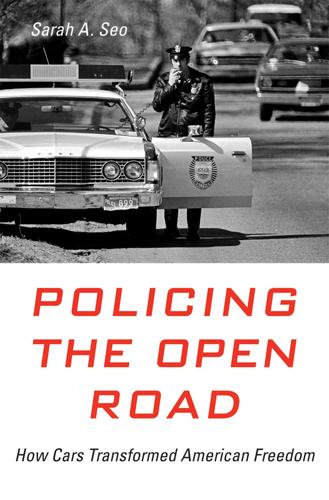
Policing the Open Road
by
Sarah A. Seo
Bland herself had been increasingly vocal on social media against police abuse and violence against African Americans, especially when the Black Lives Matter movement gained momentum after a police officer fatally shot eighteen-year-old Michael Brown. It turned out that what had happened in Ferguson, Missouri, on August 9, 2014, was part of a larger trend. The US Department of Justice opened an investigation of the Ferguson Police Department and found “a pattern of unconstitutional policing” that skewed along racial lines. Most encounters with law enforcement, the report concluded, began with a traffic stop, an experience that disproportionately befell Ferguson’s black residents.

Work Won't Love You Back: How Devotion to Our Jobs Keeps Us Exploited, Exhausted, and Alone
by
Sarah Jaffe
Published 26 Jan 2021
An incredible outpouring of support—donations in small amounts, $5 and $10 and $20—flowed into bail funds and grassroots organizations like Reclaim the Block and the Minnesota Freedom Fund in Minneapolis, organizations that had been working for years. But the experience of organizations in the wake of the previous uprising in Ferguson, Missouri, was instructive; as Princeton professor Keeanga-Yamahtta Taylor wrote, donors came to Black organizations not out of solidarity, but because they were “trying to connect the inherent progressive character of social movements to their ‘brand.’” The scramble for dollars—particularly as they began to dry up—noted Taylor, left organizers competing with one another for scarce funds.

The Coddling of the American Mind: How Good Intentions and Bad Ideas Are Setting Up a Generation for Failure
by
Greg Lukianoff
and
Jonathan Haidt
Published 14 Jun 2018
YEAR MAJOR NEWS STORIES RELATED TO SOCIAL JUSTICE 2009 Inauguration of Barack Obama 2010 Tyler Clementi suicide (raises awareness of bullying of LGBT youth) 2011 Occupy Wall Street (raises awareness of income inequality) 2012 Killing of Trayvon Martin; reelection of Barack Obama; Sandy Hook elementary school massacre (raises interest in gun control) 2013 George Zimmerman acquitted of murder in the death of Trayvon Martin; Black Lives Matter founded 2014 Police killing of Michael Brown in Ferguson, Missouri; police killing of Eric Garner in New York City (with video); Black Lives Matter protests spread across America; lead in drinking water in Flint, Michigan, raises awareness of “environmental justice” 2015 Supreme Court legalizes gay marriage; Caitlyn Jenner publicly identifies as a woman; white supremacist Dylann Roof massacres nine black worshipers in Charleston, South Carolina; Confederate flags removed from state capitol in South Carolina; police killing of Walter Scott (with video); universities erupt in protest over racism, beginning at Missouri and Yale, then spreading to dozens of others 2016 Terrorist Omar Mateen kills forty-nine in attack on gay nightclub in Orlando, Florida; police killing of Alton Sterling (with video); police killing of Philando Castile (with video); killing of five police officers in Dallas; quarterback Colin Kaepernick refuses to stand for national anthem; North Carolina requires transgender people to use bathrooms corresponding to the sex on their birth certificates; protest against Dakota Access Pipeline at Standing Rock Indian Reservation; nomination and election of Donald Trump 2017 Trump inauguration; Trump attempts to enact various “Muslim bans”; women’s march in Washington; violent protests against campus speakers at UC Berkeley and Middlebury; Trump bans transgender people from military service; Trump praises “very fine people” in Charlottesville march, during which a neo-Nazi kills Heather Heyer and injures others by driving a car into a crowd; fifty-eight killed in largest mass shooting in U.S. history in Las Vegas; start of the #MeToo movement, to expose and stop sexual harassment and assault 2018 (through March) Nikolas Cruz, expelled student with history of emotional and behavioral disorders, kills seventeen at high school in Parkland, Florida; students organize school walkouts and marches for gun control across the United States Important, terrifying, thrilling, and shocking events happen every year, but the years from 2012 through 2018 seem like the closest we’ve come to the intensity of the stretch from 1968 to 1972.
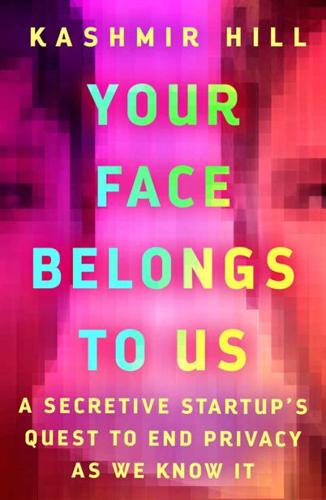
Your Face Belongs to Us: A Secretive Startup's Quest to End Privacy as We Know It
by
Kashmir Hill
Published 19 Sep 2023
In 2014, after a summer fellowship at The Wall Street Journal and a few years reporting for Carlson’s Daily Caller, Johnson launched his own site, GotNews. He had gained notoriety there for, among other things, his theories about Michael Brown, a Black eighteen-year-old shot and killed by a police officer in Ferguson, Missouri. Brown’s death sparked a national uproar amid a building Black Lives Matter movement. The officer claimed that the unarmed Brown had posed a threat to his life. In defense of the officer, Johnson published photos from Brown’s Instagram account that he said suggested a violent streak, and sued unsuccessfully to get Brown’s juvenile court records.

The Way of the Gun: A Bloody Journey Into the World of Firearms
by
Iain Overton
Published 15 Apr 2015
Few politicians want to oppose them, so they are rarely held to account successfully, and, despite a growing media focus on their actions, no one seems to be effectively restricting their powers. Instead, America just keeps arming its law enforcement officers with military-grade equipment. It was something that was glaringly obvious on the streets of Ferguson, Missouri, in the summer of 2014. When Michael Brown, an unarmed black teenager, was shot and killed on August 9 by Darren Wilson, a white police officer, protests riled the area for weeks. The world looked on as the streets of an American town seemed to descend into a war zone – masked police with tear gas, beanbag rounds, flash grenades and rubber bullets descended on Ferguson.
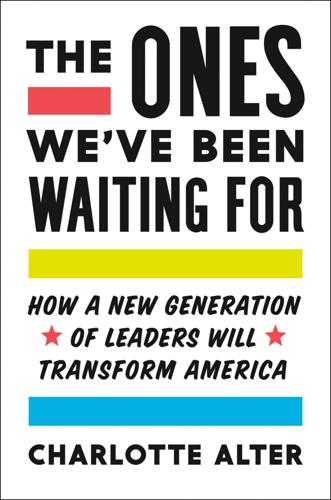
The Ones We've Been Waiting For: How a New Generation of Leaders Will Transform America
by
Charlotte Alter
Published 18 Feb 2020
But Black Lives Matter activists were more interested in what they called a “leaderful” movement, like Occupy Wall Street, where no single person called the shots. There was such a distaste for what Garza called “the model of the black preacher leading people to the promised land” that when Rev. Jesse Jackson tried to address protesters after the shooting of Michael Brown in Ferguson, Missouri, he was booed. “Organizations that are led by one person are very vulnerable,” Garza told me. “If there are many leaders, you can’t compromise a movement and you can’t kill it. If there’s one leader, it’s very easy to neutralize.” First through Occupy and then through Black Lives Matter, millennials were beginning to seek political change through movements rather than through individuals.

The Contrarian: Peter Thiel and Silicon Valley's Pursuit of Power
by
Max Chafkin
Published 14 Sep 2021
Senator Ted Cruz, and John Yoo, the lawyer who’d advocated on behalf of the Bush administration for torture during the Iraq War, all provided quotes endorsing it. He eventually started his own site, GotNews, a sort of Gawker for the right, where he stoked a backlash against Michael Brown, the eighteen-year-old Black man who was shot while unarmed by a police officer in Ferguson, Missouri, setting off a wave of Black Lives Matter protests. Johnson sued St. Louis County for any juvenile court records it might have on Brown—the request was denied because, the judge said, no records of serious felonies existed—and collected screenshots that purported to show the slain man’s “violent streak.”
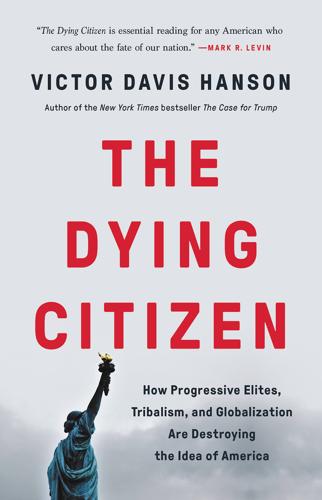
The Dying Citizen: How Progressive Elites, Tribalism, and Globalization Are Destroying the Idea of America
by
Victor Davis Hanson
Published 15 Nov 2021
.… They literally know nothing.”69 Meanwhile MSNBC anchor Brian Williams castigated the idea of a so-called fake news epidemic. Yet Williams failed to remind us that he was removed as NBC’s evening news anchor for serving up all sorts of false details about his supposedly brave trips abroad in search of edgy news stories. Even worse, after the fatal shooting of Michael Brown in Ferguson, Missouri, the cohosts of the show CNN Newsroom collectively put up their hands in “don’t shoot” solidarity with the progressive narrative of unjustified police killing, which a lengthy federal investigation conducted by the Obama administration later proved completely false. Earlier, decades-long journalistic one-sidedness was apparently viable when there were no other news alternatives.
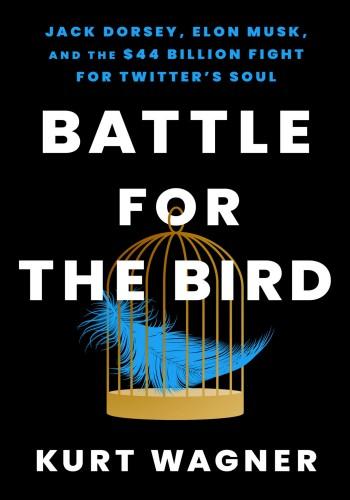
Battle for the Bird: Jack Dorsey, Elon Musk, and the $44 Billion Fight for Twitter's Soul
by
Kurt Wagner
Published 20 Feb 2024
But his tweets were also morally repugnant and offensive to most Twitter employees who were proud to work for a company that was openly focused on improving diversity and social issues. Twitter had resource groups for Black, Latin, and LGBTQ employees and set public hiring goals to diversify the company’s workforce; Dorsey, the CEO, wore T-shirts emblazoned with the hashtag #StayWoke, and had marched a few years prior in Ferguson, Missouri, after police officers there shot and killed an eighteen-year-old black man, Michael Brown. One of Dorsey’s friends, DeRay Mckesson, was an unofficial leader of the Black Lives Matter movement; when he was arrested during a protest in the summer of 2016, Dorsey emailed the company with pictures of Mckesson being handcuffed in a #StayWoke Twitter T-shirt.

Data and Goliath: The Hidden Battles to Collect Your Data and Control Your World
by
Bruce Schneier
Published 2 Mar 2015
All over the US, police harass and prosecute people who videotape them, and some jurisdictions have ruled it illegal. Cops in Chicago have deliberately obscured cameras, apparently attempting to conceal their own behavior. The San Diego Police Department denies all requests for police videos, claiming that they’re part of ongoing investigations. During the 2014 protests in Ferguson, Missouri, after the police killed an unarmed black man, police routinely prevented protesters from recording them, and several reporters were arrested for documenting events. Los Angeles police even went so far as to sabotage court-mandated voice recorders in their patrol cars. Governments and corporations routinely resist transparency laws of all kinds.

Connectography: Mapping the Future of Global Civilization
by
Parag Khanna
Published 18 Apr 2016
Far more radical proposals have been offered to restore the city to its previous size and sense of purpose: making it a tax-free zone, creating a Detroit-only visa for hardworking Latin and Asian immigrants, and giving Detroit to Canada, which provides a much larger federal share (approximately 20 percent) of city budgets than America does (less than 10 percent). Dozens of other cities are also on life support, in deep debt, and without viable business models. Fiscal stress makes municipal welfare a token gesture at best. Many of these cities are also so deeply divided by wealth and race that they have become tinderboxes—the 2014 Ferguson, Missouri, riots were only the most widely reported episode. They are so poor and unequal they should be treated like underdeveloped countries.9 Washington is haphazardly helping them pay for police officers and commuter buses, backing bonds to cover pensions, and offering investment rebates and tax credits for job creation and business start-ups.
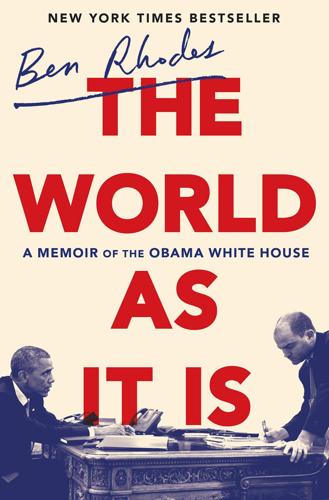
The World as It Is: A Memoir of the Obama White House
by
Ben Rhodes
Published 4 Jun 2018
These trips could go either way—a paid vacation with the president, or a nightmare of nonstop work with a skeleton staff. On the Saturday that we boarded Air Force One for the Vineyard, the United States began air strikes on ISIL targets, and a young African American named Michael Brown was killed by a police officer in Ferguson, Missouri. This was not going to be a vacation. Obama was staying at a large rental house on the other side of the island, an hour’s drive from the staff. When we got to our hotel, Ann and I were shown to a small, dark room on the ground floor with twin beds. “I’m not staying here,” she said. She didn’t even sit down.
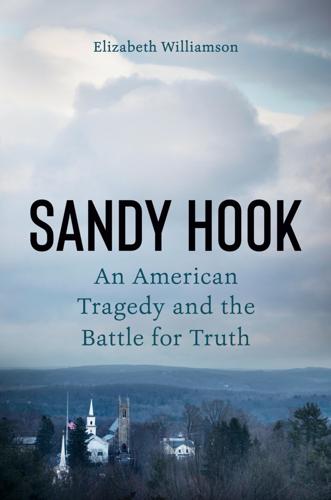
Sandy Hook: An American Tragedy and the Battle for Truth
by
Elizabeth Williamson
Published 8 Mar 2022
* * * — Owen Shroyer had followed a path to Infowars that originated in conventional radio, then veered off through the muck of partisan social media. Josh Owens, the young Infowars cameraman who abandoned film school to join Infowars in 2012, had met Shroyer during the turbulent summer of 2014, when the fatal shooting of Michael Brown by a Ferguson, Missouri, police officer sparked days of demonstrations that grew into a national movement. The two men were both in their mid-twenties and looking to make a name for themselves. Owens had traveled to Ferguson from Austin, along with Joe Biggs and other Infowars colleagues. Owen Shroyer was the entertaining local yokel.
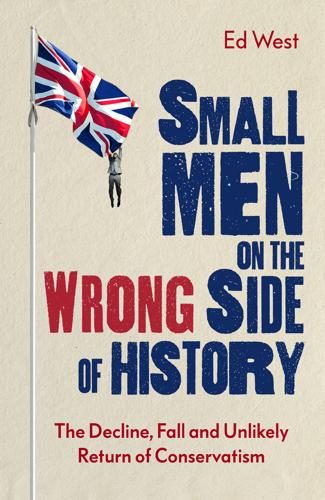
Small Men on the Wrong Side of History: The Decline, Fall and Unlikely Return of Conservatism
by
Ed West
Published 19 Mar 2020
That’s all gone, obviously, and more recently the group has campaigned for members of al-Qaida, which is not exactly a non-violent organisation.9 In 2011 Amnesty also ‘produced a 1,000-page legal brief aimed at persuading the authorities in Canada to arrest the former US president George W. Bush’ for invading Iraq. The group were now heavily involved in the issue of gun control as well as ‘LGBT rights; gender issues; migrant rights; surveillance; policing in Ferguson, Missouri; and access to emergency contraception.’10 Amnesty is now also involved in what it calls ‘economic rights’ so that, as a staff member said, they ‘could assess whether a country has adequately mobilised resources for public services’. Naturally it’s also entered the trans debate, issuing a press release complaining that government registrations only offer the options of male or female, and children are not allowed to change sex and so are ‘completely excluded’ because they have to wait until eighteen to have ‘their true gender legally validated’.11 I mean, it’s not quite the same as being held in the Lubyanka is it?

The Land of Hope and Fear: Israel's Battle for Its Inner Soul
by
Isabel Kershner
Published 16 May 2023
Then, in 2012, after a number of ugly racist episodes made national headlines, second-generation activists who had grown up in Israel, professionals among them, spent months protesting on the sidewalk outside the prime minister’s residence in Jerusalem. There was the story of four buildings in Kiryat Malachi whose residents had signed an agreement not to rent or sell apartments to Ethiopians, telling television crews that the Ethiopians smelled bad and ate strange food. Three years after that, soon after riots erupted in Baltimore and Ferguson, Missouri, triggered by the killing of unarmed Black men by police, Ethiopian Israelis blocked main junctions and routes in Tel Aviv after two police officers were caught on a street-side security camera beating up Demas Fikadey, a young soldier of Ethiopian descent in uniform, for no apparent reason.

The Quiet Coup: Neoliberalism and the Looting of America
by
Mehrsa Baradaran
Published 7 May 2024
The market has reached the end point of commodities extraction and the end point as well of a certain form of white mathematical genius (for example, Lawrence Summers or Sam Bankman-Fried). It is time to actually consider investing in different sources of value—who knows what kind of genius will emerge out of the educated women of Afghanistan, or the children of rural Appalachia and Ferguson, Missouri? Any venture capitalist or angel investor looking to invest in “outside the box” innovations or disruptive unicorns must themselves be able to look for talent outside the standard pipelines and their self-reproducing metrics. Having marinated for so long in racist mythology and political corruption, the market will continue to heap future rewards on past winners.
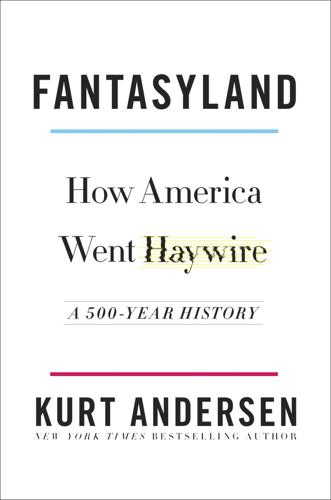
Fantasyland: How America Went Haywire: A 500-Year History
by
Kurt Andersen
Published 4 Sep 2017
In an on-air conversation with Noam Chomsky, a towering intellectual avatar of the far left, the men agreed that the elite imposes an illusion of consent on the people, that U.S. elections are mostly meaningless, that the Democrats and Republicans (as Chomsky remarked) are really just “two factions of one party.” During the protests in Ferguson, Missouri, in 2014, he said that the National Guard was “clearly being given orders to brutalize the press…and to threaten to kill the press.” “You’re one of the only prominent leaders,” he told Louis Farrakhan during their conversation in 2016, “that addresses that there is a conspiracy…[of] the power elite.”
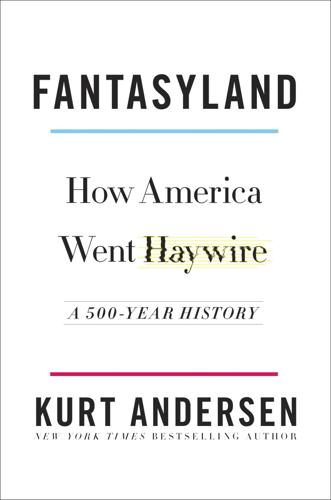
Fantasyland
by
Kurt Andersen
Published 5 Sep 2017
In an on-air conversation with Noam Chomsky, a towering intellectual avatar of the far left, the men agreed that the elite imposes an illusion of consent on the people, that U.S. elections are mostly meaningless, that the Democrats and Republicans (as Chomsky remarked) are really just “two factions of one party.” During the protests in Ferguson, Missouri, in 2014, he said that the National Guard was “clearly being given orders to brutalize the press…and to threaten to kill the press.” “You’re one of the only prominent leaders,” he told Louis Farrakhan during their conversation in 2016, “that addresses that there is a conspiracy…[of] the power elite.”
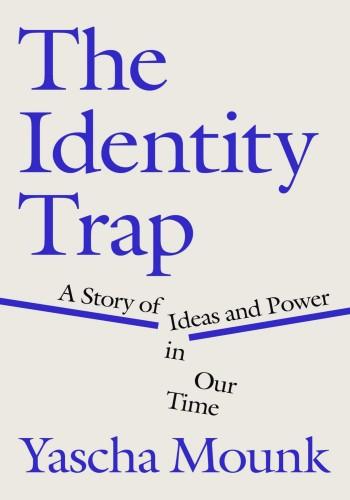
The Identity Trap: A Story of Ideas and Power in Our Time
by
Yascha Mounk
Published 26 Sep 2023
_144938613_ * It’s tempting to think that the growing attention to racism was simply driven by political events, from videos capturing police killings of unarmed Black men to the infamous Unite the Right rally in Charlottesville, Virginia. But Goldberg shows that exponential growth in the use of terms like “racist” began at the beginning of the 2010s, before the popular contestation over the 2014 police shooting of Michael Brown in Ferguson, Missouri, and Donald Trump’s 2015 entry into American politics. * In this chapter, I will refer to claims widely embraced by feminist philosophers as standpoint epistemology. I will refer to the popularized and often more radical version of these claims—which are much more influential in activist circles and mainstream institutions, and constitute the main subject of this chapter—as standpoint theory
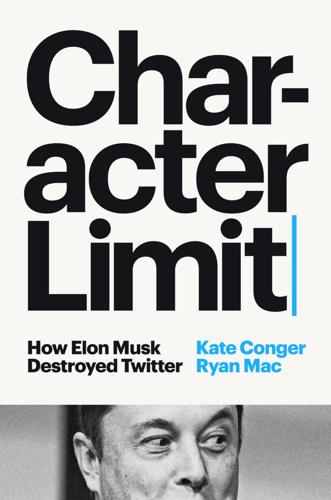
Character Limit: How Elon Musk Destroyed Twitter
by
Kate Conger
and
Ryan Mac
Published 17 Sep 2024
Dorsey, clean-shaven in a crisp white shirt and black suit jacket, beamed as Twitter celebrities including the actor Sir Patrick Stewart rang the bell at the New York Stock Exchange, launching his company onto the public market. 2 > #StayWoke On the muggy afternoon of August 9, 2014, in Ferguson, Missouri, two teenagers strolled down a winding road that ran through the center of a low-slung Midwest development. Tan apartments with wooden balconies stood on either side, offering little shade. A patrol car rolled up alongside them, and the officer inside told the boys to get out of the road and walk on the sidewalk instead.
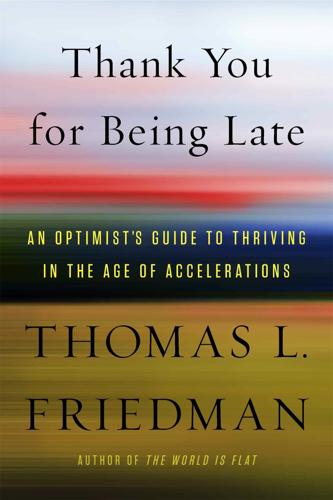
Thank You for Being Late: An Optimist's Guide to Thriving in the Age of Accelerations
by
Thomas L. Friedman
Published 22 Nov 2016
The high school has a student council that is predominantly white, but it also has a black male leadership group, a female leadership group, a Latino one, and an African–Middle Eastern one. “These groups meet every other week and talk about their responsibility to the school,” said Meyers. “They elect captains and if they have a grievance they come and see me.” In the wake of the police shooting in Ferguson, Missouri, students staged a walkout and created a group called Students Organizing Against Racism, or SOAR. “If kids have a voice, with mentoring from teachers, it can make a huge difference,” said Meyer. “They cannot be coming to a school and feeling like they are visiting someone else’s school.” Metz remarked that when he was the high school principal he got to “talk to a lot of seniors when they go out the door and almost always their biggest regret is that they didn’t mix with more kids.

This Is How They Tell Me the World Ends: The Cyberweapons Arms Race
by
Nicole Perlroth
Published 9 Feb 2021
Ukrainians discovered the plot just before the results were reported to Ukraine’s media. Election security experts called it the most brazen attempt to manipulate a national election in history. In retrospect, this should have all set off louder alarm bells in the United States. But in 2014, Americans’ gaze was elsewhere: the violence in Ferguson, Missouri; the horrors of ISIS and its seeming emergence out of nowhere; and, on my beat, the North Korean hack of Sony Pictures that December, when Kim Jong-un’s hackers exacted revenge on the movie studio for a Seth Rogen–James Franco comedy depicting the assassination of their Dear Leader. North Korean hackers torched Sony’s servers with code, then selectively released emails to humiliate Sony executives in an attack that offered Putin the perfect playbook for 2016.

Free Speech: Ten Principles for a Connected World
by
Timothy Garton Ash
Published 23 May 2016
If, due to some small change in the algorithm, ‘Bates Motel + Fairvale’ disappears from the top 10 results, that could be the commercial kiss of death for that delightful hostelry. The internet scholar Zeynep Tufekci argues that Facebook’s News Feed algorithm unintentionally buried news of the first days of protests against the killing of a black youth by a white policeman in the town of Ferguson, Missouri, in summer 2014.51 The psychologist Robert Epstein, an outspoken critic of Google, goes further, talking of a search engine manipulation effect. In a study conducted with 1,800 undecided voters in India’s 2014 parliamentary election, he claimed to have shifted votes by an average of 12.5 percent to particular candidates simply by improving their placings in search results found by the individual voter.52 An extreme example of algorithmic choice could be provided by Google’s computer-driven car.
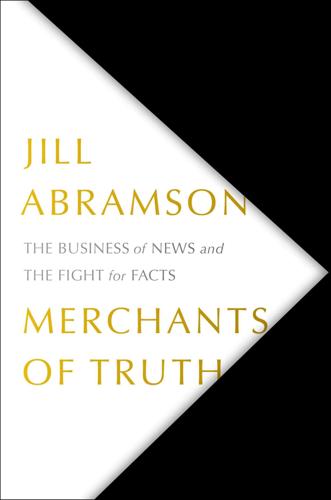
Merchants of Truth: The Business of News and the Fight for Facts
by
Jill Abramson
Published 5 Feb 2019
A true endorsement from the media establishment came in 2008, when YouTube won a Peabody, broadcasting’s most prestigious award, for “promoting a free exchange of ideas” in a way that “both embodies and promotes democracy.” The earthquake in Nepal, the Charlie Hebdo shootings in Paris, and popular uprisings like the Green Revolution, the Arab Spring, and the protests in Ferguson, Missouri, could be seen on YouTube almost as they unfolded, from the unprocessed point of view of those present. Cell phone videos of police violence, uploaded to YouTube, were transforming the criminal justice system. And there wasn’t just news content: by mid-2010 the site was attracting a viewership nearly double the combined primetime audience of America’s three biggest TV networks.